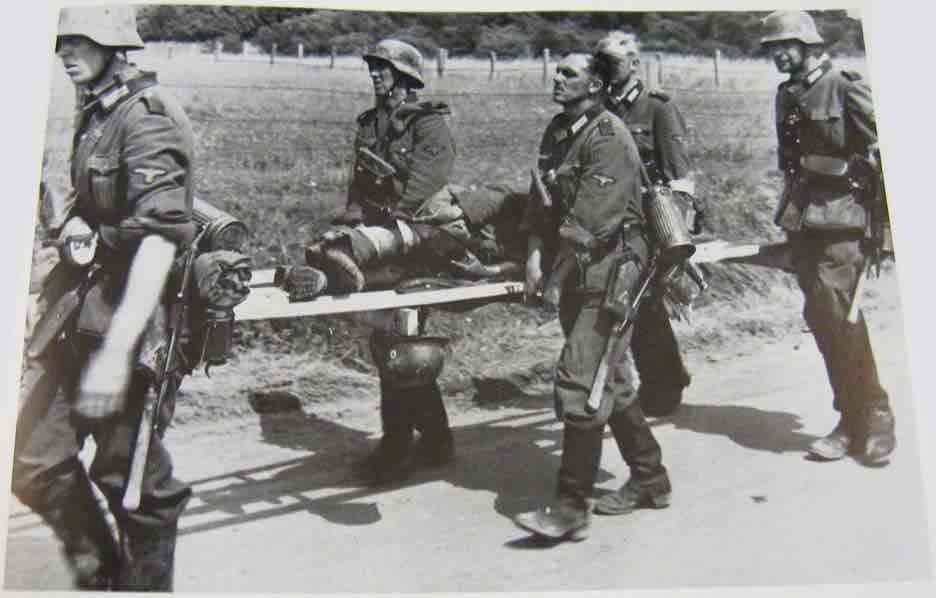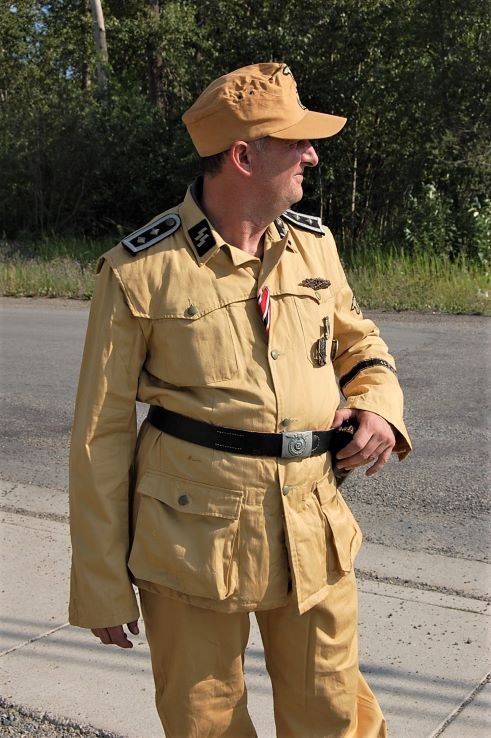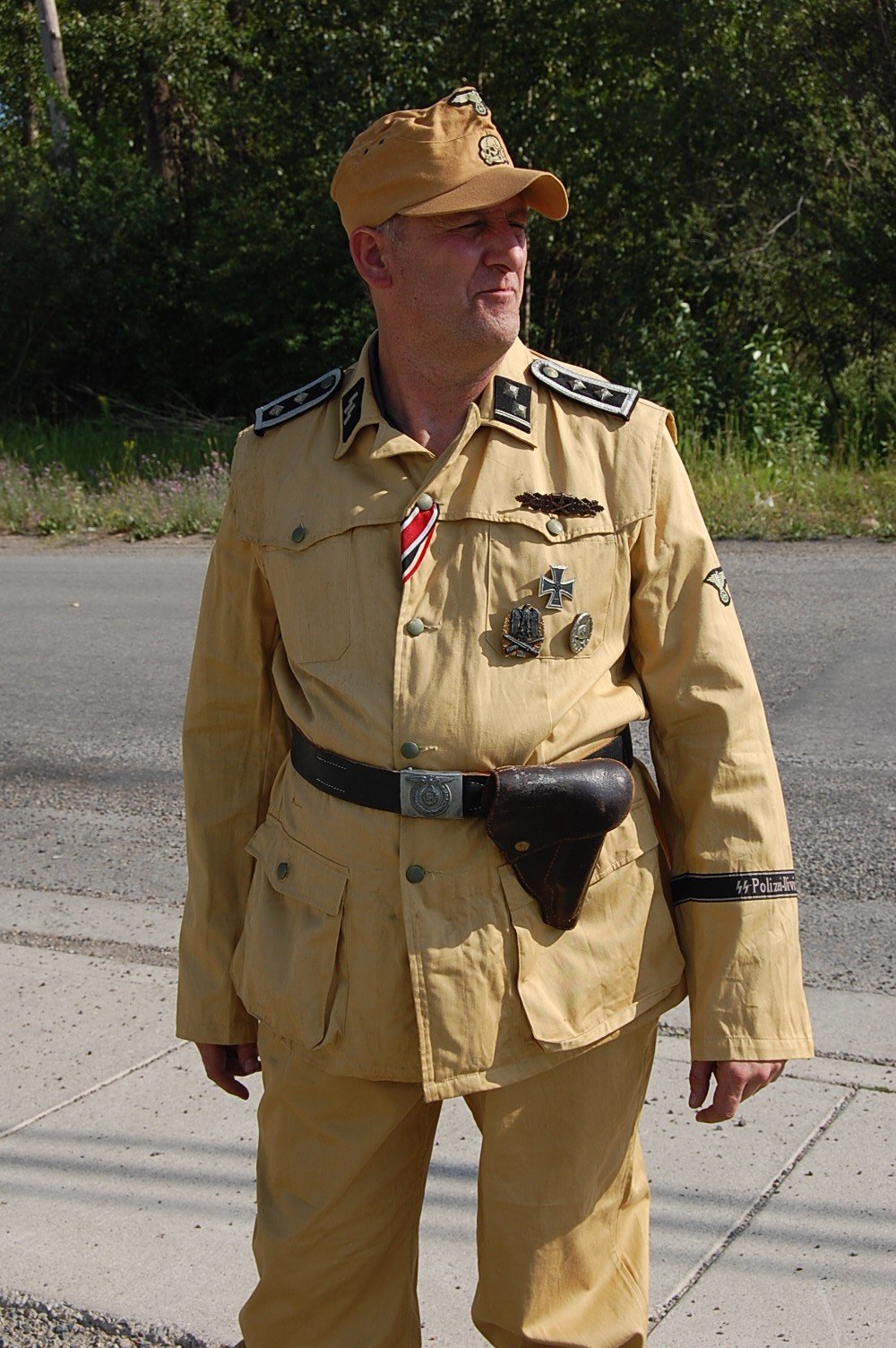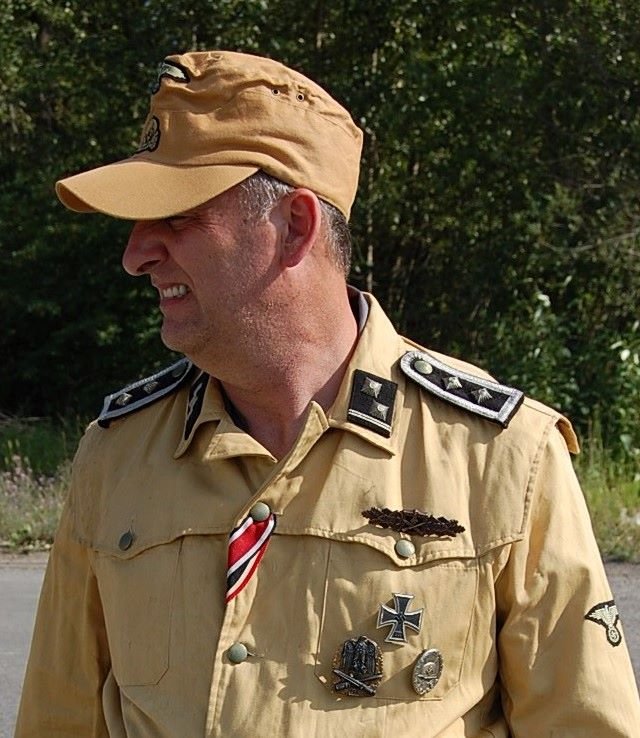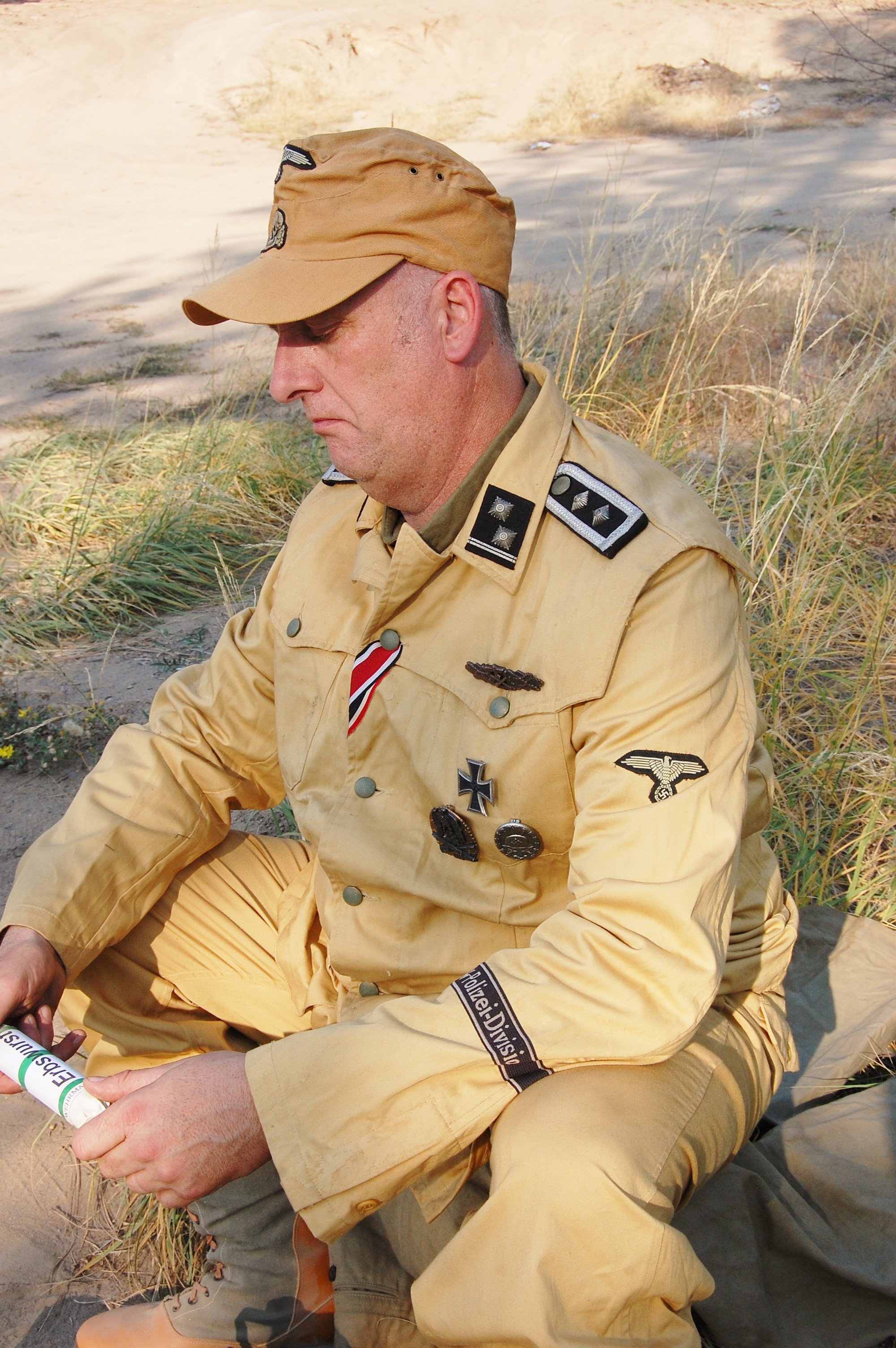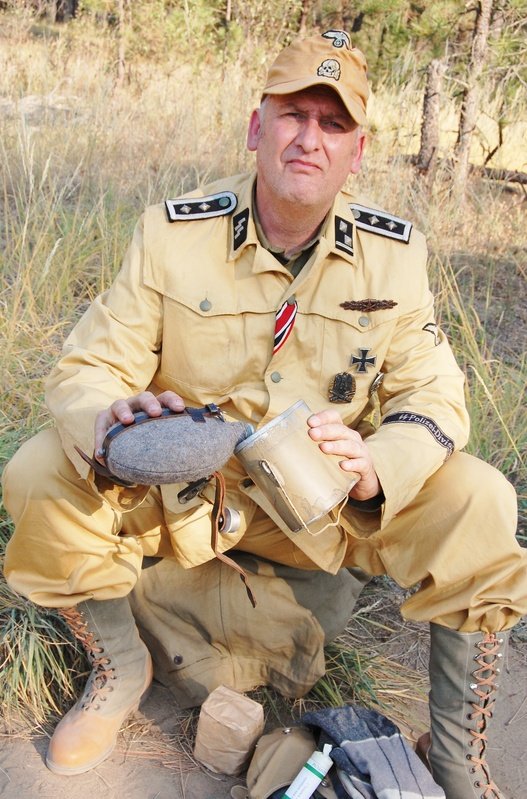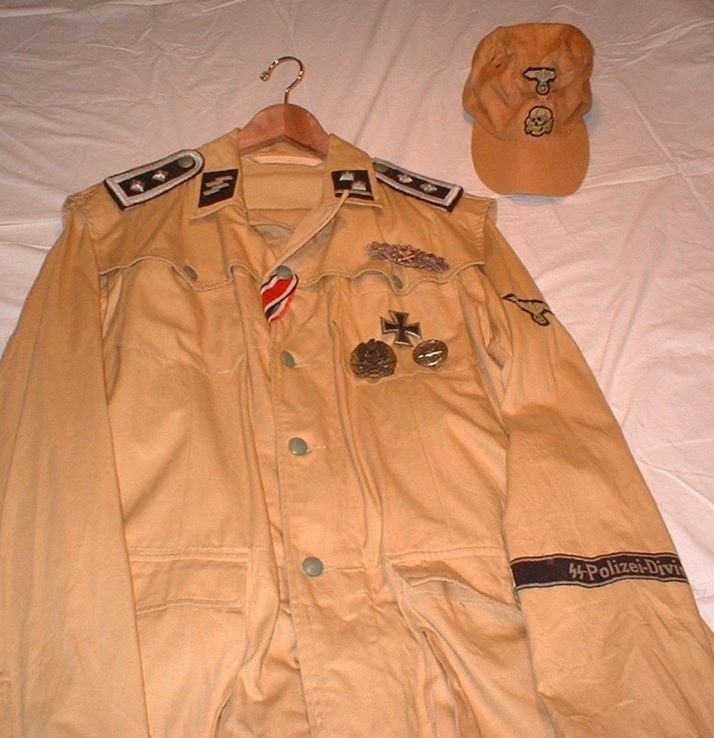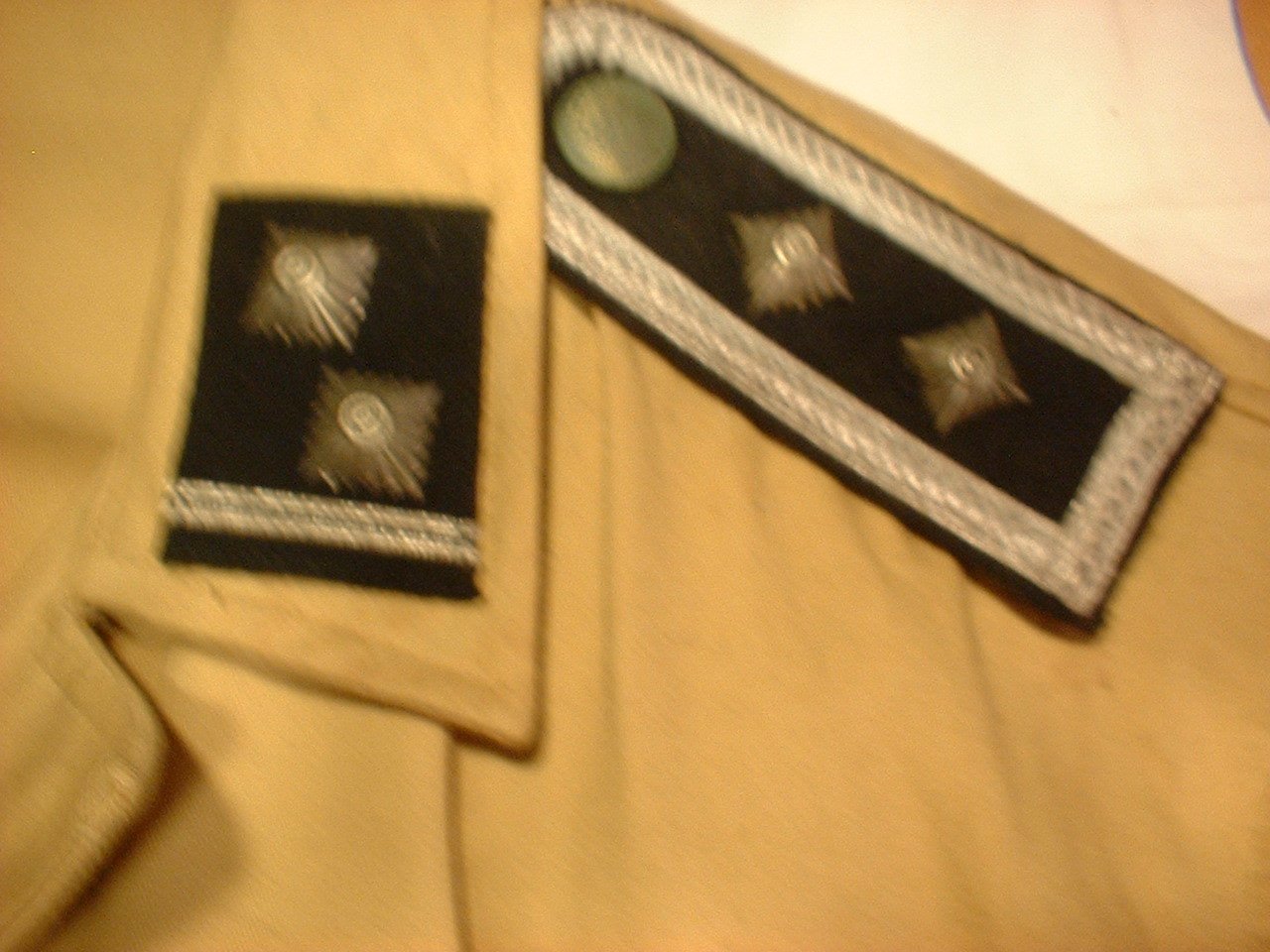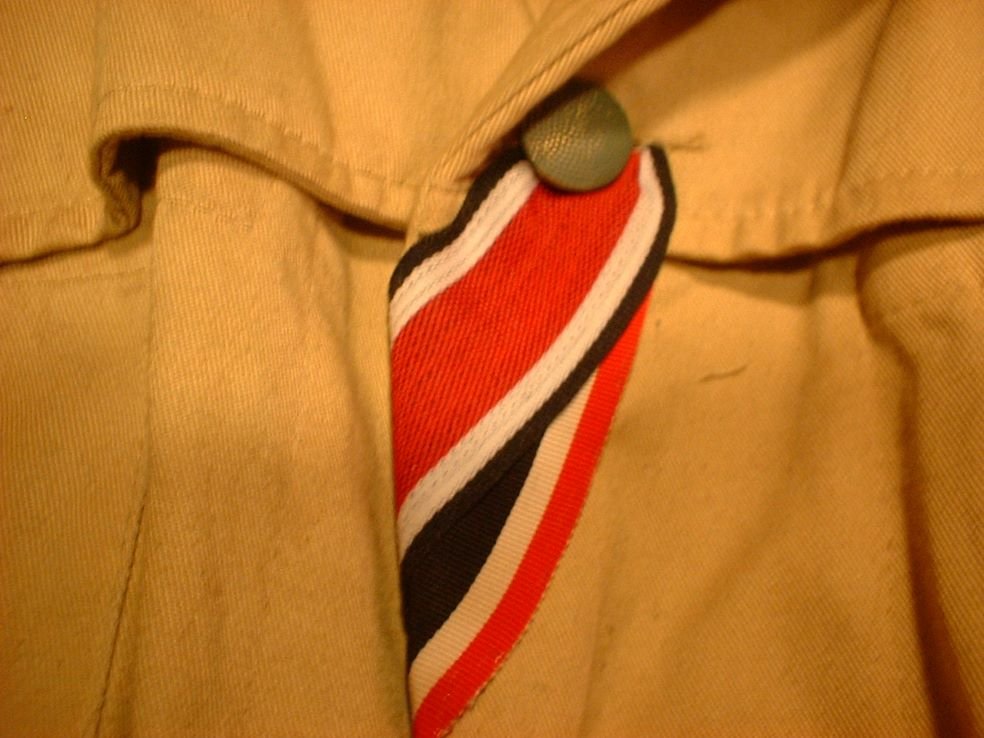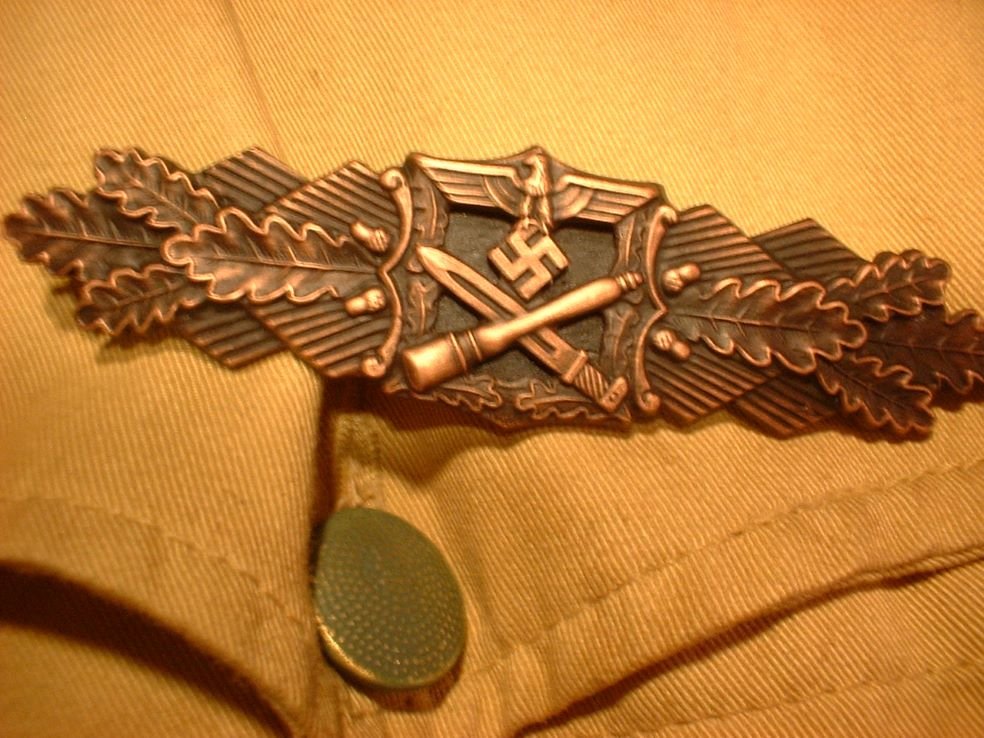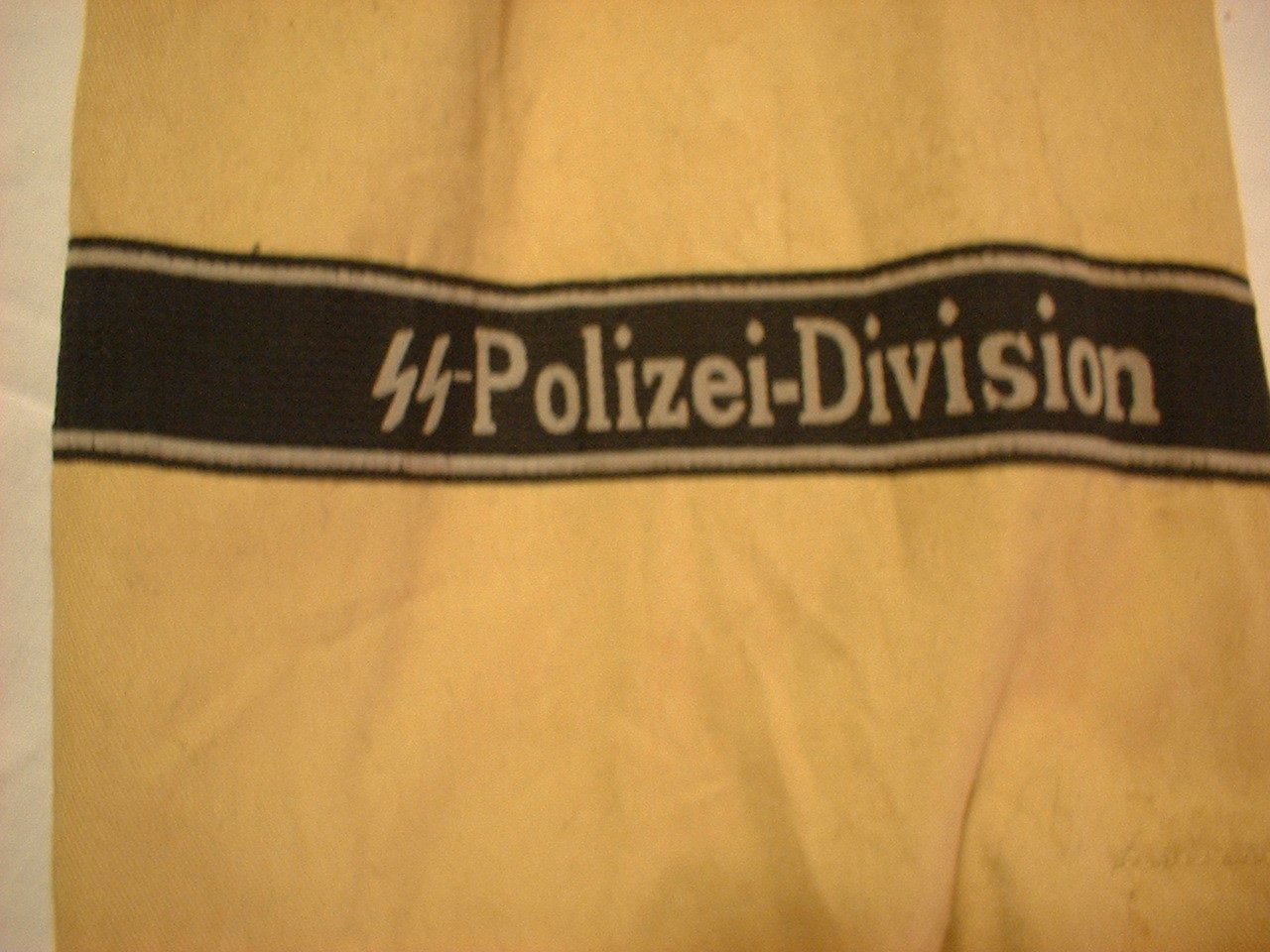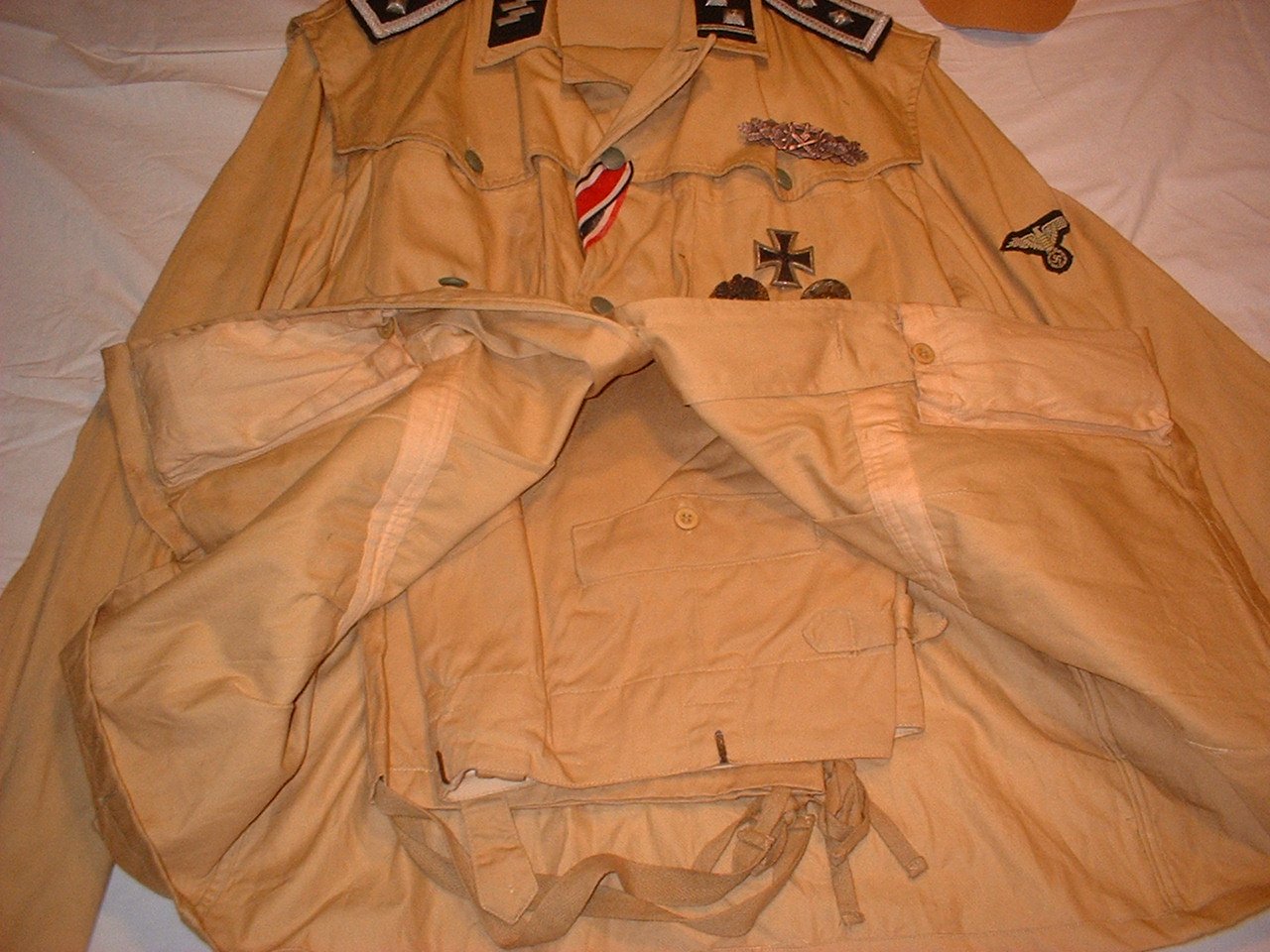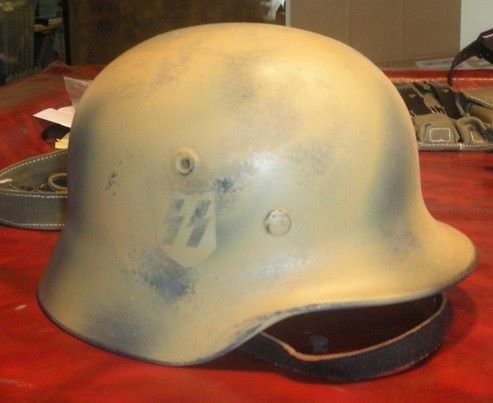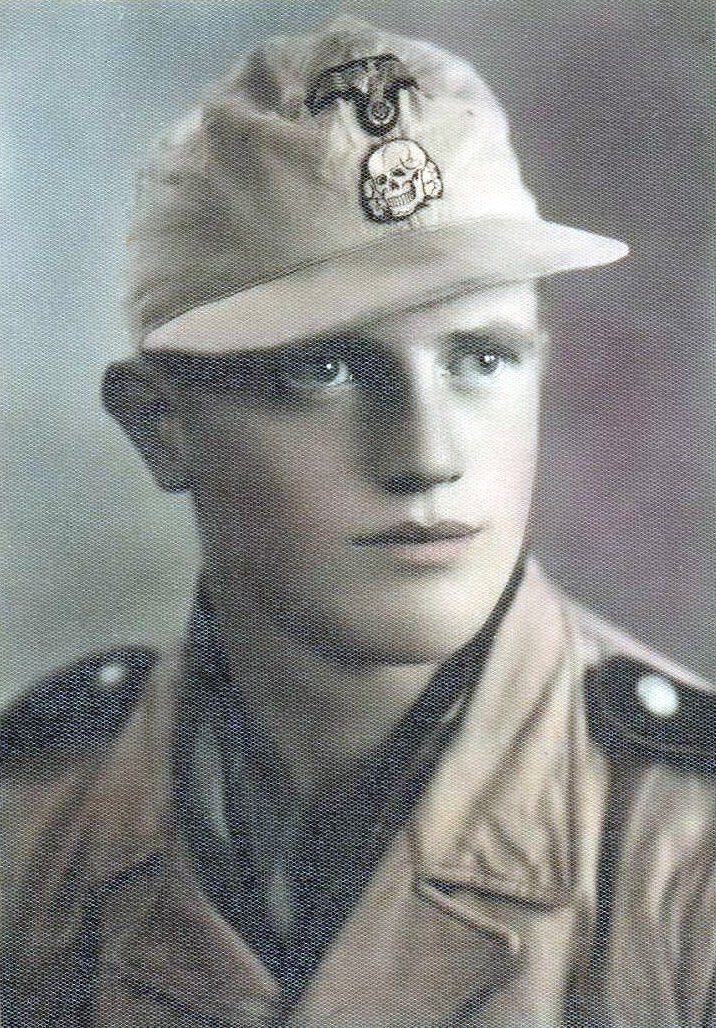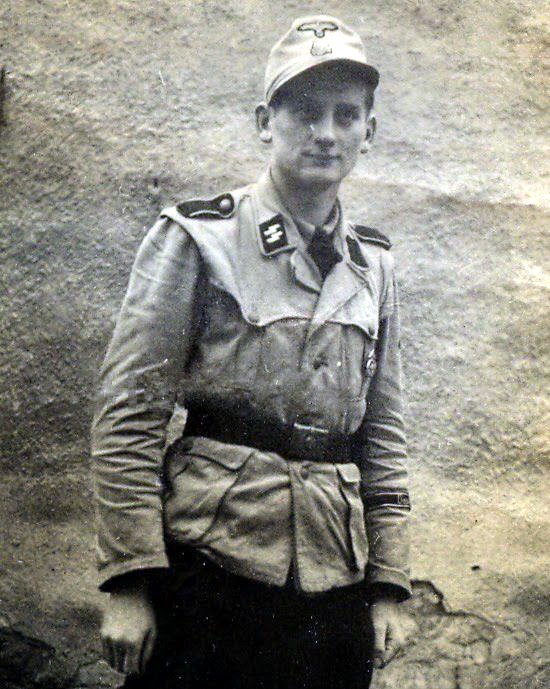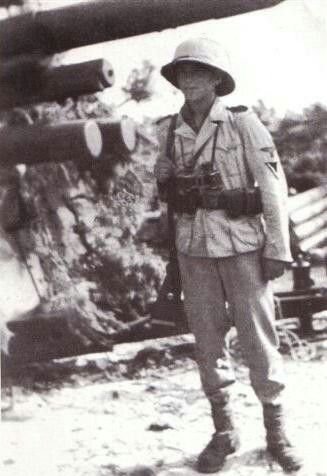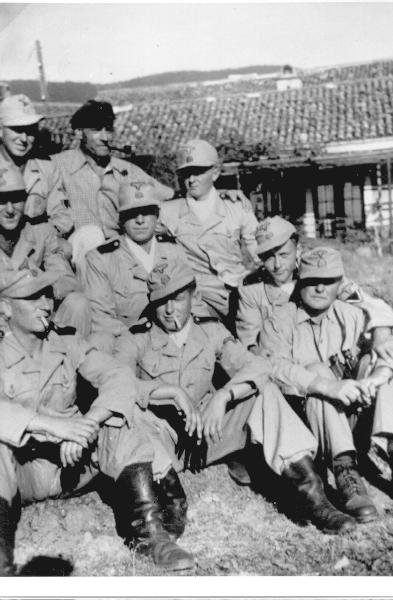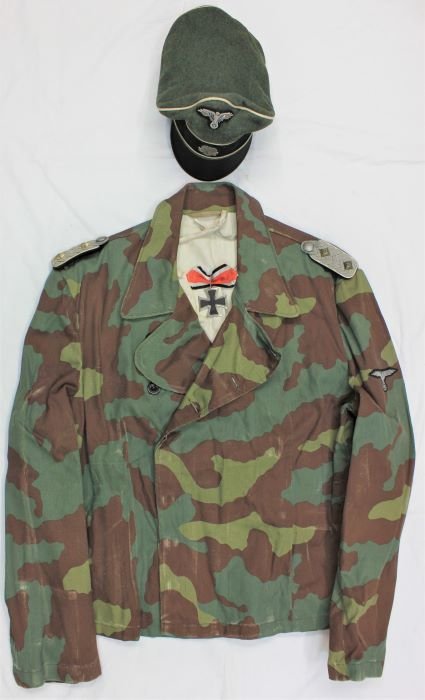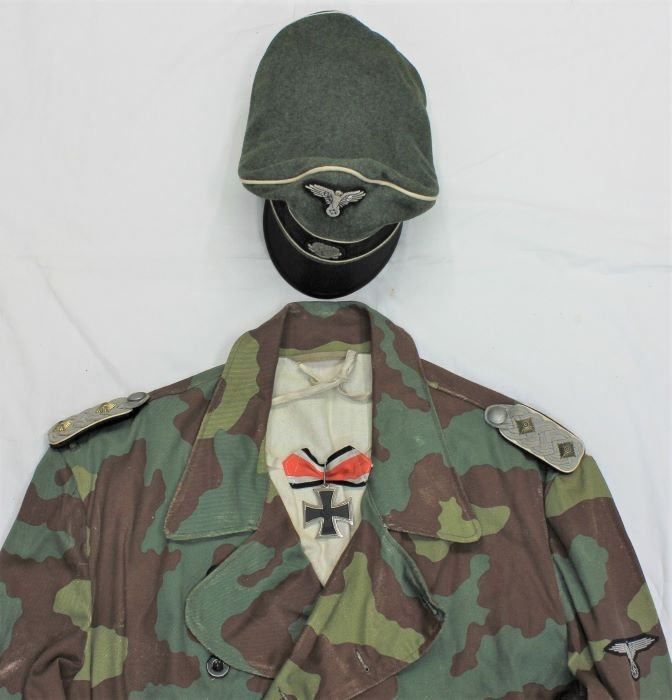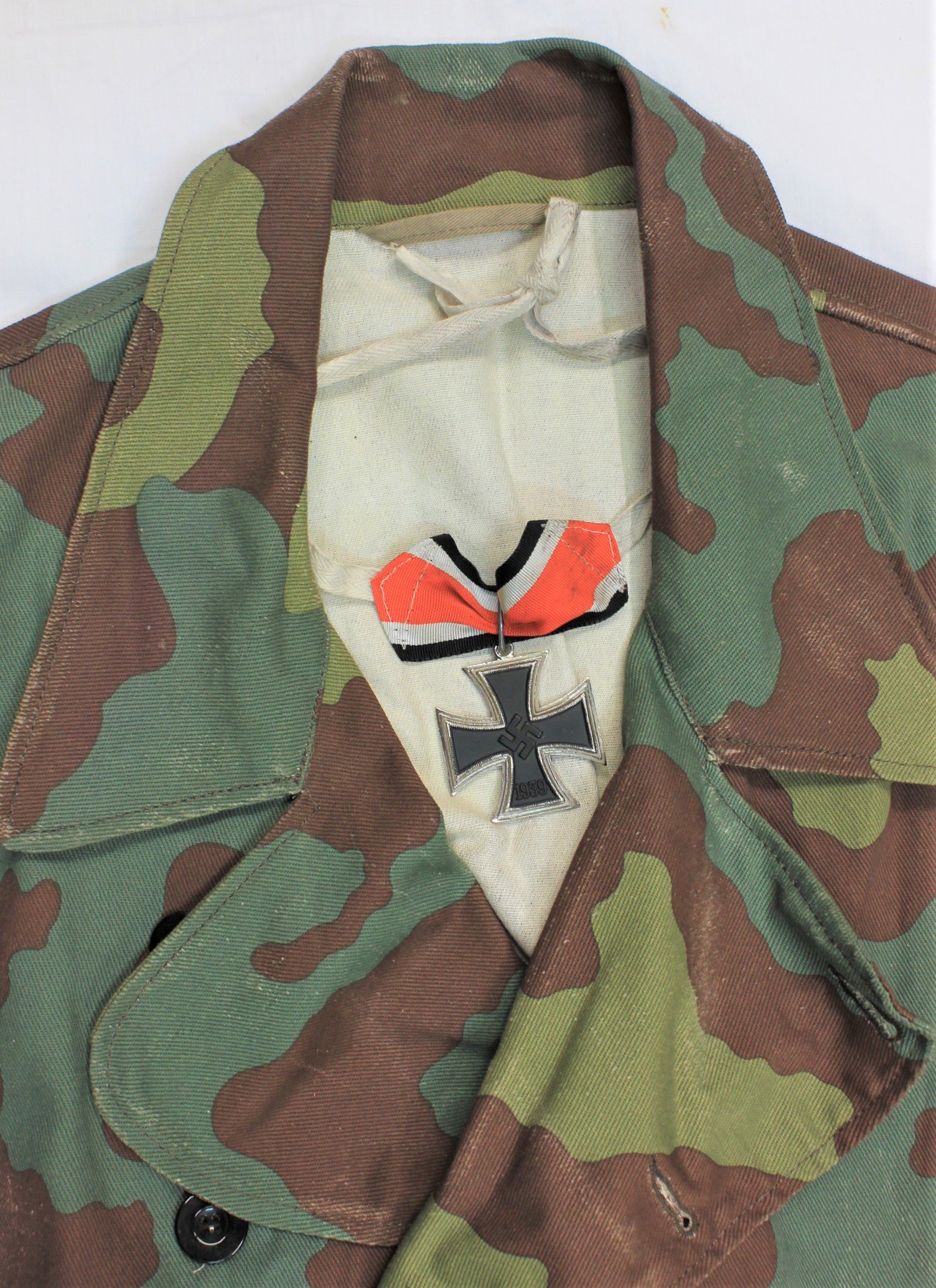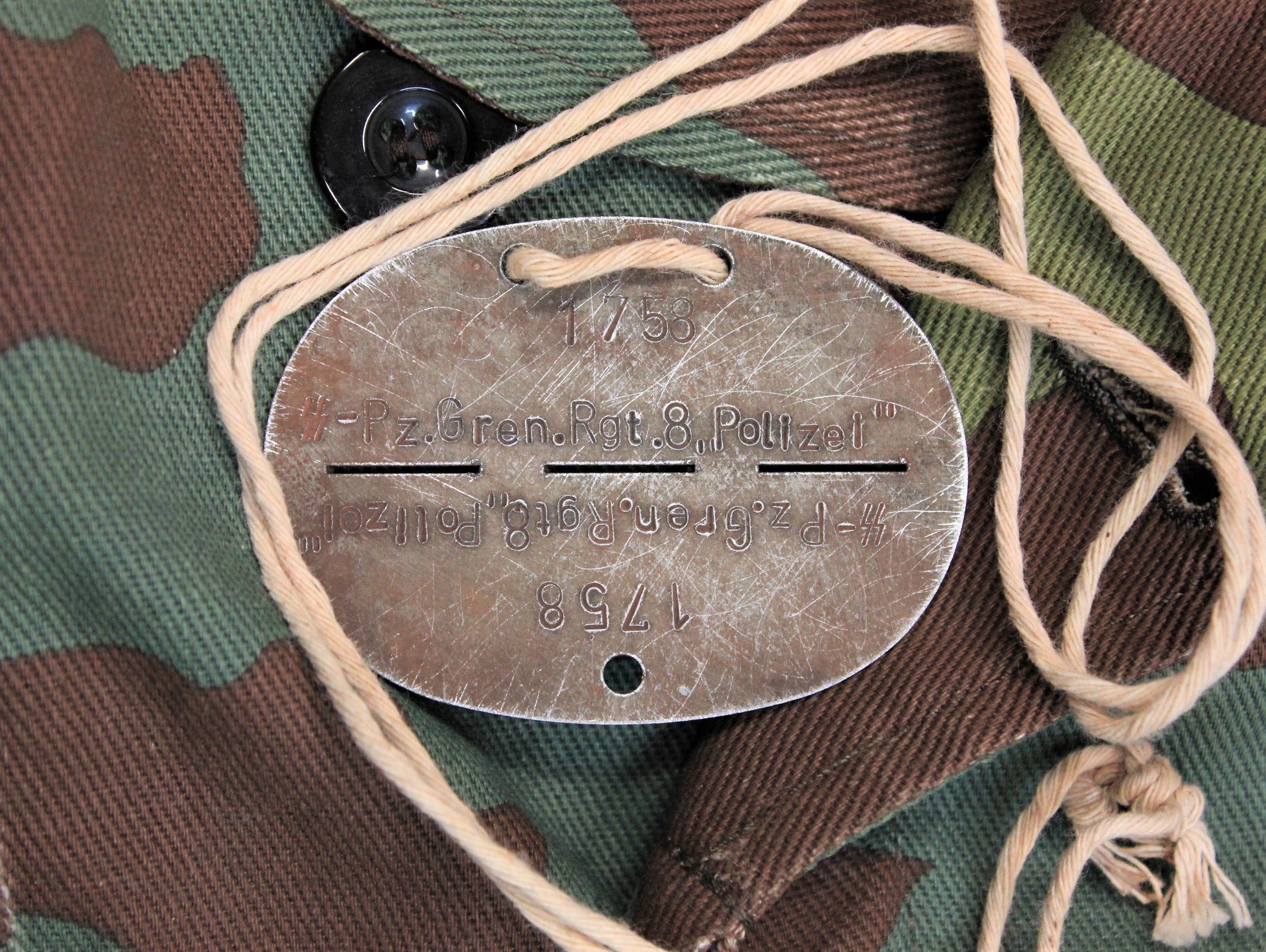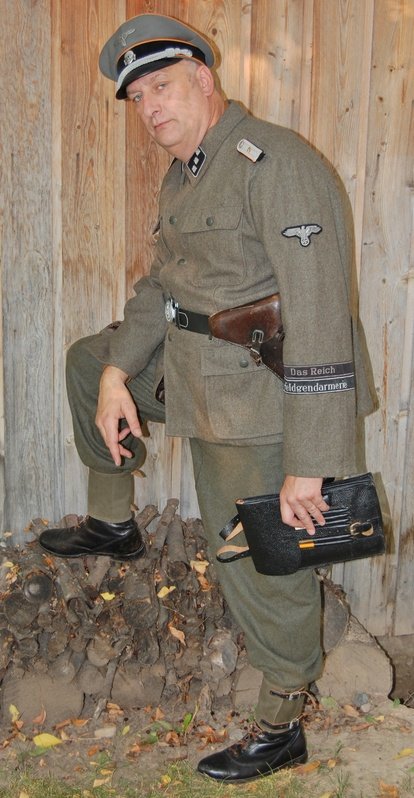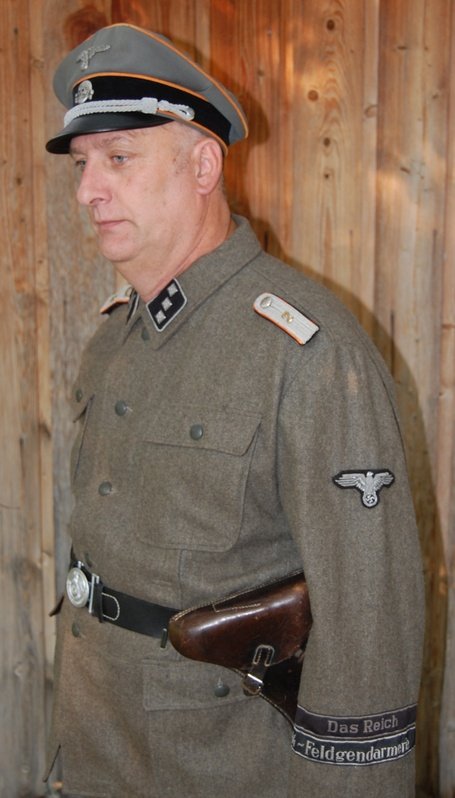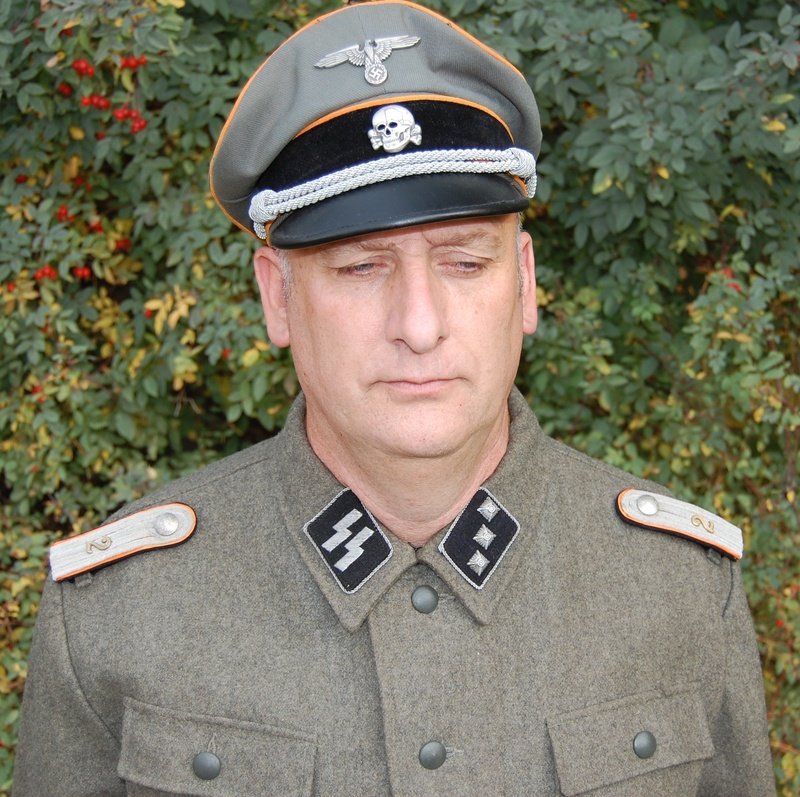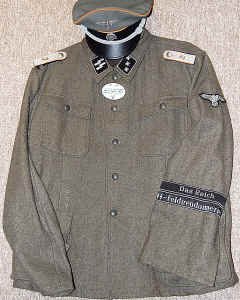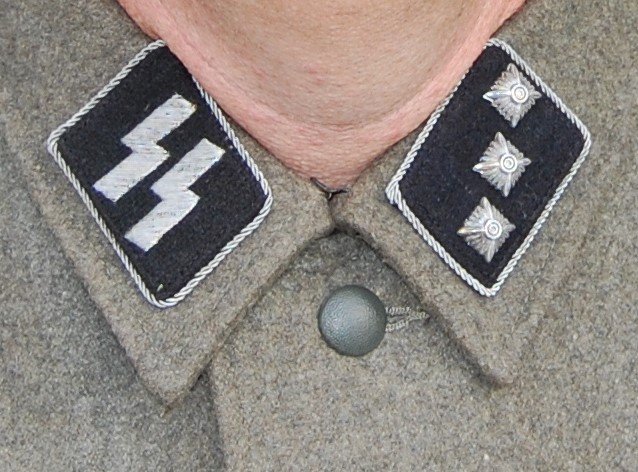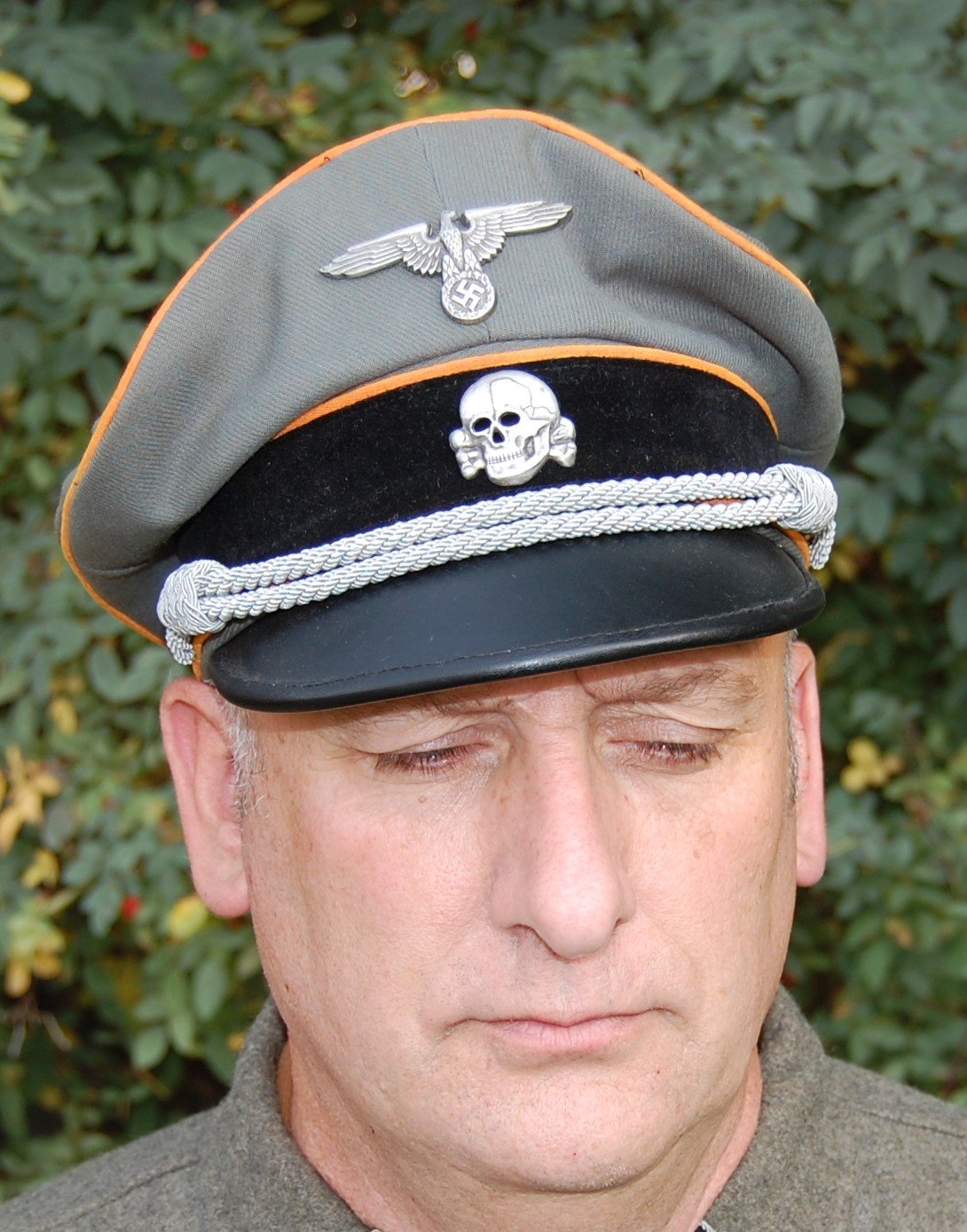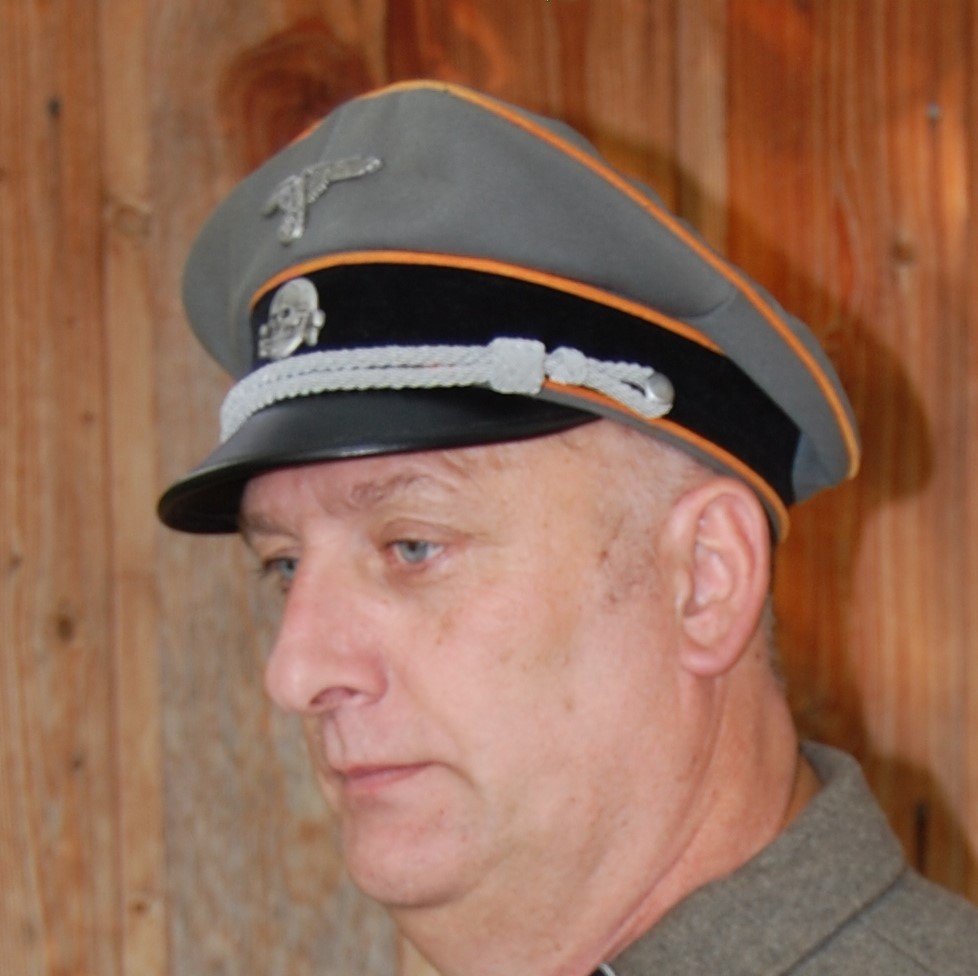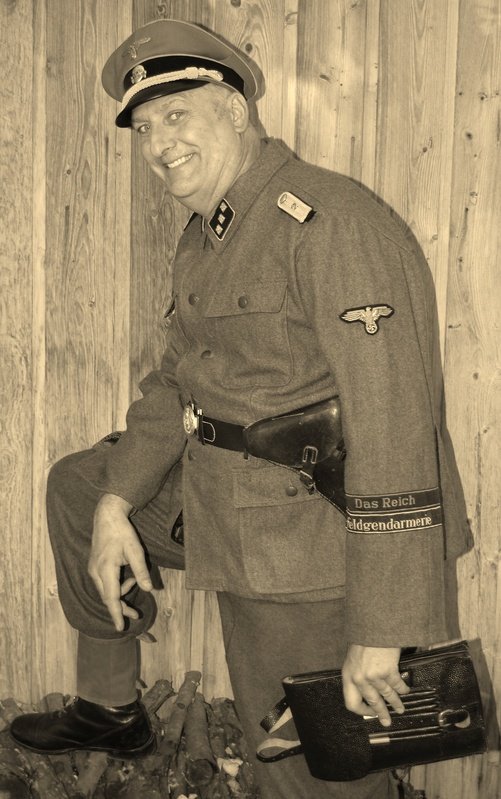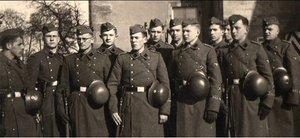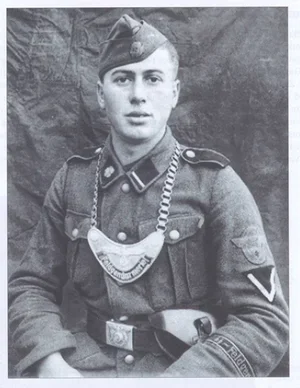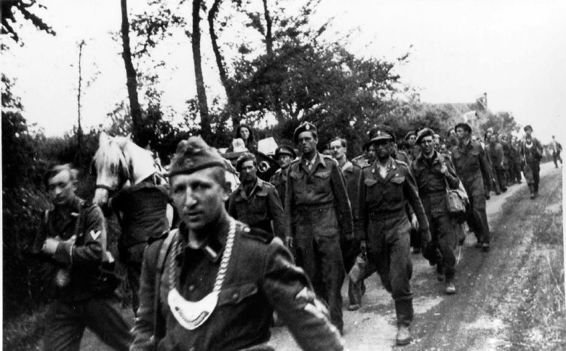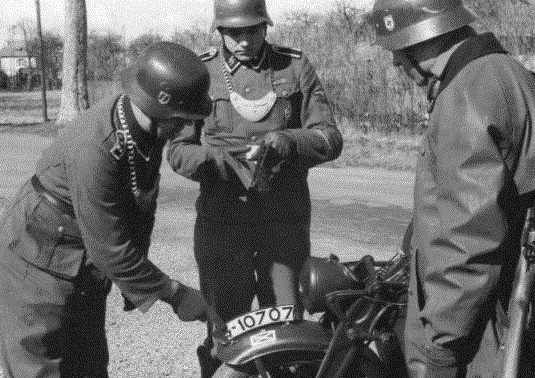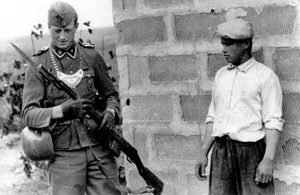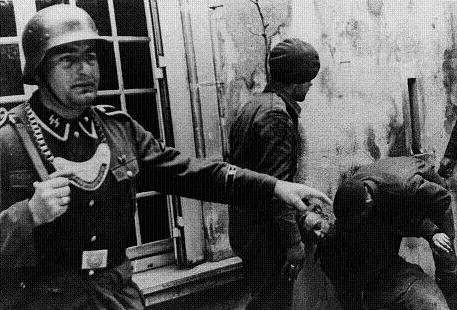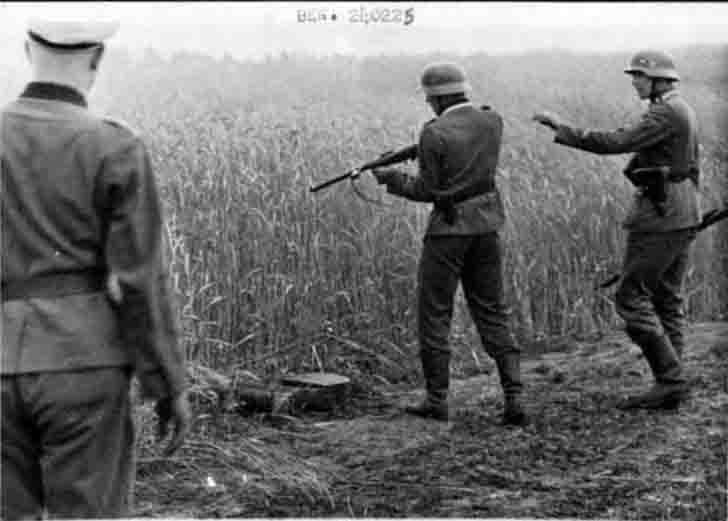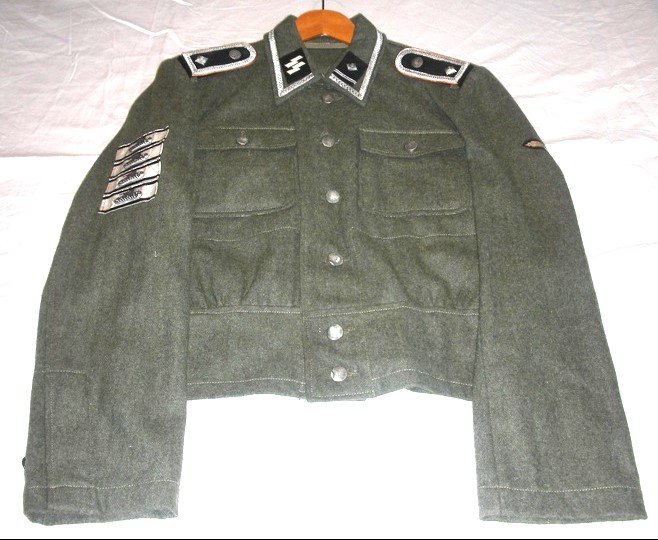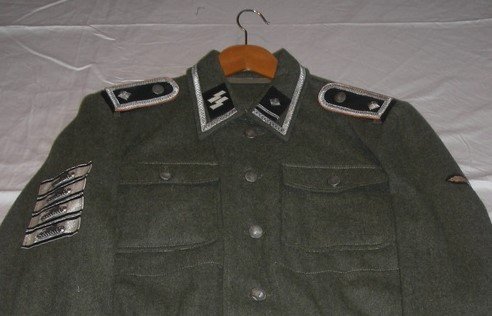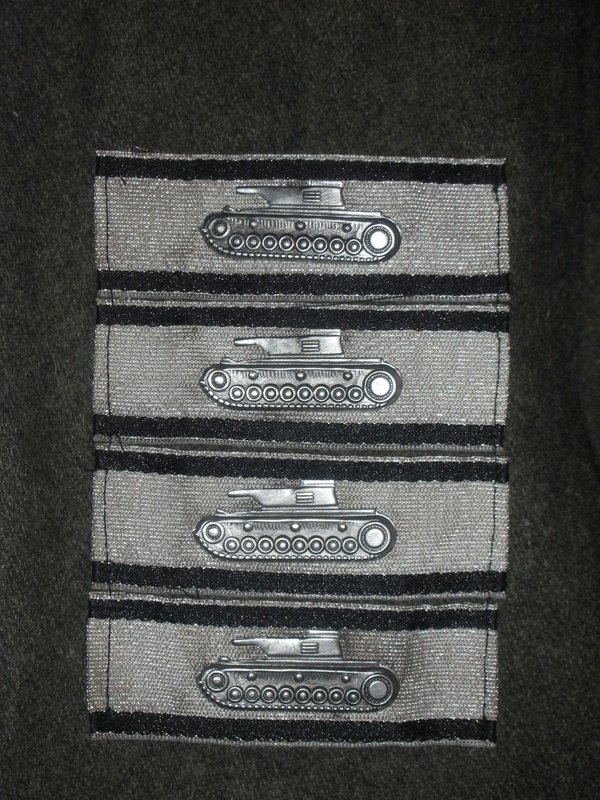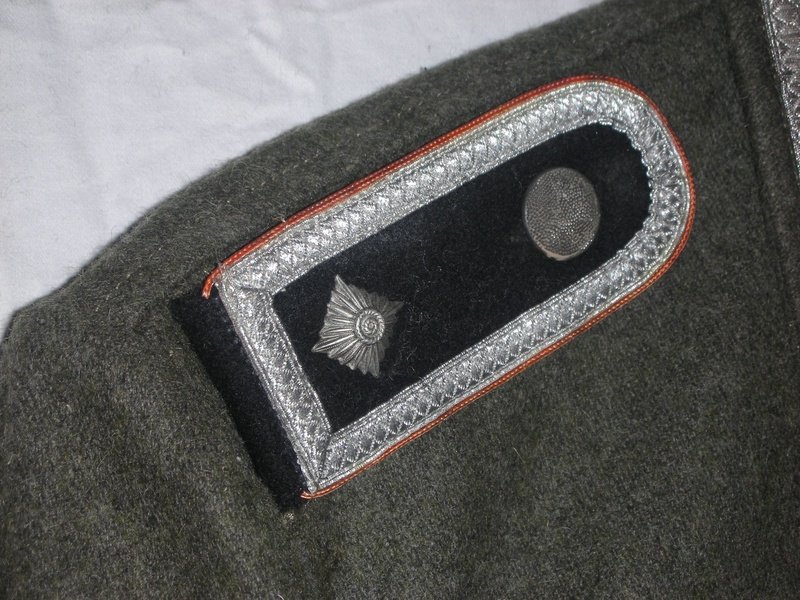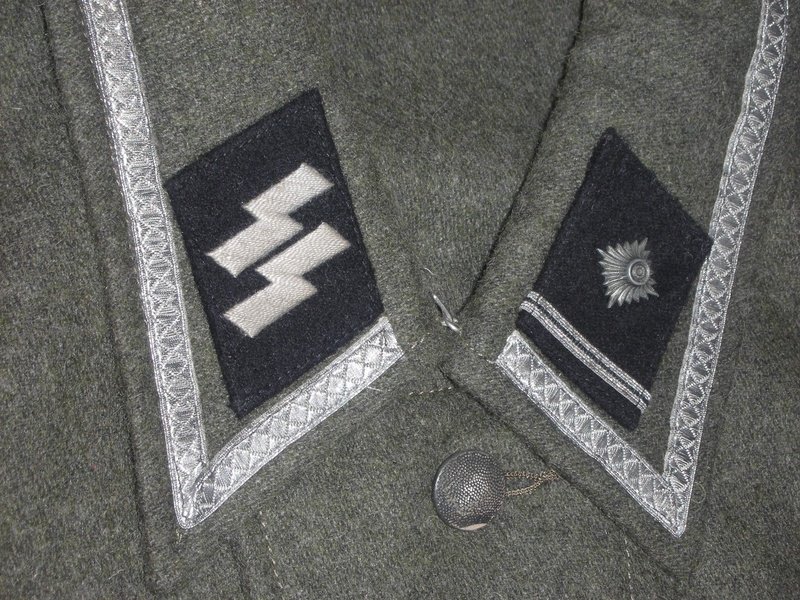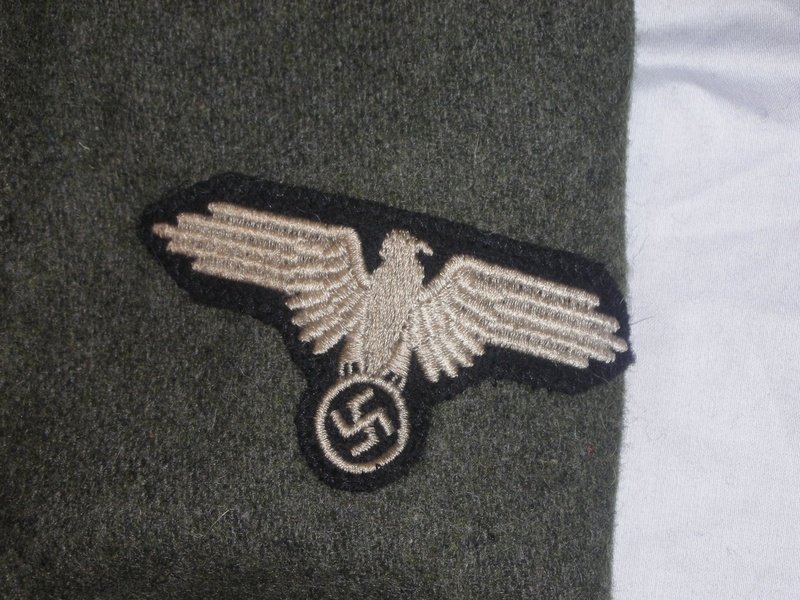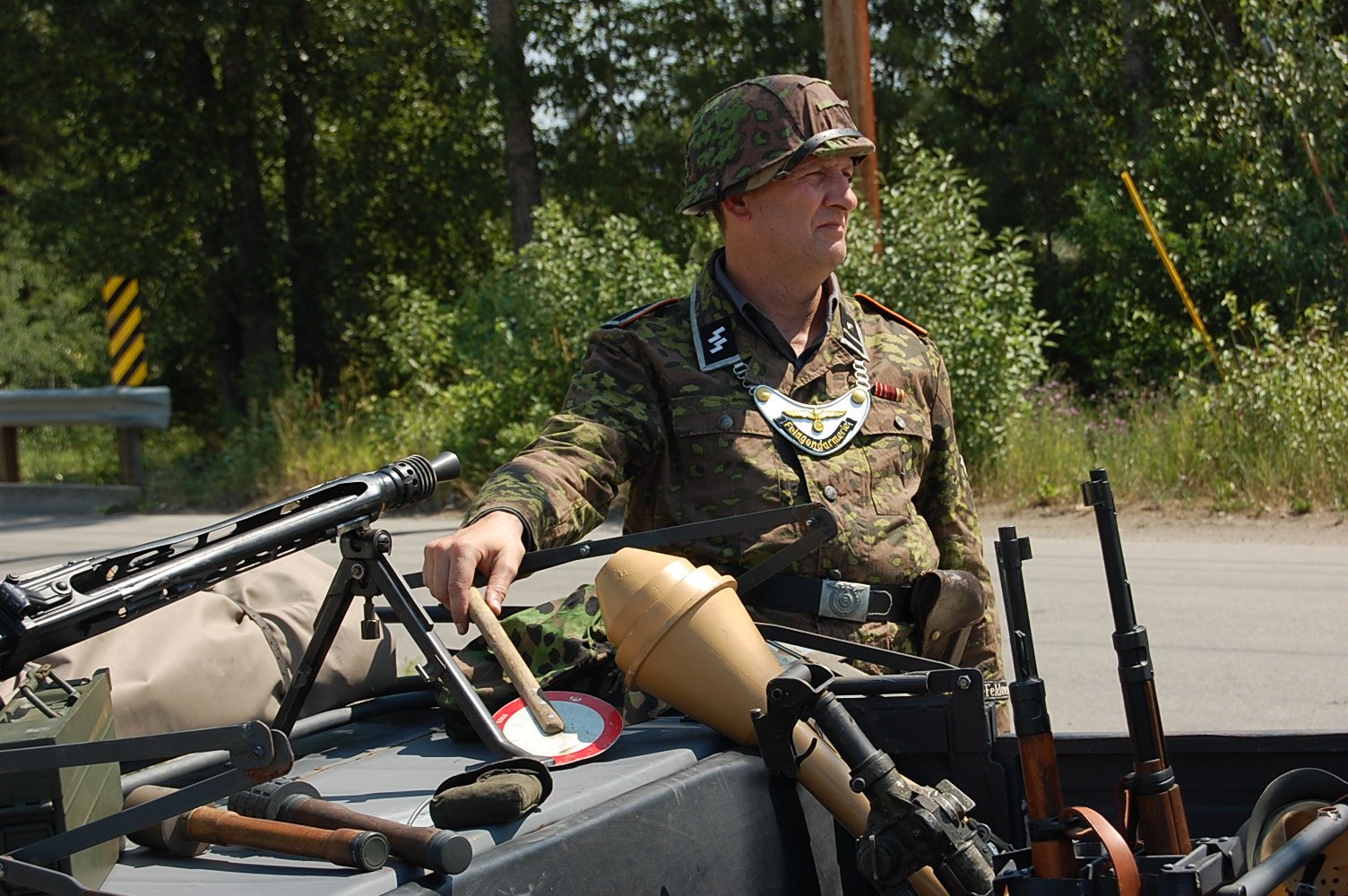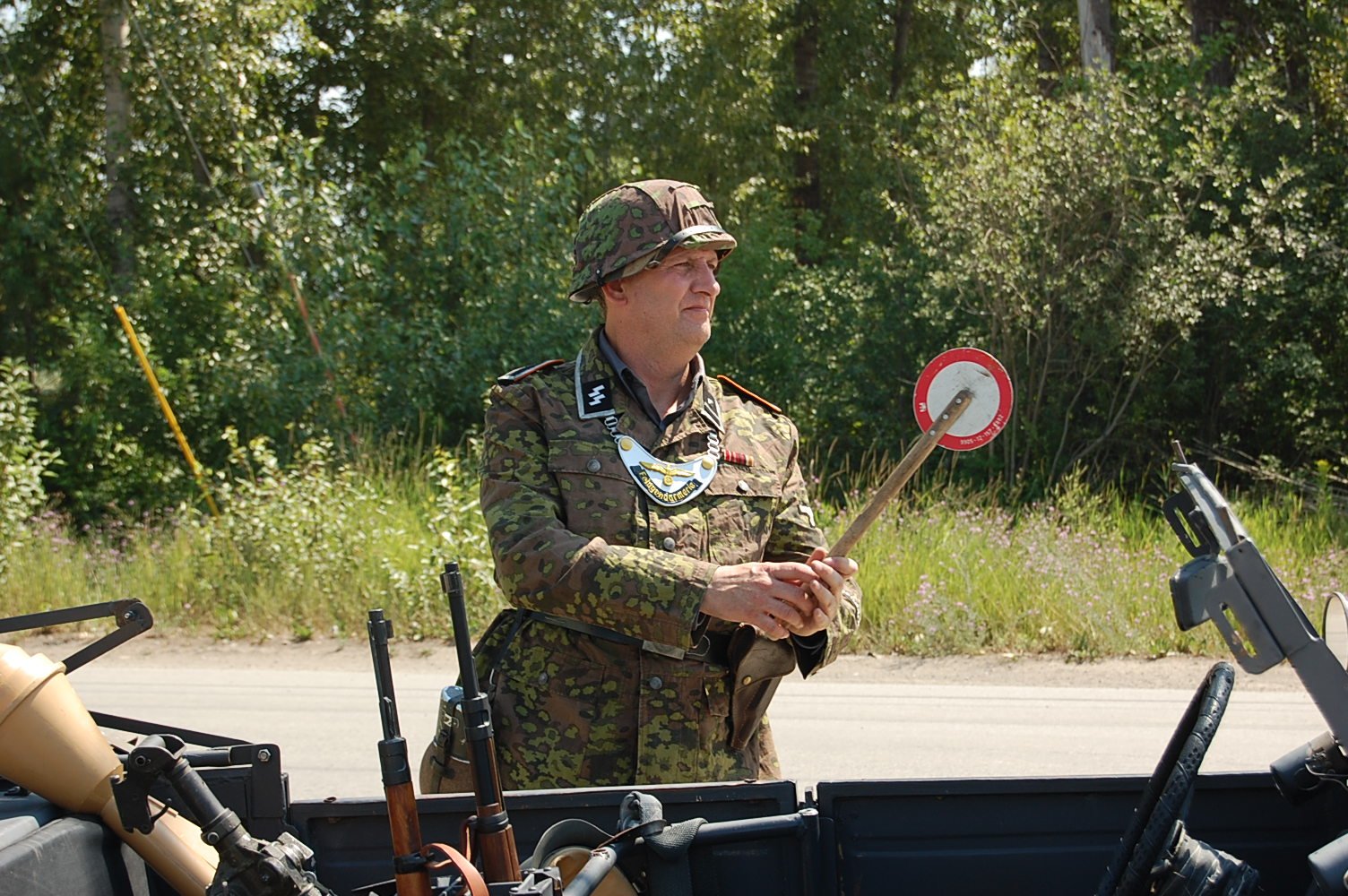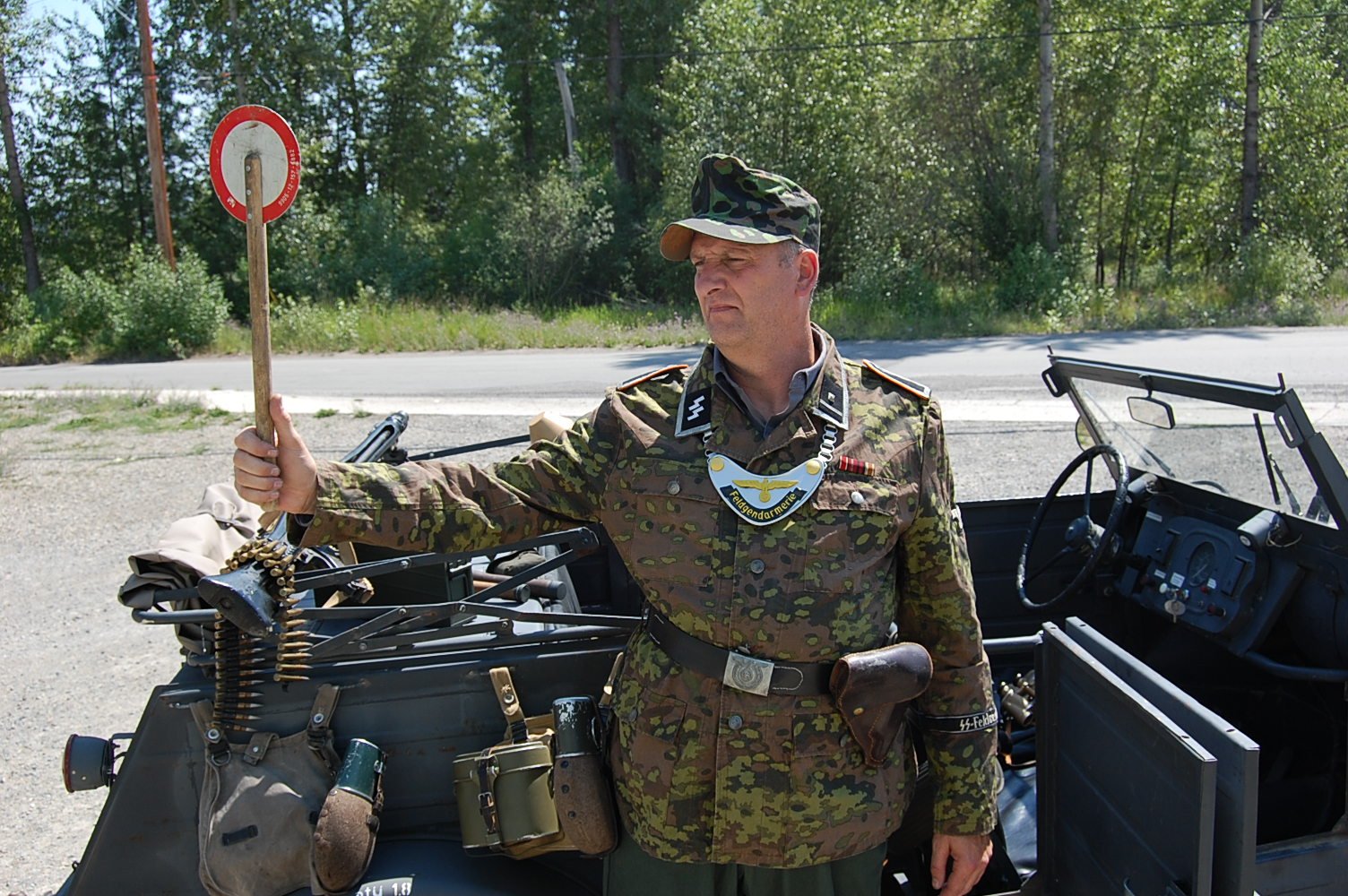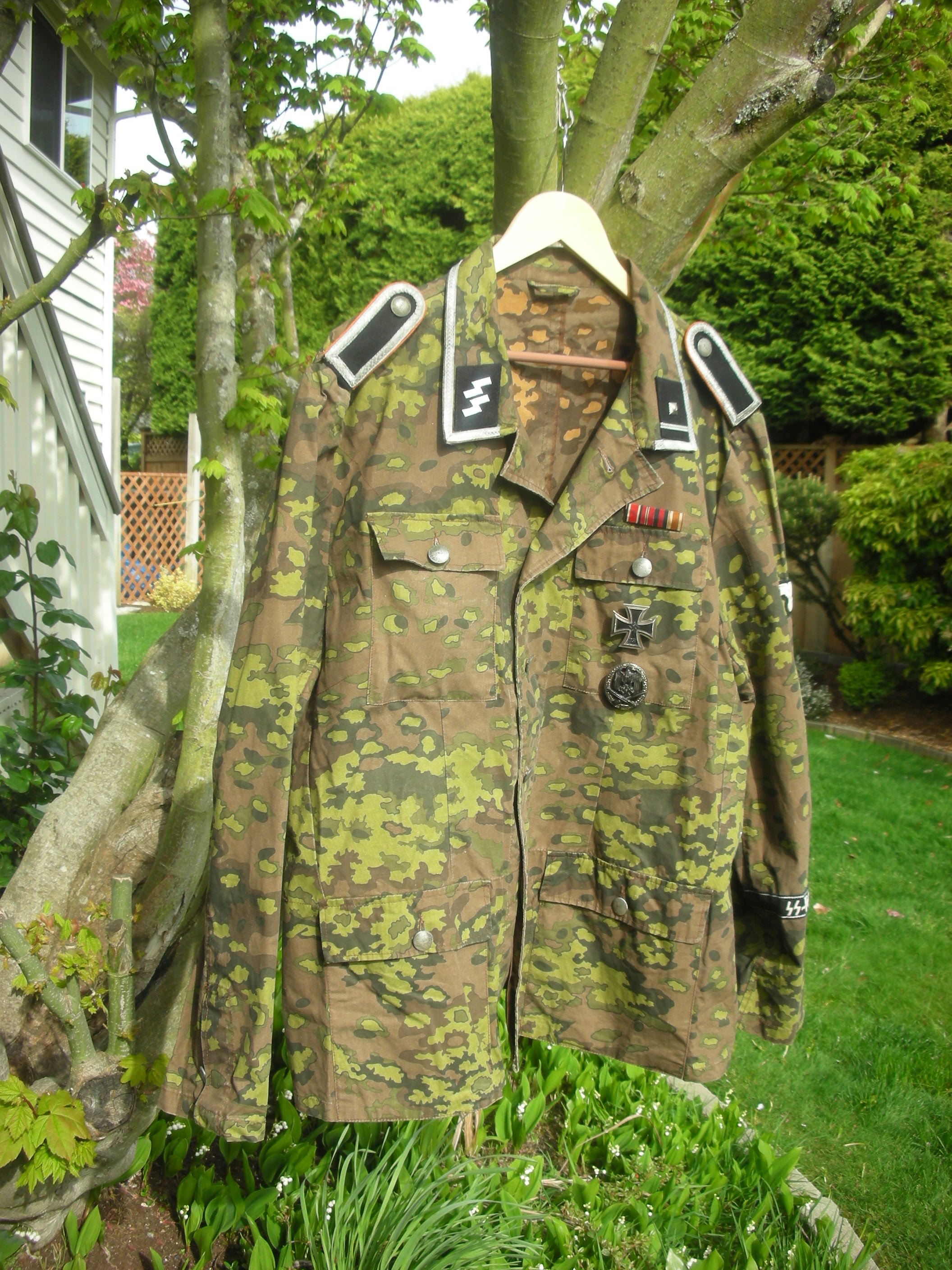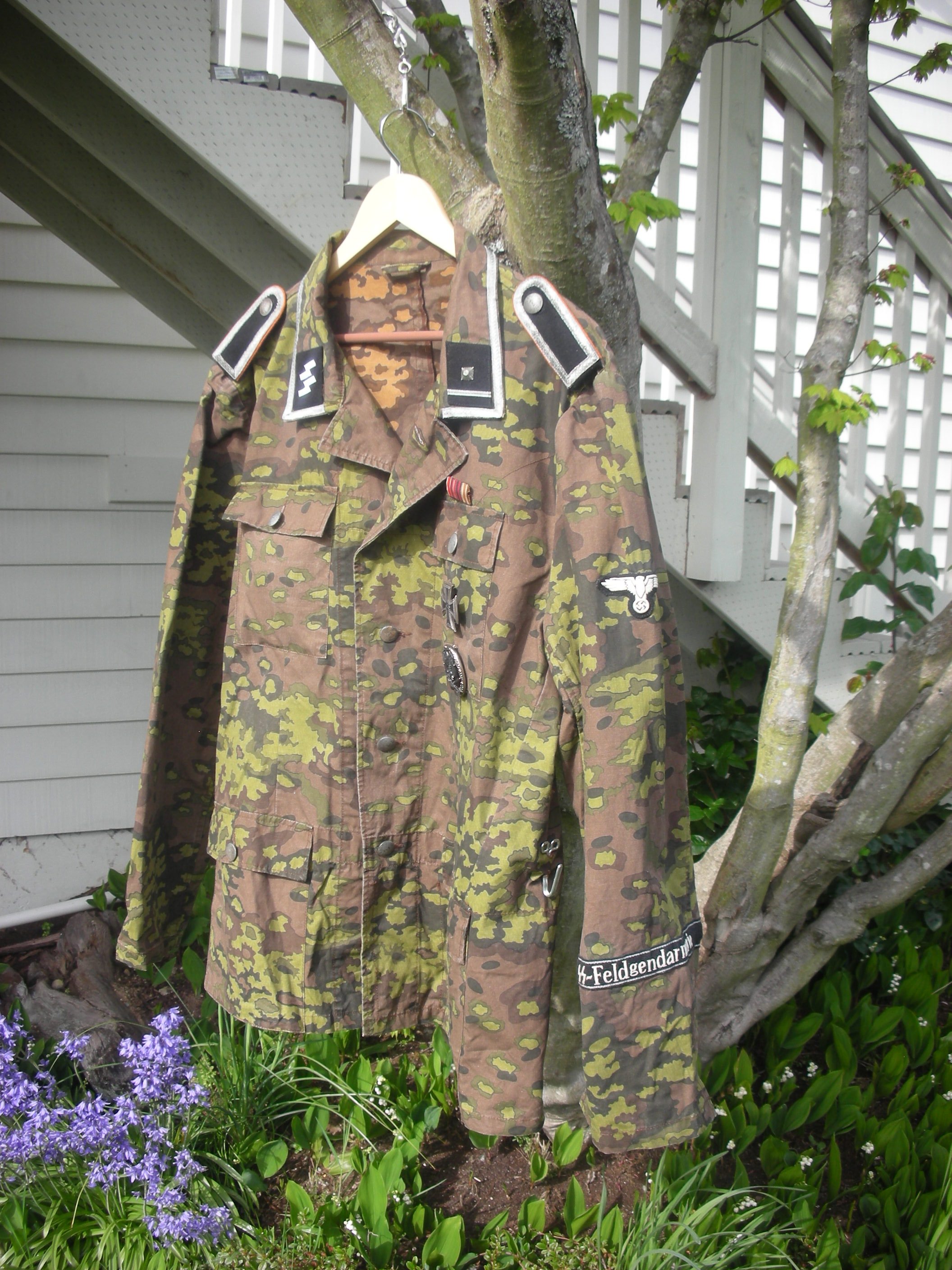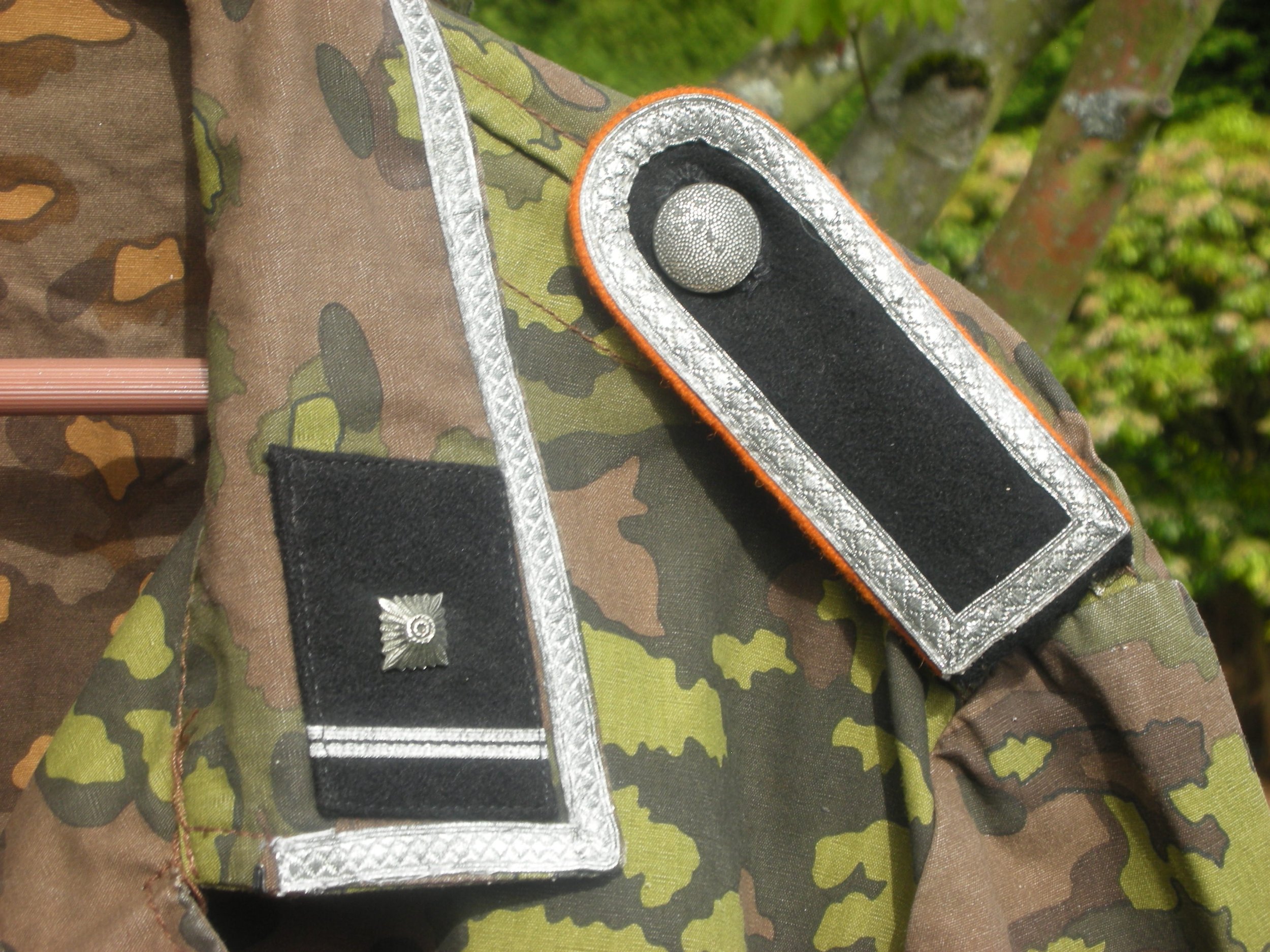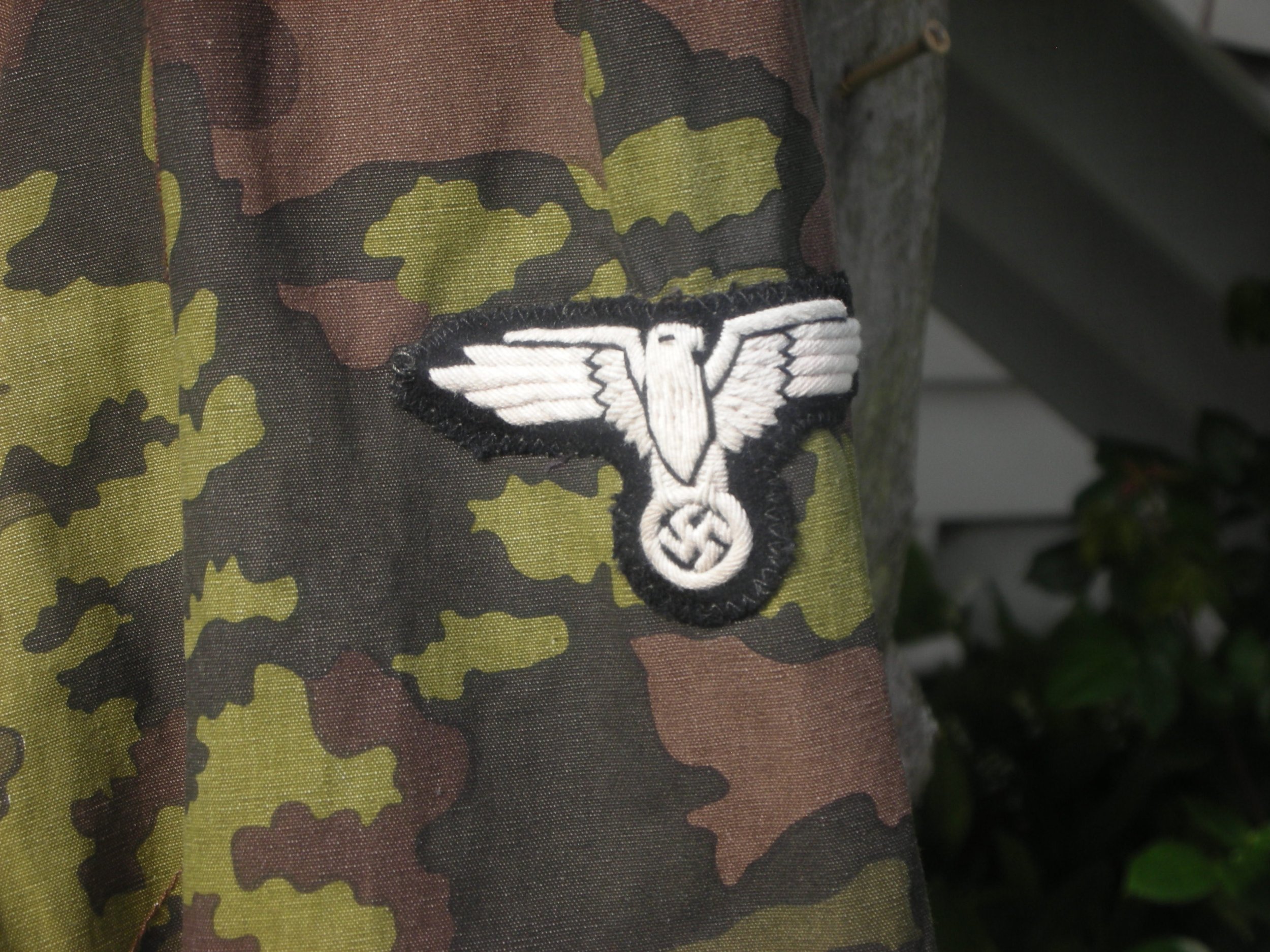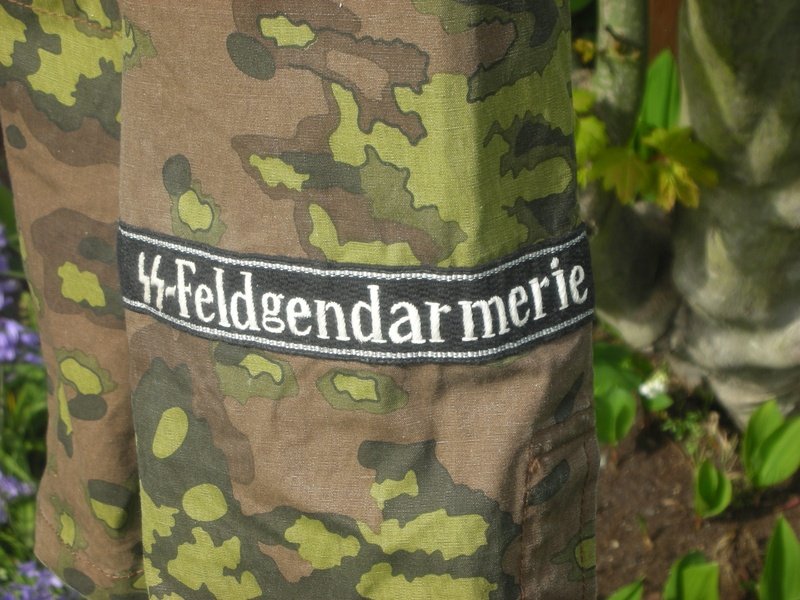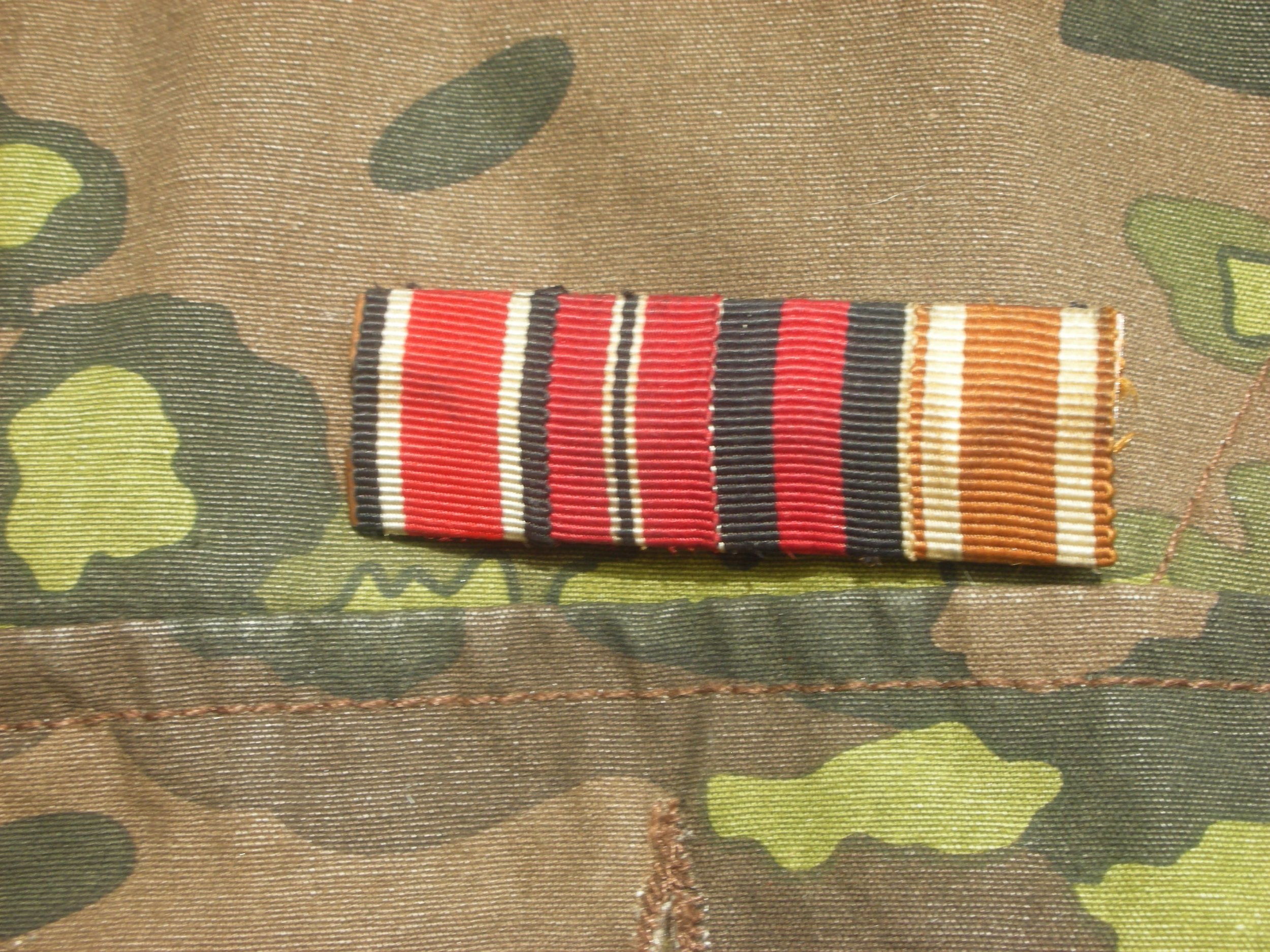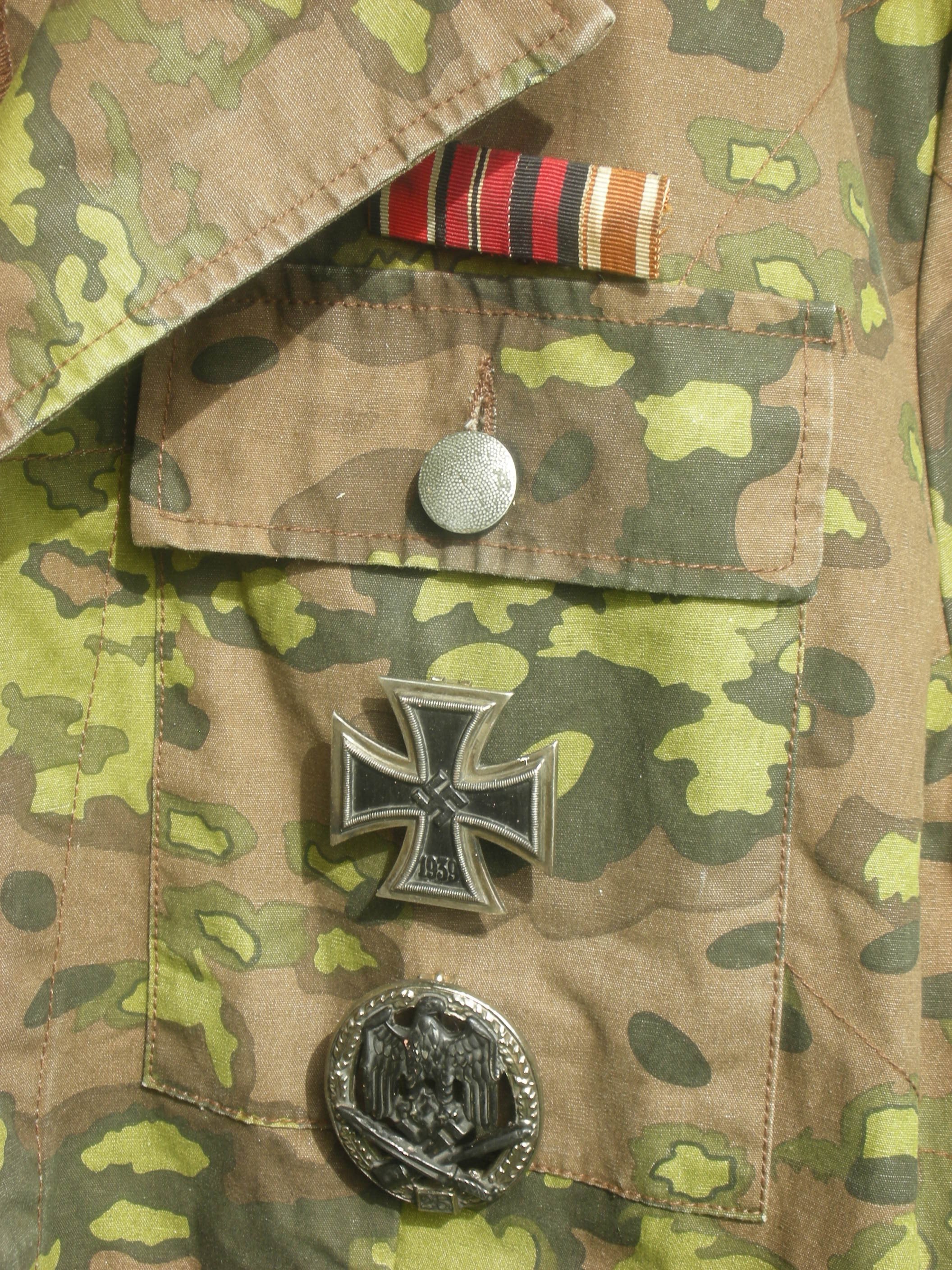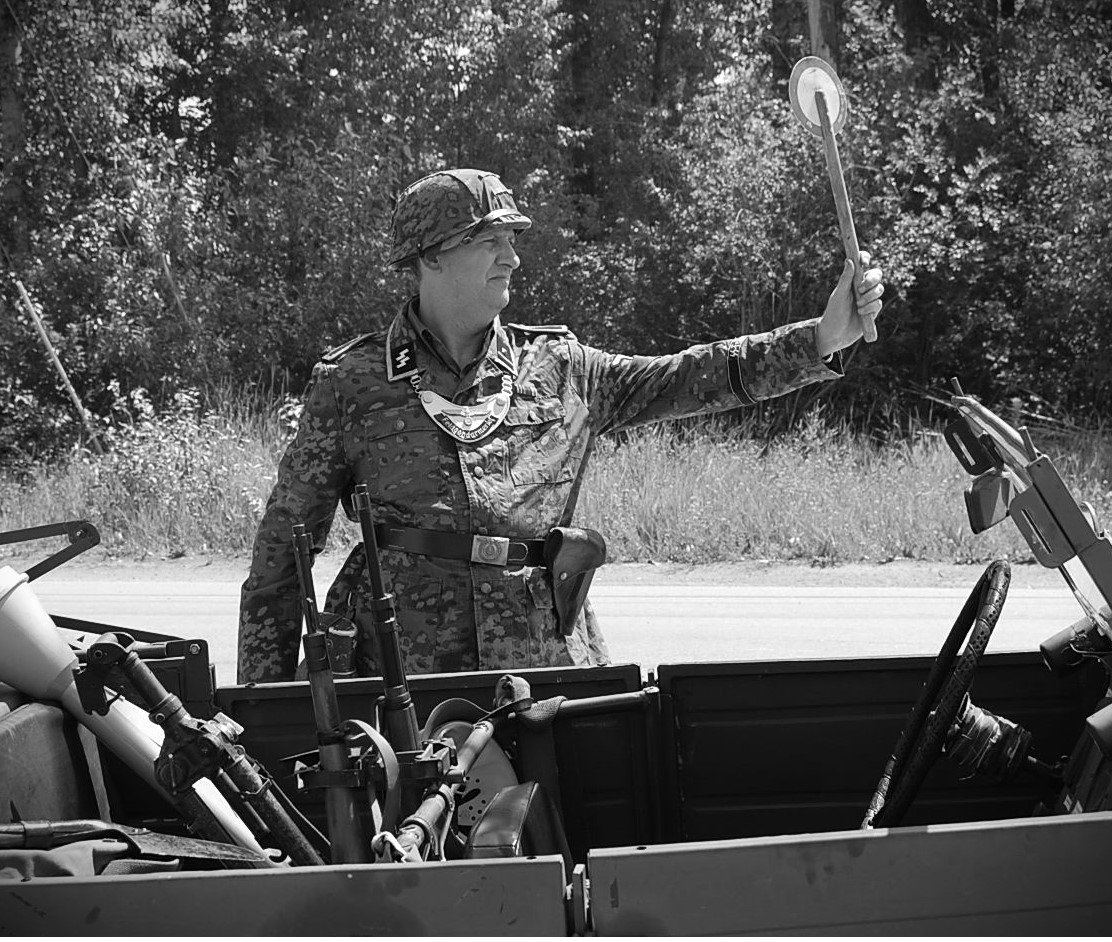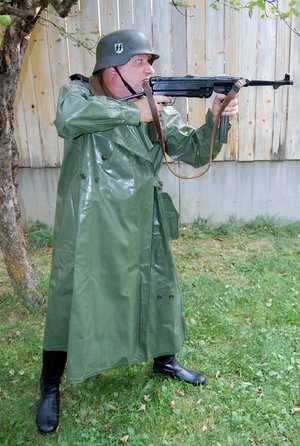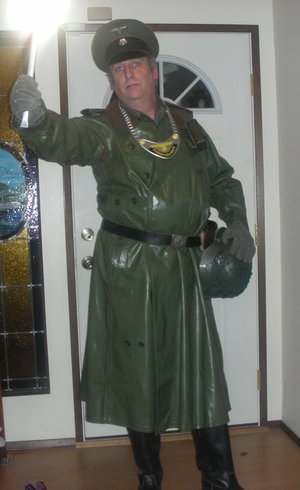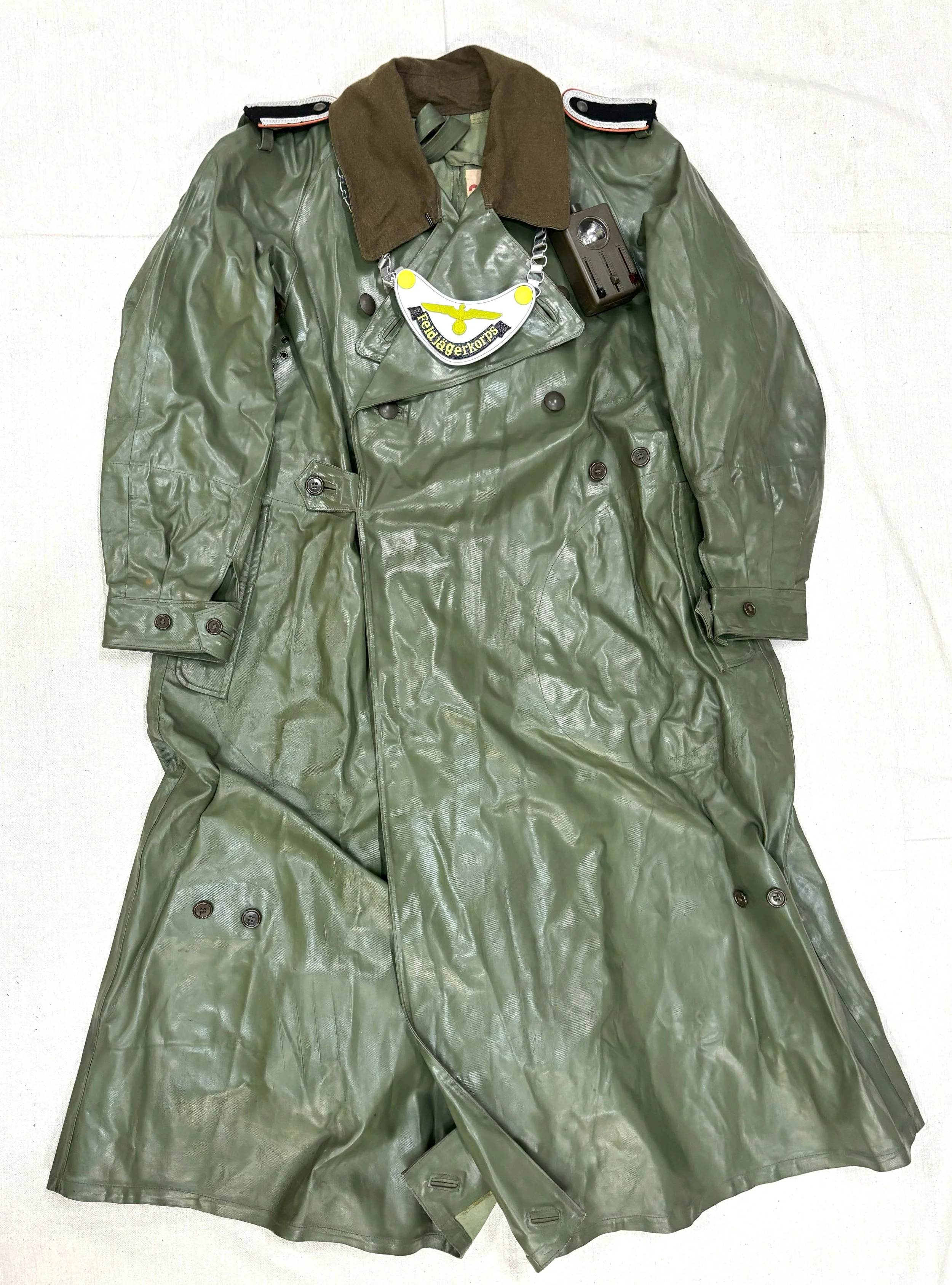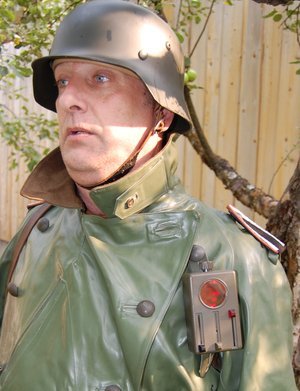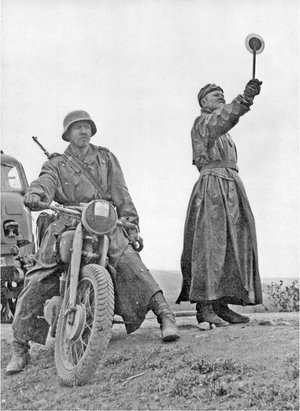SS-Polizei & SS-Feldgendarmerie:
“Updated Photos” Wachtmeister, SS-Polizei Regiment 10:
The SS-Polizei Regiment 10 was formed in July 1942 from Polizei Regiment Sud. It fought on the Eastern Front, mostly against the Partisans, but also as a front-line unit. They were sent to Slovenia in August 1944, where they continued fighting the Partisans until the end of the war. The Majority of the Police Battalions were formed by 28 Police Regiments. As of 1943, many of whom saw action on the Eastern Front, fighting during the retreat of the German Army. Between 1939 & 1945, the Ordnungspolizei also maintained separate military formations, independent of the main police offices outside Germany. The first such formations were police battalions (SS-Polizei-Bataillone), for various auxiliary duties outside Germany, including anti-partisan operations, construction of defense works, and support of combat troops.
The Police Battalions consisted of approximately 500 men armed with light infantry weapons. The battalions were originally numbered in a series from 1 to 325, but in February of 1943, they were renamed and renumbered 1 and possibly 37 to distinguish them from “Schutzmannschaft” (Auxiliary Police Battalions) recruited from the local population (Foreign Volunteers) in the Occupied Areas.
The police battalions were organizationally and administratively under Chief of Police Kurt Daluege, but operationally they were under the authority of regional SS-und Polizeifuhrer who reported up to a separate chain of command, bypassing Daluege, directly up to Reichsführer-SS Heinrich Himmler. While these units were similar to Waffen-SS divisions, they were not part of the Waffen-SS and should not be confused with the 4th SS-Polizei Division. That said, of the German Polizei, during WWII less than 500 ever were found guilty (From all the SD, Gestapo, GFP, City, and Rual Polizei, SS-Polizer, or any other Polizei), but all knew what was going on, and all were somehow obviously involved one way or another, the argument it was Ok, they just followed orders, it was the Nazi Law, that were just cops put on the spot, doesn’t fly, how about human rights, simple right, and wrong, I digress, but the people knew and they allowed it to happen and they followed orders, and supported the government, non of these people were the same after the war as they may have been before the war, non were innocent, and few of the crimes were ever brought to court.
This Wachtmeister wears the “Deutsche Wehrmacht” cuff title (German Military), indicating his unit is fighting alongside the military in combat operations at this time. This could leave some confused, like me for a spell, as he also has the SS runes on his tunic, meaning he is under SS control and represents their authority now. Having spent years fighting against the partisans, he has been awarded the “Anti-Partisan Badge” in bronze. His leadership during combat has also been recognized with the award of the Iron Cross 2nd Class. With the tunic, he would have worn a police cap, or sometimes his early Polizei Shako Kap. He would have worn standard trousers and marching boots. He wears an enlisted police belt buckle on a black belt with a holstered pistol. This uniform has absorbed several caps, and a few different photoshoots, and does not have a heap of hat options, a gabardine, officer quality M43 style police blue cap with metal insignia, and green piping, a wool M43 cloth-patch example, an enlisted visor, with no chinstrap, an early green piped overseas cap, and a shako cap.
*SS-Mann, SS-Panzergrenadier Regiment 7. / 3. SS-Polizei-Panzergreadier-Division:
Originally formed to keep Polizei manpower out of Heer control by having them serve their mandatory military service in the SS. The division was formed at Truppenübungsplatz Wandern as a Polizei-Division in 1939. In early 1941, the division was put under the control of the Waffen SS until it was taken over by that organization in late 1942, after fighting on the Ost Front. In early 1943, the unit transferred to France to be rebuilt as a true SS-Panzergrenadier-Division.
Upon completion of training, the new division was sent to the Balkans and Greece on anti-partisan duties. Heavy combat in 1945 pushed the division into Slovakia, and from there it was moved North to the Pomerania area, where it once again saw action attempting to hold back the Red Army, an impossible feat. Trapped in Danzig, it was evacuated by sea to Swinemünde. Shortly after that, the division surrendered to the American Army near Wittenberge-Lenzen.
The SS-Mann may have served briefly on the Ost Front, earning the Eisernes Kreuz II. Klasse. He has been wounded and perhaps has rejoined the division in France. He wears the SS-Polizei-Division Ärmelstreifen, which was not authorized until late 1942. His uniform insignia contained nothing from the Polizei which had been worn up until that time. This photo may well have been taken on home leave following his wounding in Greece; this can’t be known.
This is a perfect study of the mid-to-late-war uniform worn by the men of this division. It is based on the Feldbluse Model 1940, which may be of Heer or Waffen SS origin. He wears a Schirmmütze, which is a bit out of place for an SS-Mann. However, he is a wounded EK.II winner. At this point in the war, perhaps picked for leadership training. He wears the Feldbluse open collar with a tie. This was favored by Himmler as it showed the Waffen-SS to be in line with the party's socialist beliefs. The establishment Heer promoted the buttoned-up collar, Prussian, aristocratic look.
*In my haste to get pictures, I should have added Gorget.
“Wachtmeister Kommando der Gendarmerie”, Kraków Gendarmerie (Rural police):
These Gendarmerie were tasked with frontier law enforcement to include small communities, rural districts, and mountainous terrain. With the development of a network of motorways or Autobahnen, Motorised Gendarmerie Kompanie was set up in 1937 to secure the traffic. With the occupation of Poland and the organization of the General Government there, the units of Gendarmerie were assigned to the city of Krakau. Kraków was chosen by Hans Frank to become the new capital of the new German state.
A city of metropolitan character that could offer all the benefits of a large city, but whose size did not render it a position hard to control. Warsaw, the capital of Poland, was located at a considerable distance from the border of the Reich. A city of almost one and a half million, which in 1939 had offered evidence of its belligerent mood, deterred the Germans due to both distance and size. The fear was that it would take a rather long time for a sufficient number of German Gendarmerie Wachtmeister wearing a war pattern Bluse and Litzen.
The Krakau Cathedral is shown on the cover of Deutschland Magazine. Opposite is a photo of the Polizei raising the Kriegsfahanen. Note the cathedral in the background. This war period organizational map of Kraków shows the authorized German and Polish areas as well as the Jewish Ghetto. Men were to be brought to Warsaw and settled there to play any significant role in the city, let alone take control of it and transform it into a German city.
Krakau, which is five times smaller and only an hour and a half's journey from the former border, was expected to attract more Germans here far sooner, and a similar number, which would be lost as a small minority in Warsaw, would be well able to gain the upper hand in this city. Krakau was destined to become the capital of this new part of the Reich, but also that of a model German city in the Ost.
To achieve this goal, a special program for the 'de-Polonisation' of Kraków was compiled, involving not only the use of terror against the population but also the annihilation of Polish cultural, academic elites, and institutions. Enforcement of German Law and order was in the hands of the Kommando der Gendarmerie Krakau and other elements of the Ordnungspolizei or Orpo, or Order Police. Under Himmler’s policy of Verreichlichung, or Reich-ification, by 1944, all of the German police forces had come under SS central control.
The Wachtmeister wears the Felduniform Model 1944 sewn from Polizei green-gray wool. Late pattern Litzen is sewn to the collar, while an earlier pattern white sleeve eagle is on the sleeve. Orange is the Waffenfarbe color of the Gendarmerie. The wearing of the SS Membership runes below the pocket was extended to all Orpo Force members who qualified, general SS, not Waffen-SS membership, under the policy of Verreichlichung.
2nd Lieutenant, SS-Polizei Regiment 18. “Gibergsjager”:
I know there was a good story for this, I’ll have to dig around for it one day here.
Major, Stabsarzt Stabskompanie SS Polizei Infanterie Regiment 2:
The SS-Polizei Regiment 2 was formed in July 1942 in Tilsit and was attached to Heeresgruppe Mitte and used for anti-partisan activities on the Eastern Front. It suffered heavy losses in the fighting and was withdrawn from the front in the autumn of 1944 and transferred to the Western Front to rebuild in December 1944. The use of the Heer officer’s cut version of the Model 1936 uniform is not common among Polizei formations and closely resembles the photo of a similar Bluse from another collection. The use of the Heer Bluse may be accounted for by the transfer from an Army post to the new regiment, but as shown by the ribbon bar, this doctor had service with the police forces. The Feldmütz is a standard war period Polizei issue item.
SS-Sturmbannfuhrer, Polizei Rifle Regiment 3./ SS-Polizei Division:
The Police Division was formed in October 1939, 15,000 members of the Ordunugspolizei were drafted and placed together with artillery and signals units that transferred from the Heer-Wehrmacht (Army). These men were not enrolled in the SS, and remained Policemen, retaining their ‘Orpo’ rank structure and insignia.
Himmler’s purpose in forming the Division was twofold: In a period of heated bureaucratic infighting and competition for manpower, it permitted him to get around the recruitment camps the Wehrmacht had succeeded in placing on the SS, it also provided a means for his policemen to satisfy their military obligation, and avoided Army conscription.
The first commander was Generalleutnant der Polizei (Major-General) Karl Pfeffer-Wildenbruch, a career police officer who had been a General Staff Officer during World War I; simultaneously with his appointment, he was also commissioned as an SS-Gruppenführer. The Division was equipped largely with captured Czech materiel and underwent military training in the Black Forest. combined with spells on internal security duties in Poland.
The Division, at this time an infantry formation with horse-drawn transport, was initially held in reserve with Army Group C in the Rhineland during the Battle of France until 9 June, when it first saw combat during the crossing of the Aisne River and the Ardenne Canal. The Division was engaged in heavy fighting after it had secured its objectives and moved to the Argonne Forest, where it came into contact with the French, where it fought several actions with the rear guard. In late June 1940, the Division was pulled out of combat and transferred to the reserve of the Army Group North in East Prussia.
During the invasion of the Soviet Union in Operation Barbarossa, the Polizei Division was again part of the Reserve, initially, of Army Group North. In August of 1941, the Division saw action near Luga bridgehead (held by seven Soviet Divisions), where the Police Division lost over 2,000 soldiers, including the commander, Arthur Mulverstadt, in bloody frontal assaults. Fighting across swamps and forests, they suffered many problems and became bogged down. After a series of failed attacks, the Polizei Division, along with support from Army formations, managed to fight into the Northern part of Luga, encircling and destroying the Soviet defenders in the process.
In January 1942, the Division was moved to the Volkhov River sector, and on 24 February, it was transferred to the Waffen-SS style uniforms. The cut was from the Heer, probably due to supply issues still not being resolved after the first winter of the campaign. This is known as the second pattern of the Division’s uniform which incorporates both Police and SS insignia.
The Officer has won the Iron Cross I & II as well as the Infantry Assault Badge. On his ribbons bar are the Ost Front (1st Winter) and the West Wall from his service before the Invasion of France. He wears an Enlisted Waffen-SS Schirmmutz piped in the early rifle regiment green, along with his Police Officers Belt. The breaches and boots complete the uniform.
SS-Hauptscharführer, 4. SS-Panzer Pioneer Battalion, "SS-Polizei-Division", SS-Tropical Uniform:
Waffen SS units found themselves in some tropical climates, and an appropriate uniform was developed with obvious Italian influences. Known as a "Saharaina" (named after the Sahara Desert), the jacket was matched with either long trousers or shorts, worn over a tropical-weight shirt, and with either the overseas, M43 style cap or tropical sun or combat helmet.
SS- Polizei found itself fighting first in France in 1940, then on to Russia in 1941, battling as part of the Armee Groupe Nord around Leningrad. After suffering heavy losses, the division was moved to security duty in Poland and Czechoslovakia and then to Greece in 1943. 1944 found it fighting Tito's partisans in Serbia, then on to Hungary, and finally fighting in Berlin.
This Hauptscharfüher has seen major combat action and is probably in line for the anti-partisan badge. Having no Ost Front medal, he joined the division as it fought the siege of Leningrad, stacking up enough combat actions to be awarded the General Assault Badge for 75 days in action. Many of these engaged in ‘hand-to-hand’ combat, as he has also won the Close Combat Clasp in Bronze and the Silver Wound Badge. His combat leadership is proven with both Iron Crosses and his dedication to supporting his troops in battle by the KVKII.
SS-Standartenführer, Helmut Dörner, SS-Panzergrenadier Regiment 8 “Polizei”:
SS-Standartenführer Helmut Dörner earned the Eichenlauben der Ritterkreuzes while commander of SS-Panzergrenadier Regiment 8 “Poliziei”. This was the 650th award of this decoration for his leadership during the fighting in Romania and Hungary in the fall of 1944. Dörner earned both the I. u.II. Klasse Eiserne Kreuz within five days during the Battle of France. Killed in action during the Battle of Budapest as a Kampfgruppe Kommander, he was awarded the 129th set of Schwerten der Ritterkreuz in November 1944. Photographed in a command vehicle, Dörner wears a Panzer uniform made from Italian camouflage cloth over his standard uniform, with the collar of SS-Standartenführer Litzen sewn can be seen. He wears a Feldsmütz für Offizier, which has been crushed with age.
SS-Unterscharführer, SS-Feldgendarmerie Trupp 2, “DAS REICH”:
Perhaps less well known than the Heer Feldgendarmerie, the Feldgendarmerie of the Waffen-SS was a much smaller establishment than its Wehrmacht counterparts, but its role was identical and fulfilled identical purposes. Like the Wehrmacht, the SS-Feldgendarmerie was more than likely a former civil policeman or experienced combat NCO with around 4 years of service.
Each Field Division of the Waffen-SS had its own Feldgendarmerie unit. They were used primarily to maintain order, discipline, and security within their own lines, and therefore, their areas of responsibility were more restricted than those of the Heer Feldgendarmerie units. The Waffen-SS Feldgendarmerie focused on “Taking care of their own” and left most rear-line issues to the Heer Feldgendarmerie to the “Kettenhunde”.
Heer Feldgendarmerie came to be called the “Kettenhunde” (Chained Dogs) due to the Gorget that was hung by a chain they wore while on duty. The common soldier regarded them with fear and didn’t want any trouble with them. Yet, the SS-Feldgendarmerie had a bit more sinister nickname given to them, the “Kopfjager” of Headhunters, an obvious reference the the “Death’s Head” SS Skull insignia, embroidered to the front of their caps. But there was a deeper meaning too, and that lay in their reputation as efficient military policemen and strict enforcers of military law according to the SS.
Traffic control. maintaining military order and discipline, and escorting prisoners of war. The collection and redirection of military stragglers, the prevention of looting, supervision and control of the civilian populace in occupied areas, disarming of the civilians, checking of papers and documents, the capturing of enemy soldiers, and the searching of documents, maps, etc. They also checked the papers of soldiers on leave, making sure they were not AWOL, or in any trouble, or if in transit, to get to their destination. And disposing of enemy propaganda leaflets they were prohibited, and if found on someone, they were to be punished. They searched for downed airmen. They provided street patrols of the occupied areas, worked in the prevention of sabotage, controlled evacuees during retreats, they had security-nature duties, in cooperation with the Geheime Feldpolizei (counterespionage, apprehending deserters, border control, and anti-partisan duties).
The Feldgendarmerie’s authority allowed them to pass through secured areas, guard blocks, guard posts, etc. They conducted searches of both personnel and property whenever they deemed it necessary. When conducting searches, they could and did commandeer assistance from other military personnel. In the event of a dispute, the Feldgendarmerie held superior rank over any other soldier of a similar grade or rank of any other branch of the service.
This Officer wears the issued uniform with Officer insignia and belt. His unit affiliation is noted with the “2” on his shoulder boards and the “Das Reich” cuff title. The Officer’s “Crusher” cap is piped in “orange-brown”, and has had an officer chin-chord added to it. He wore lace-up boots and gaiters over them, and a sidearm, in standard soldier appearance.
*Oberscharführer, Waffen-SS Feldgendarmerie:
One could say this uniform is the “most subdued” of the SS-Polizei Uniforms in the collection, only identified as “Feldgendarmerie” with the piping on the shoulder boards, but then, it says SS all over it, and someone to avoid, or, in the Allied case shoot at uniform, with the Individual tank kills on the sleeve, and the silver strip around the collar-means a group leader., I see him not in the police role at all, but setting up tank raps with Molotov cocktails and panzerfausts. He was trying to keep the roads open at one point, then he was stuck in a “Fortress City” or backing their way back to Germany, hoping a cease-fire would come.
*This uniform needs more pictures, with the Gorget and Cap at least. A helmet would be nice. And the right story here.
SS-Scharführer, Feldgendarmerie, custom SS-Camouflage 4-Pocket Jacket:
This SS-Scharführer has created a Camouflaged uniform in the standard M-43 style, perhaps for use in anti-partisan operations. Probably made in small-scale local production, or privately tailored, some were produced in the 4-pocket cut, lightweight, and in colder climates, it was worn over the wool tunic. At any rate, it is a rarity to begin with, and with the Feldgendarmerie all the more. It’s a good example of a rare Feldgendarmerie uniform. The use of the SS cuff title dates the uniform to post-August 1942 and before November 1944, when all Feldgendarmerie cuff titles were abolished within the SS. The Gorget was still worn while on duty, generally, and continued to use the “Heer” pattern of it.
He has been continuously falling back for years now, from Russia. Surviving the rise and fall of the 3rd Reich, he tries to keep it from becoming a brought! But chaos is in the air, and he helps to direct the retreat back to the Fatherland and get back home alive. In service from before the Austrian Occupation, he is an old-timer, having earned both the EK-I and EK-II for his leadership during combat. He has the General Assault Badge, even! As well as the Ost Front ribbon from that first awful winter, getting away from that Hell, perhaps after his heroism in the East, after getting seriously wounded, was stationed on the West-Wall, showing that Service ribbon. We have the uniform with a custom camouflage cap, standard trousers and boots, and field web gear. At the later stages of the war, there were many styles of uniform, and few matched one another. I was found in the post-war period, because of their skills in keeping traffic moving, and all the Police needed, that many Feldgendarmere found their way at least temporarily in the same job.
Rubberized Overcoat for Polizei and Motorcycle Troops:
The Standardized overcoat was worn by Motorcycle Troops to break the wind, and some waterproofing for. They were widely acquired and used by any who could obtain them or carry them around. SS-Officers and Polizei wore them a lot. made from impregnated green rubber (hence the glossy appearance), poured onto cloth, made for a very water-proof garment, and held the heat in, maybe too well, there was little venting in them or adjustments, I think there were several styles.
It was just too heavy for the average Infantryman, but it would have worked great on sentry duty. Not the Feldgendarmerie of the Heer or SS would wear the gorget any time they were on duty, and in my pictures, if the control wand was being used-he would have had a gorget on. I’ve taken pictures of, and in the overcoat with both Heer and SS Feldgendarmerie, but no really good shots still, this was the best I can do at the moment.
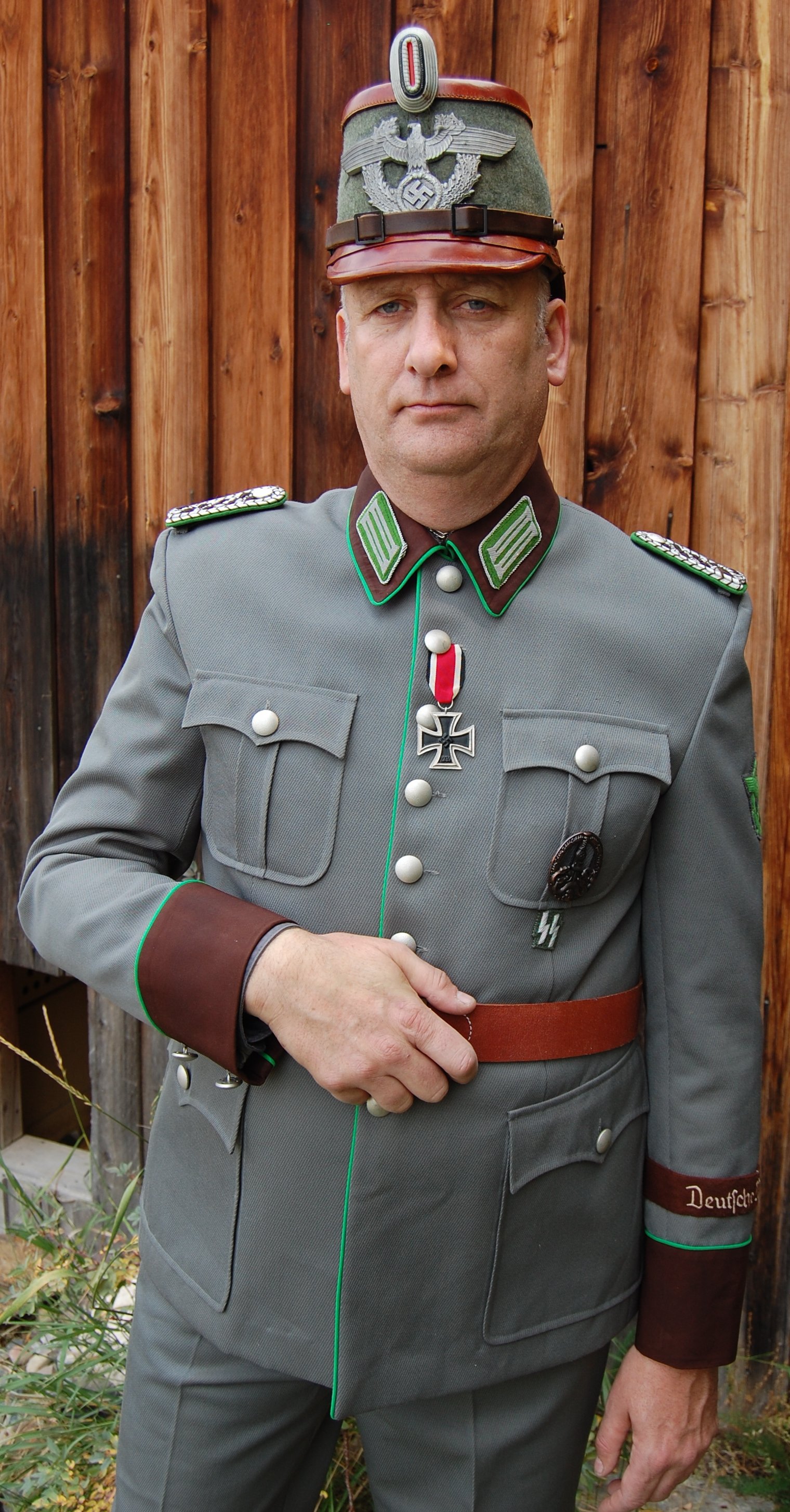
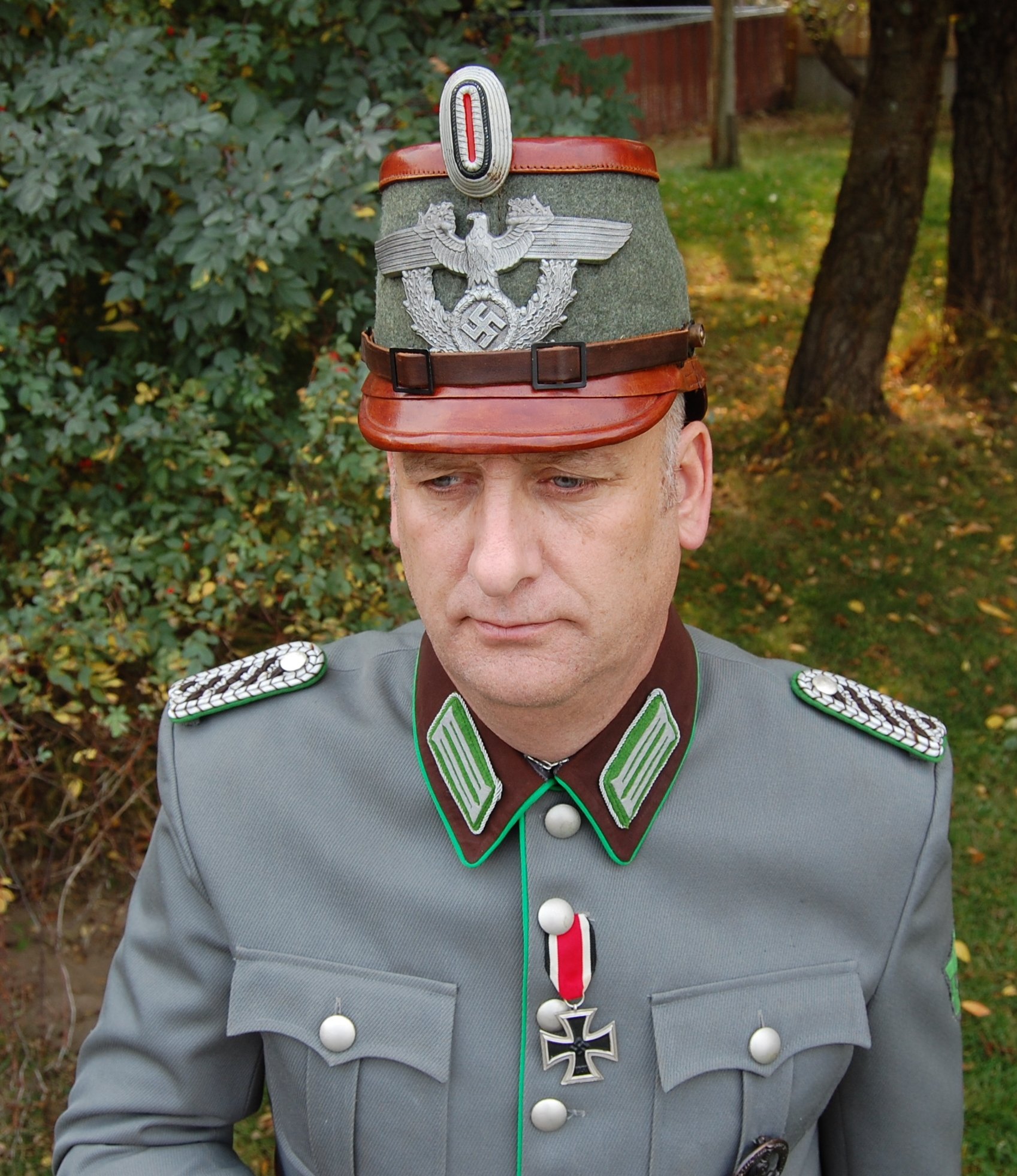
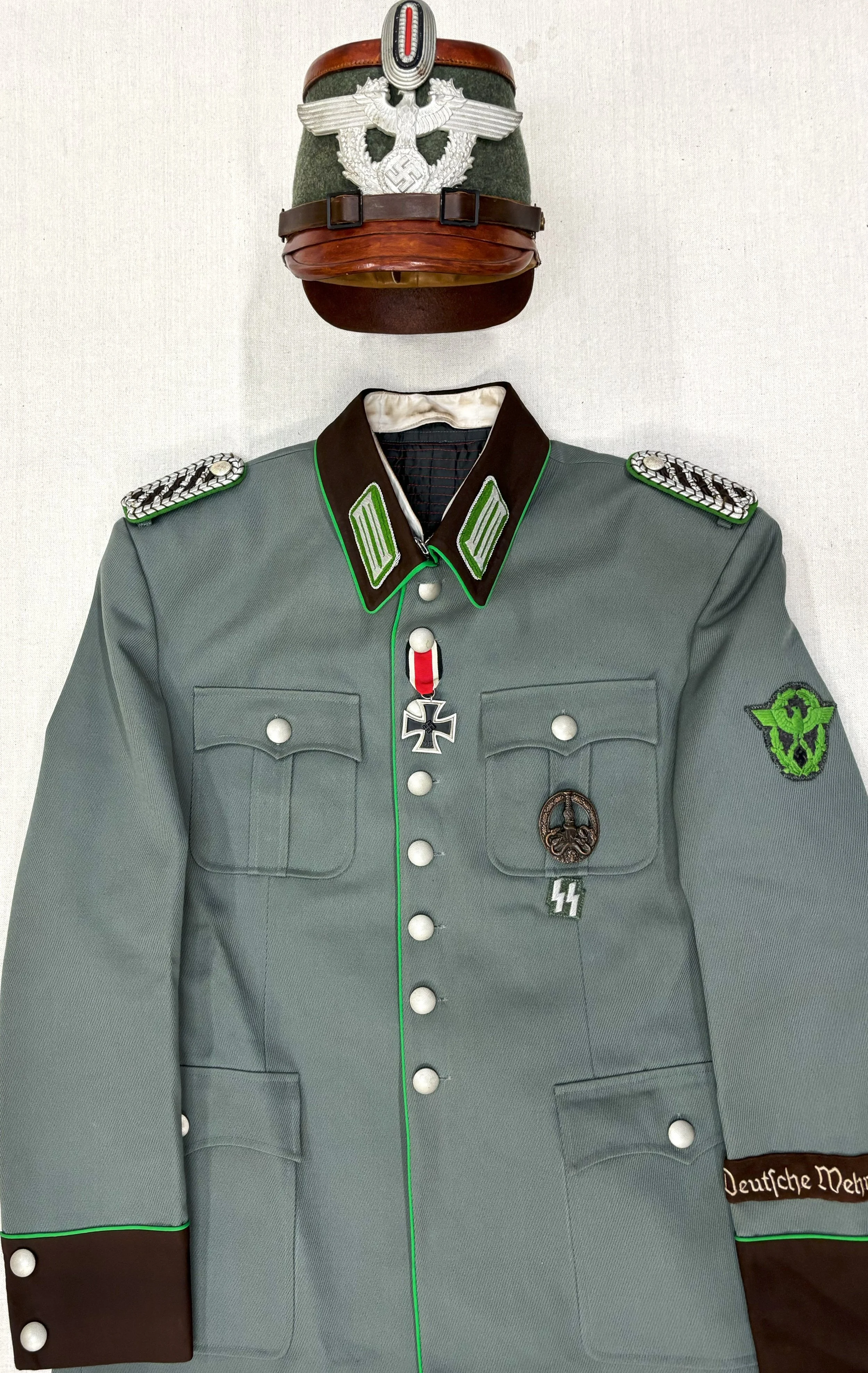
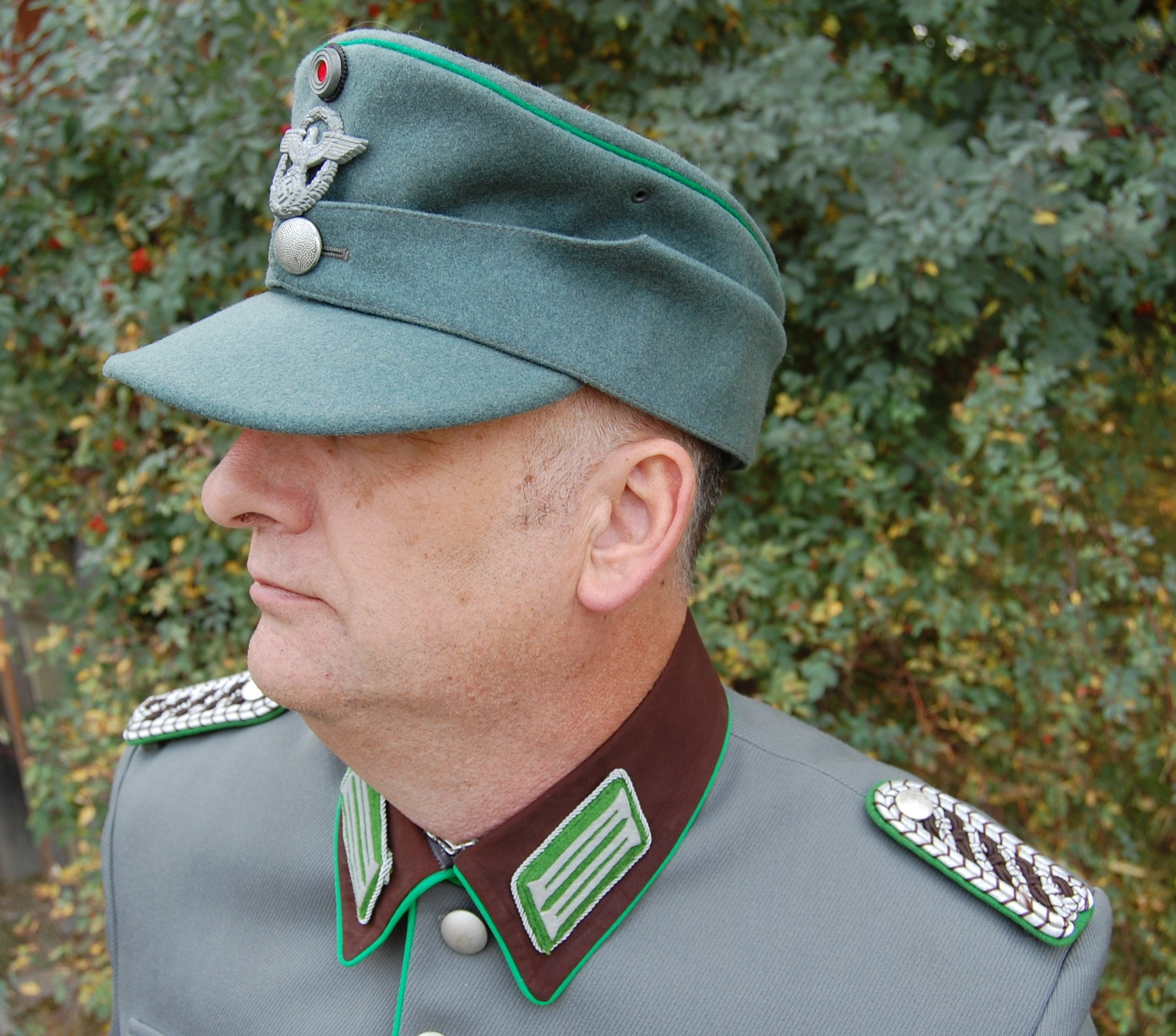










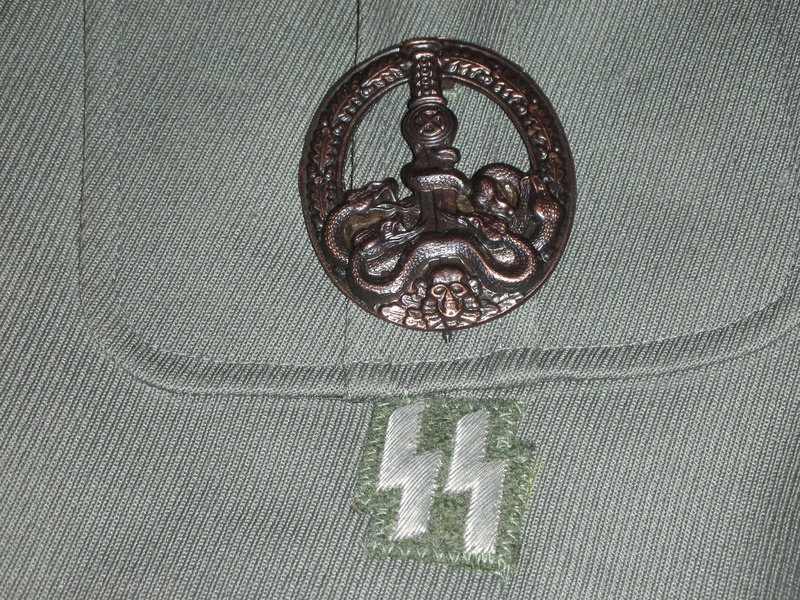

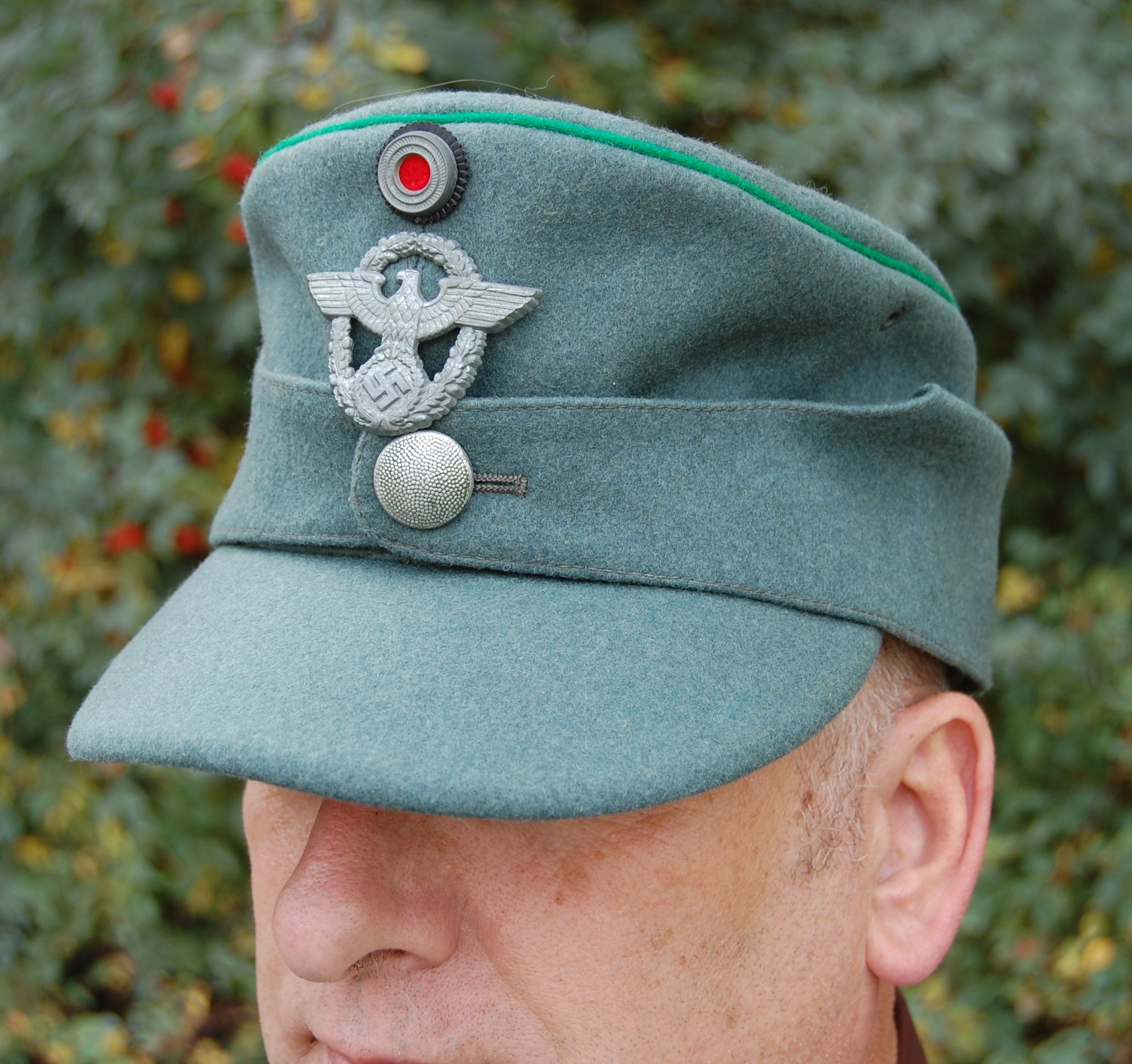


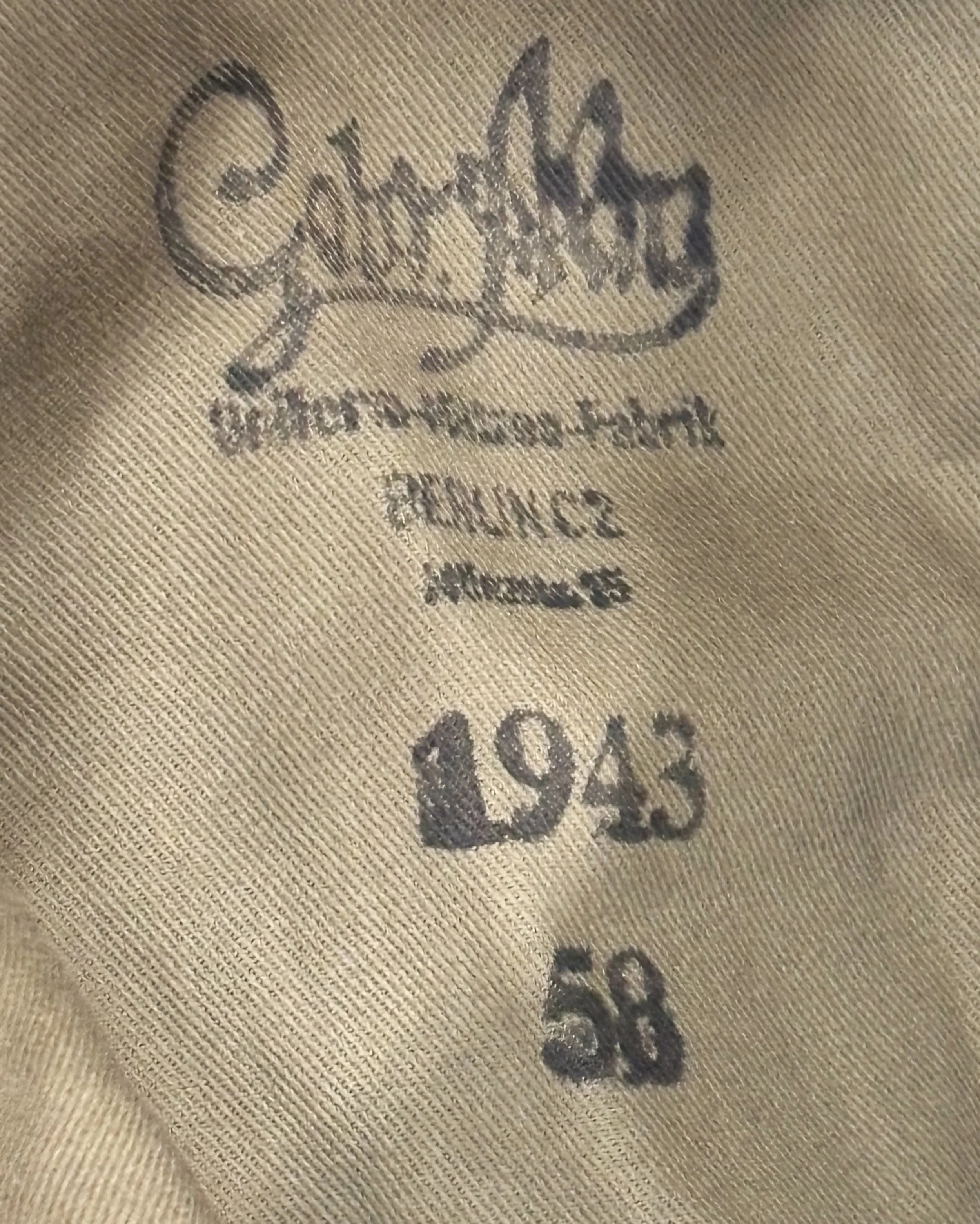








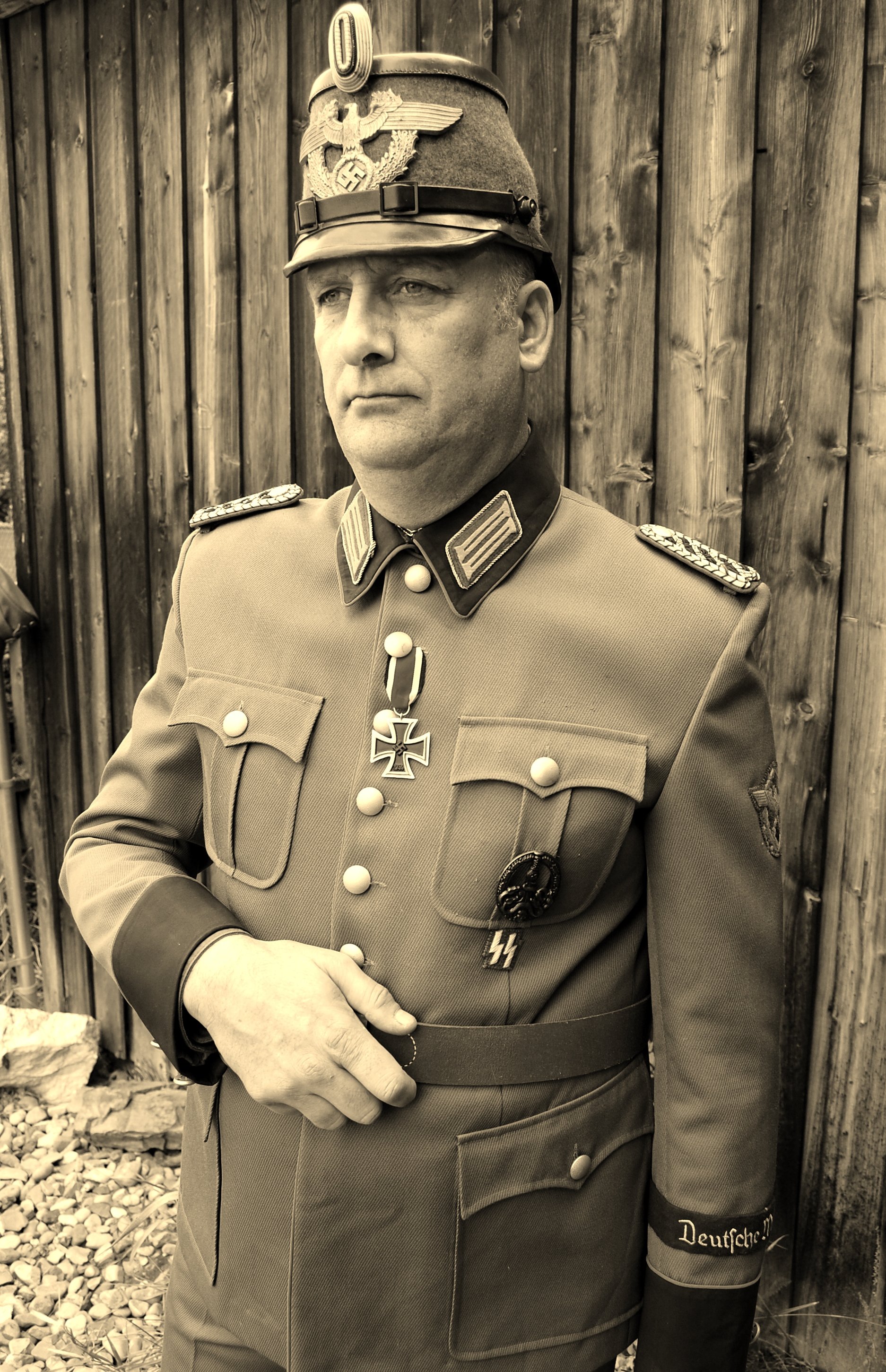



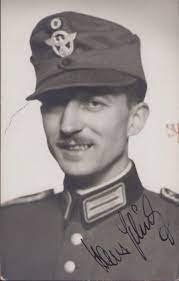

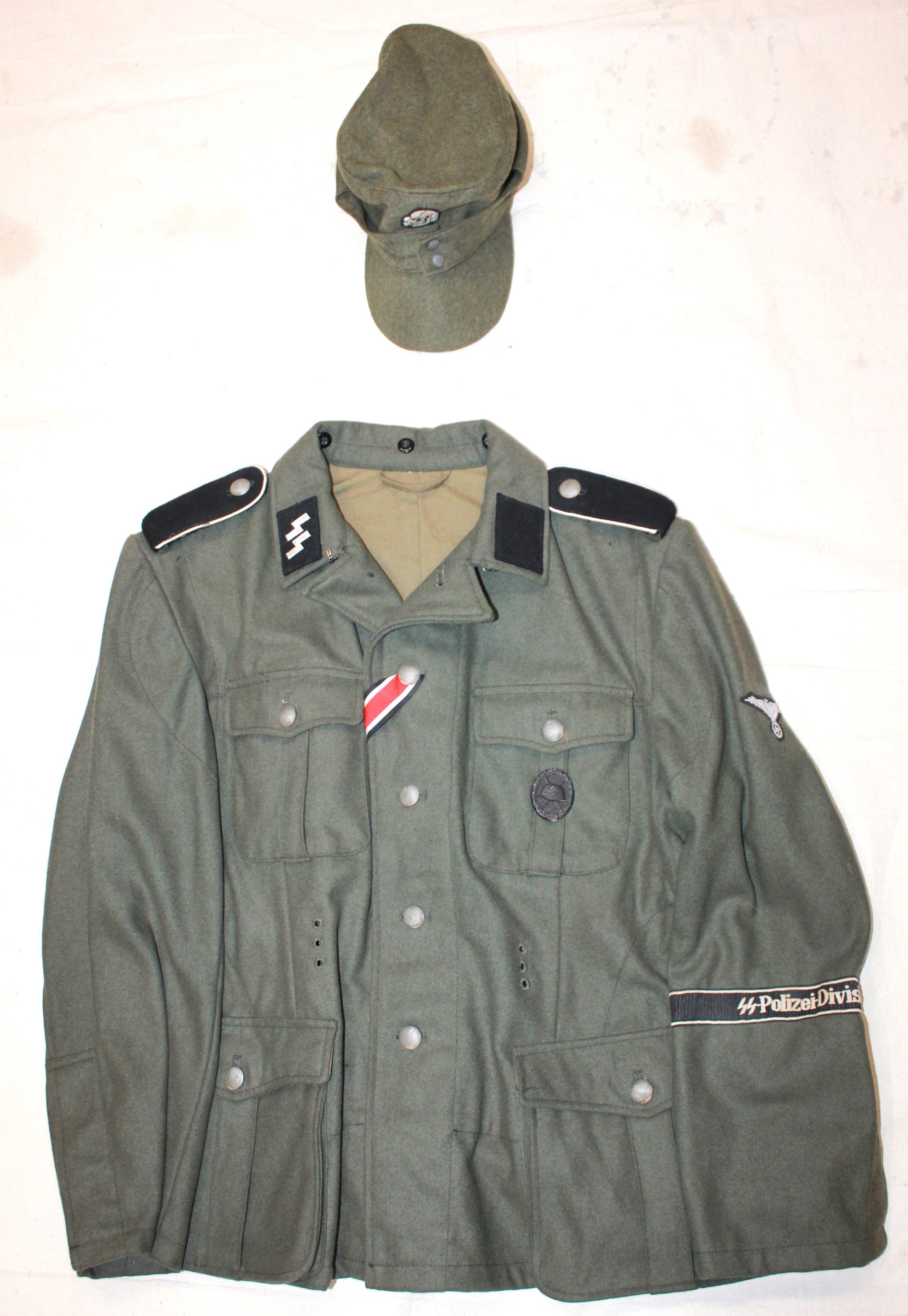
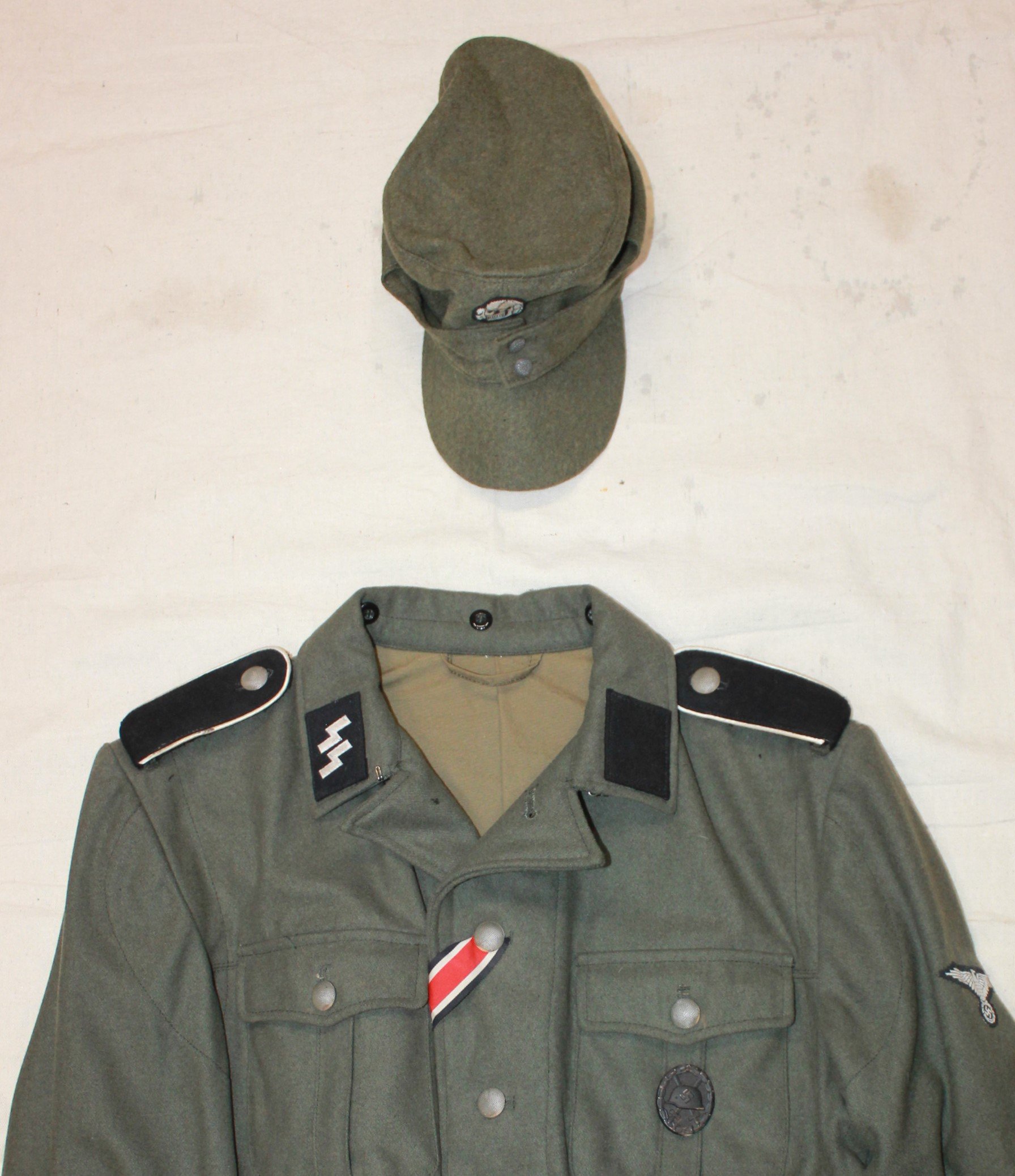
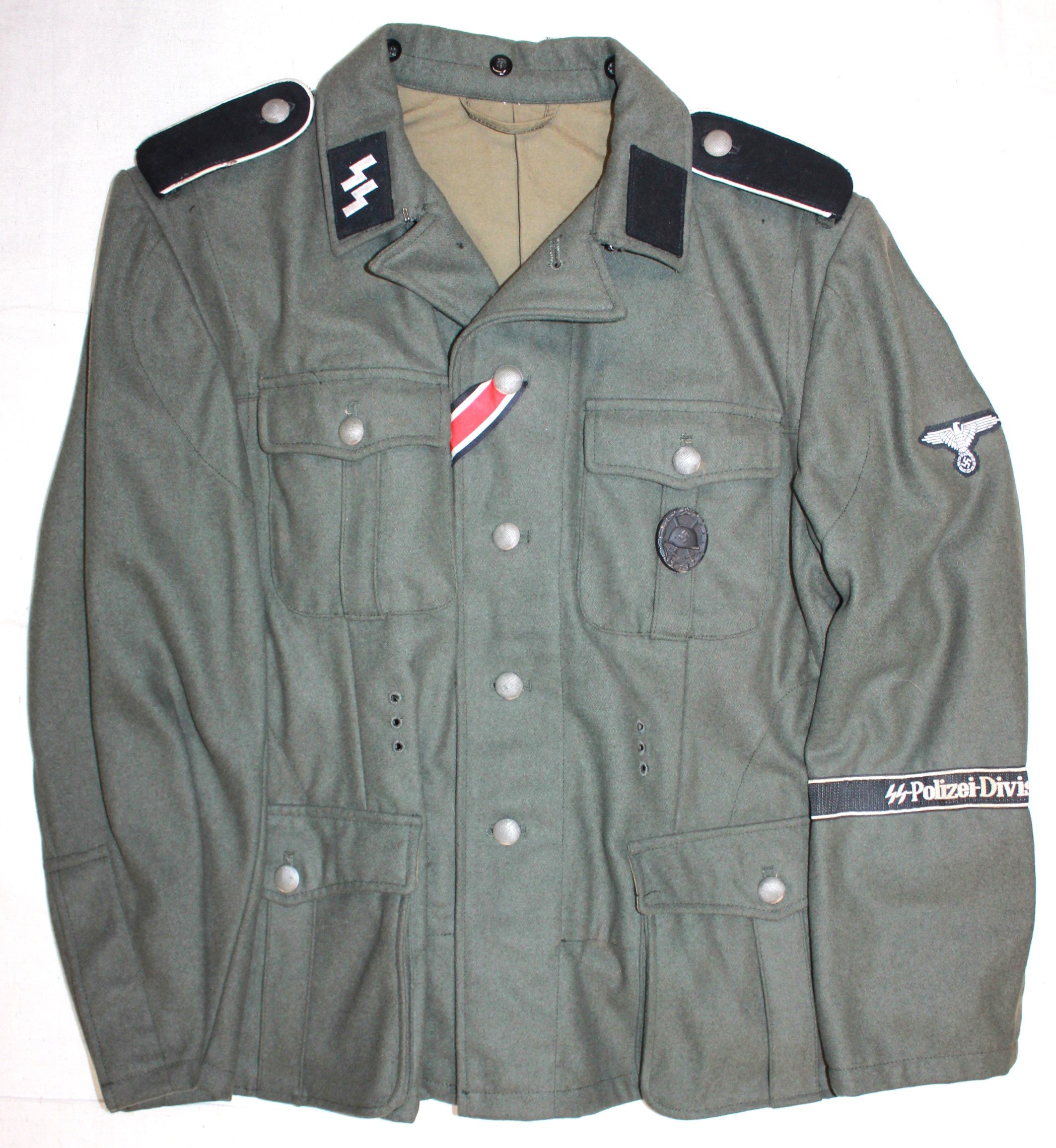
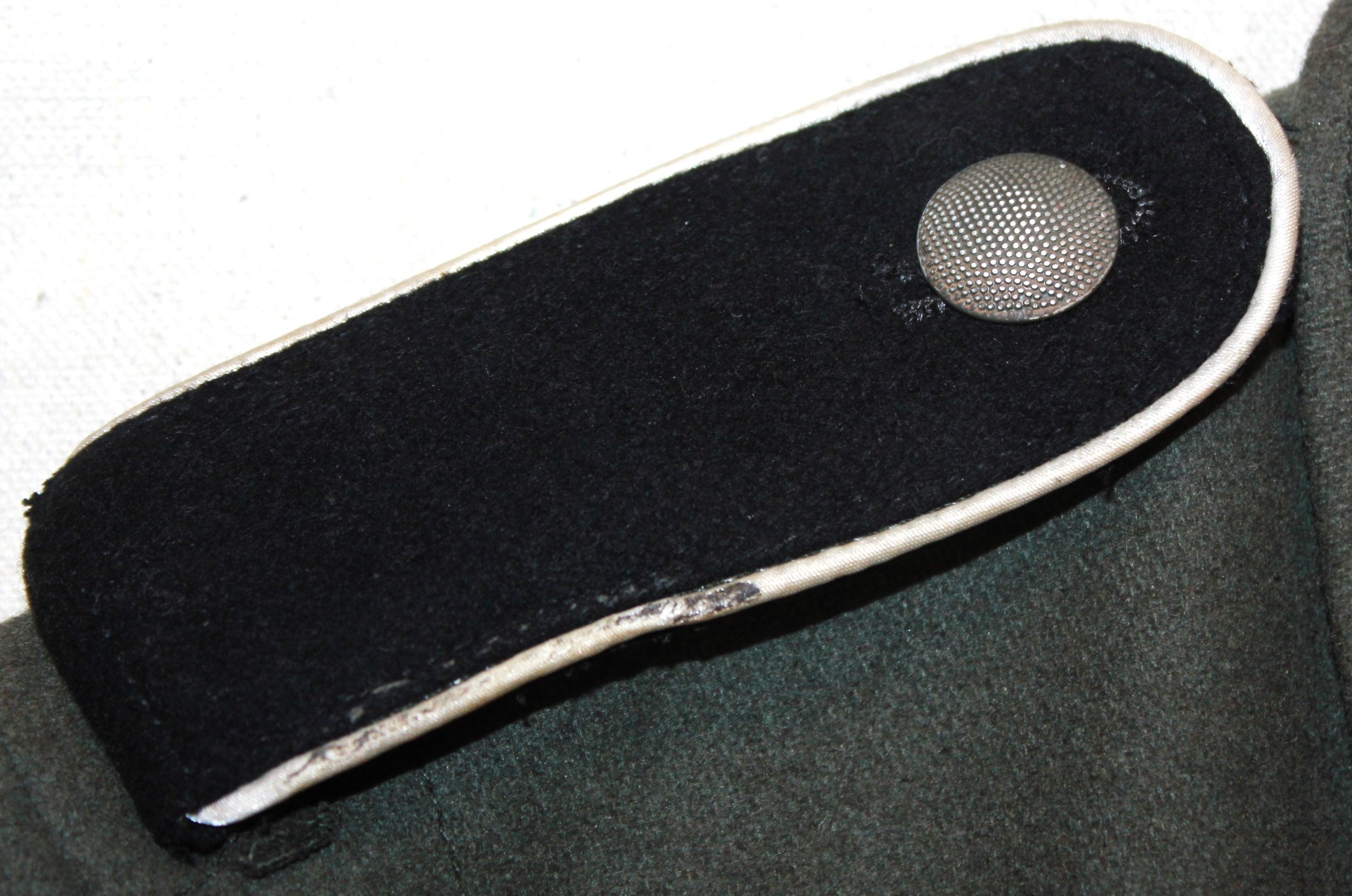

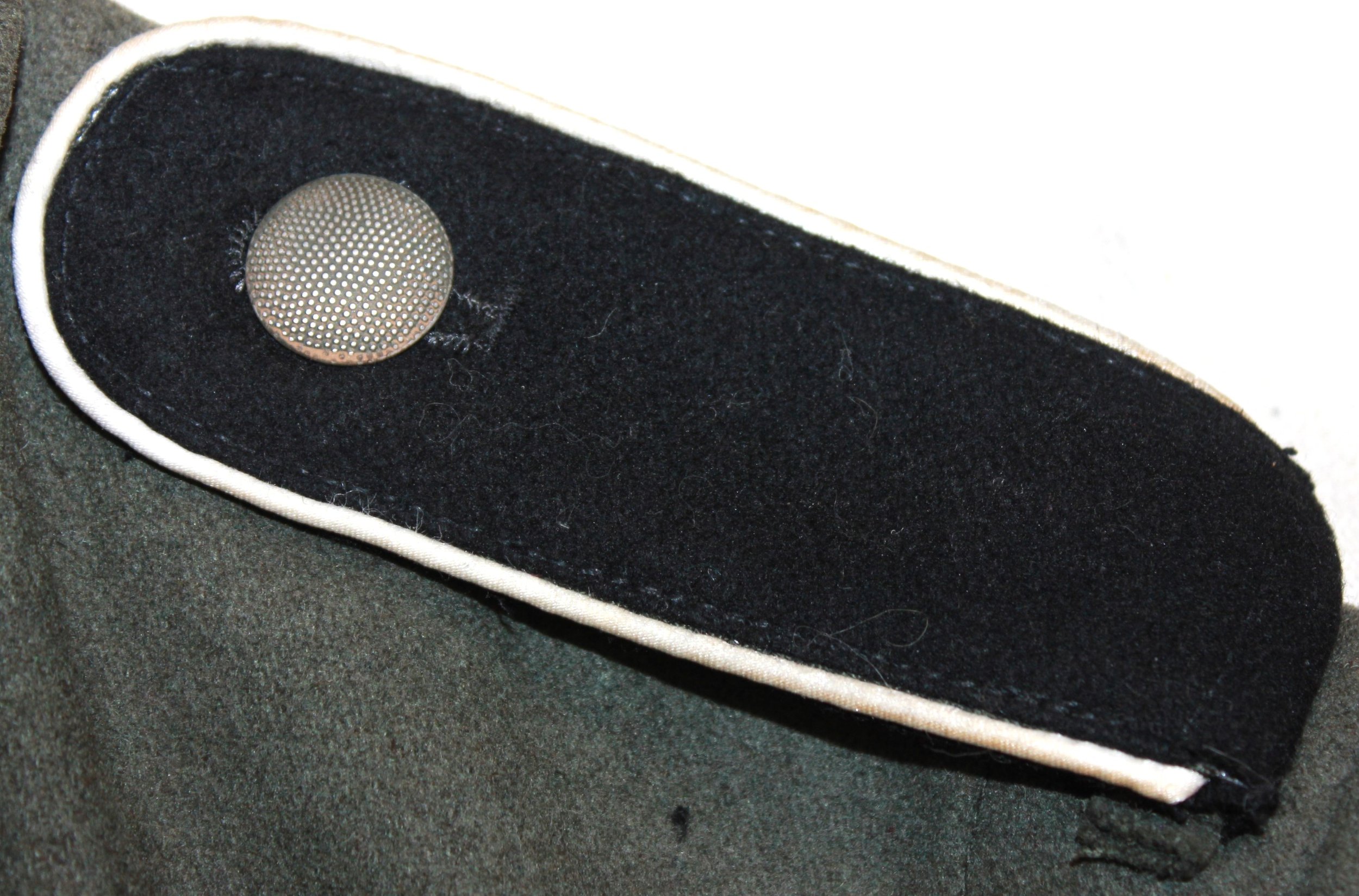

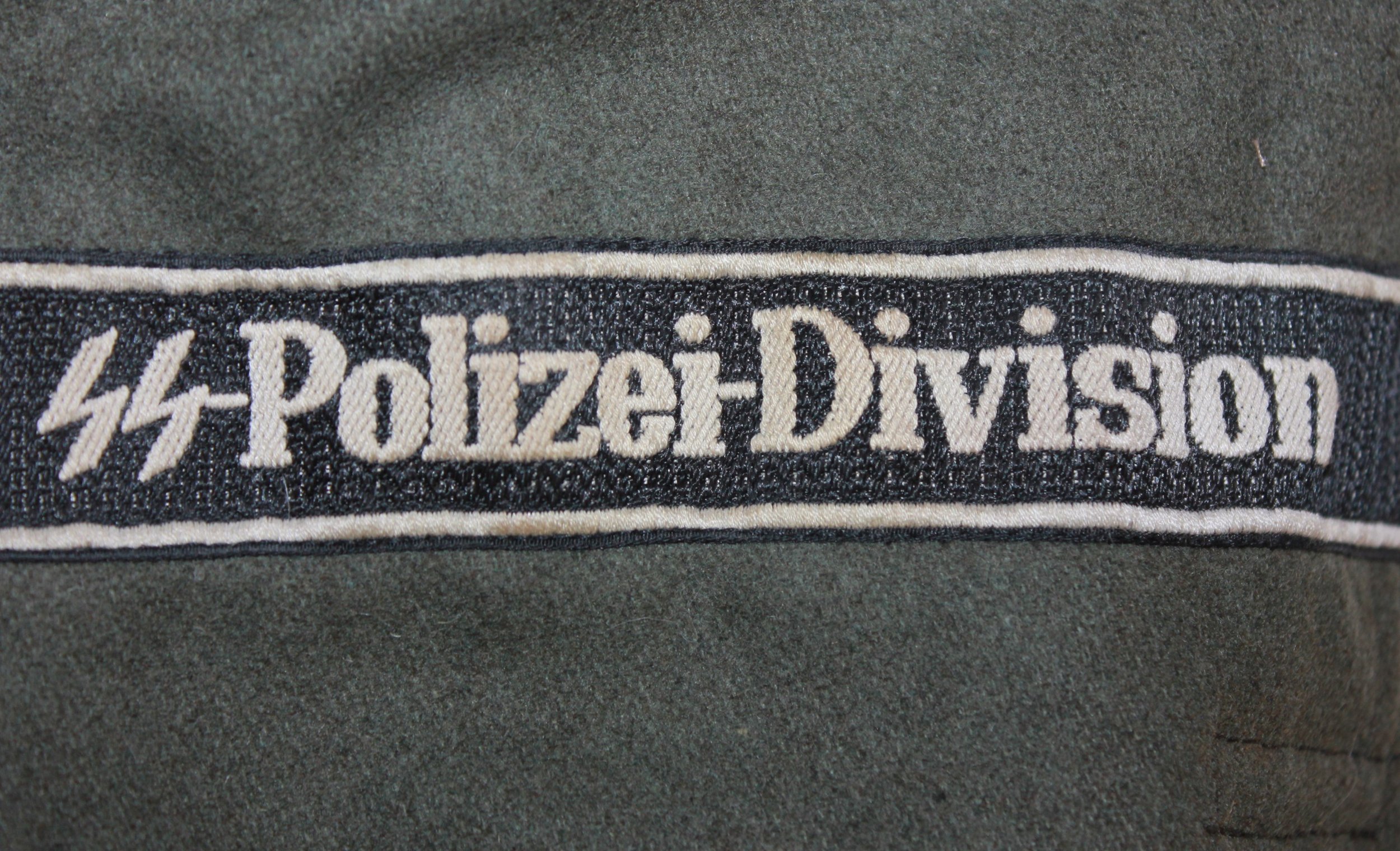
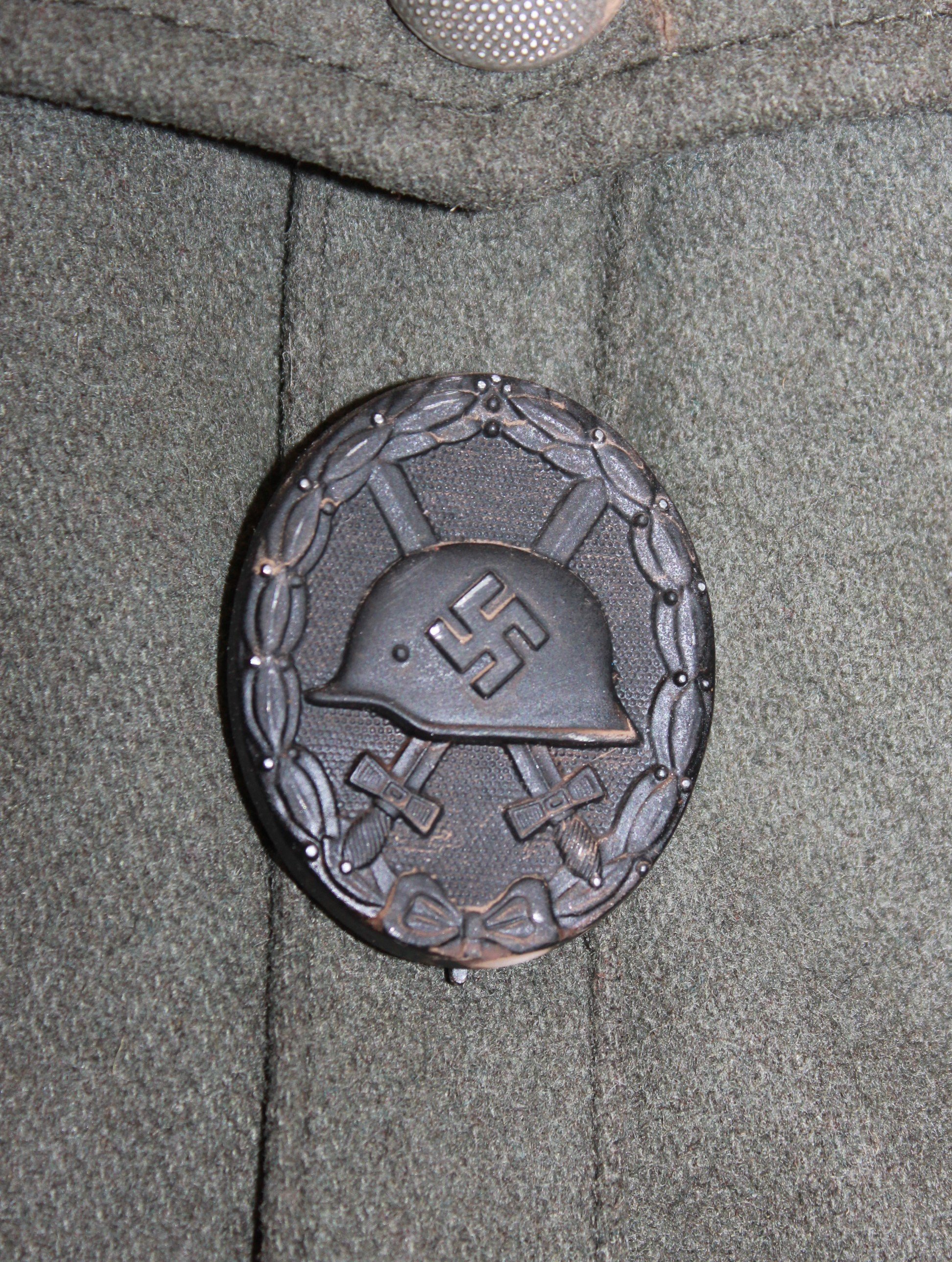
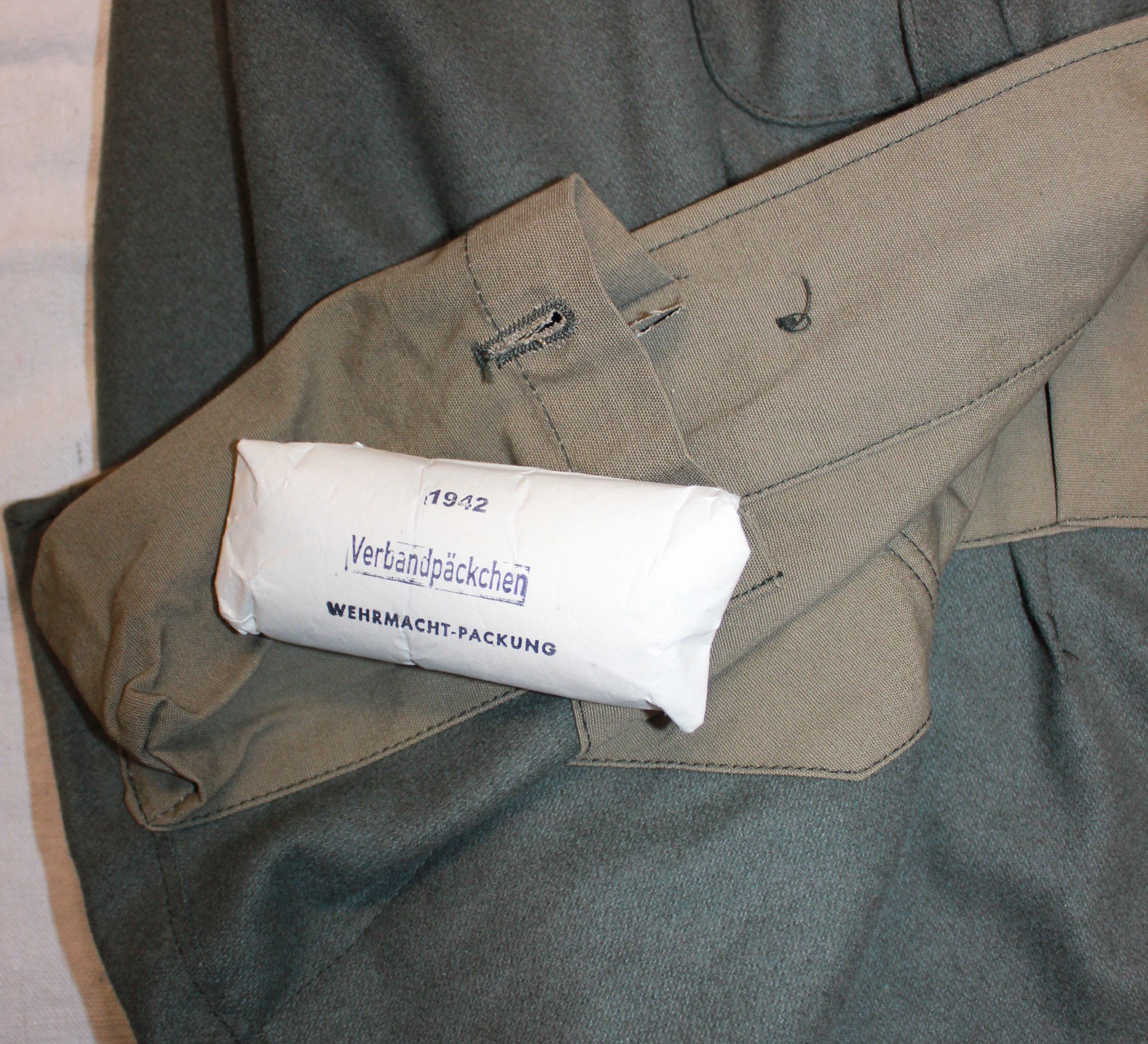
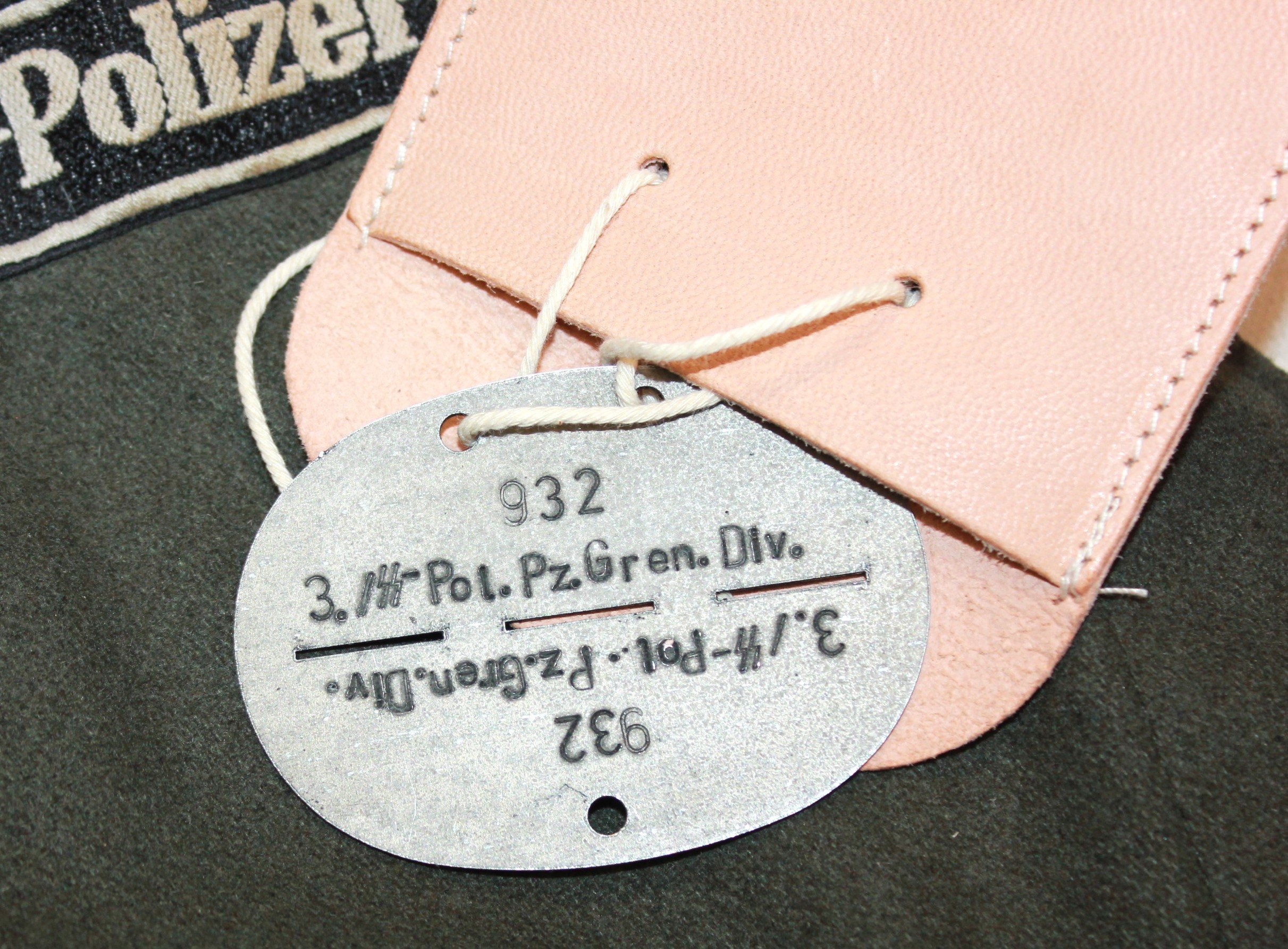
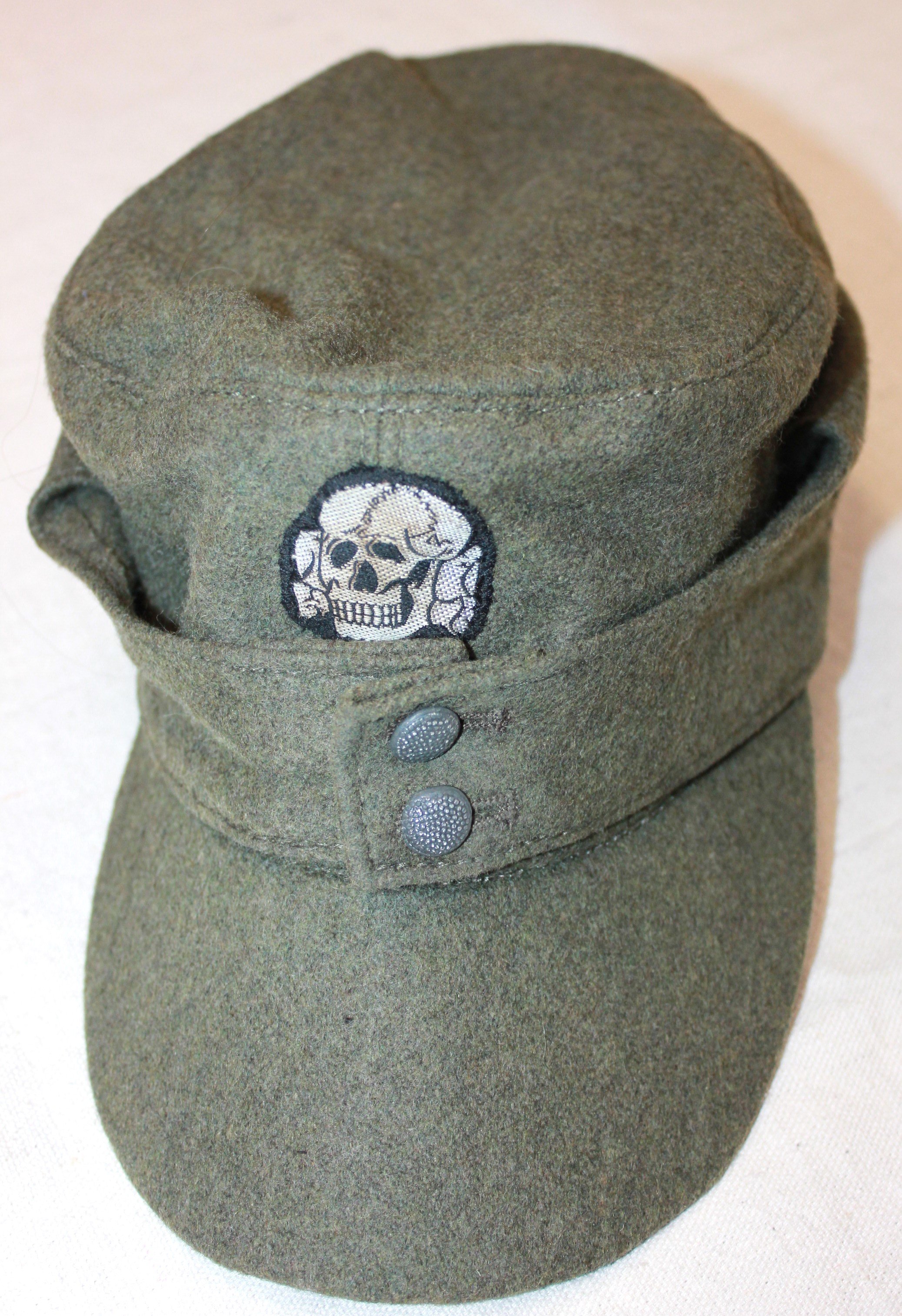
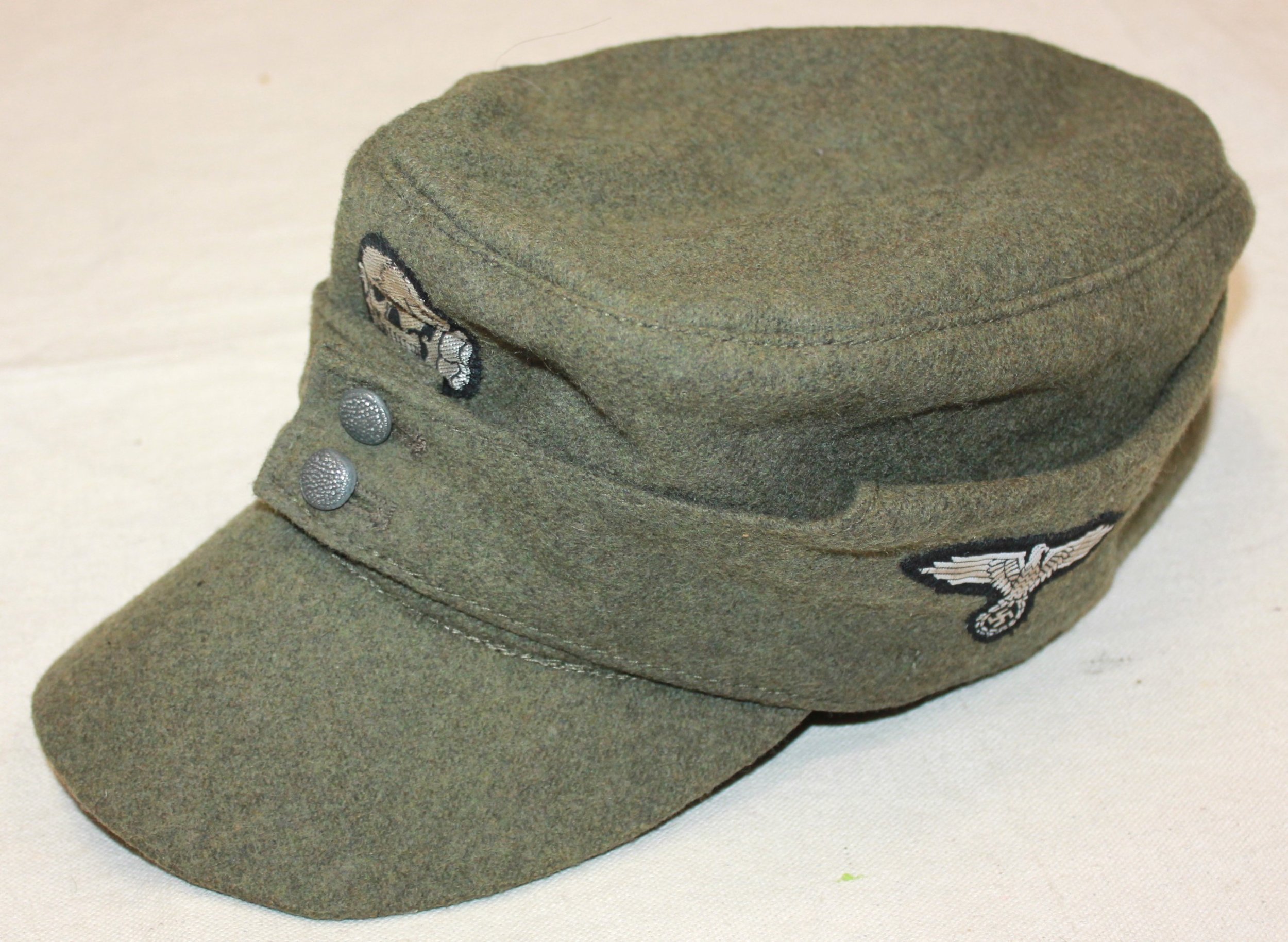
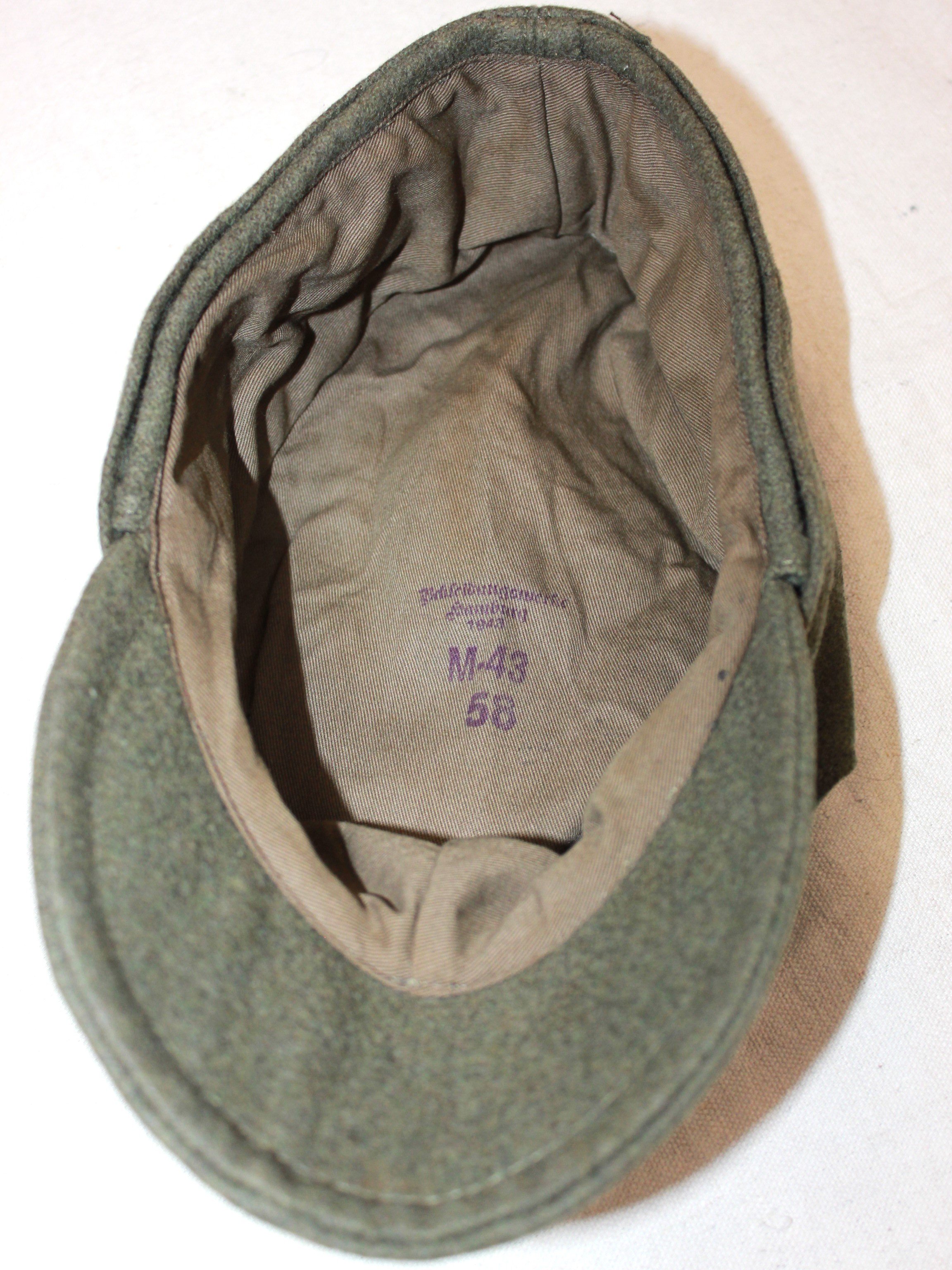




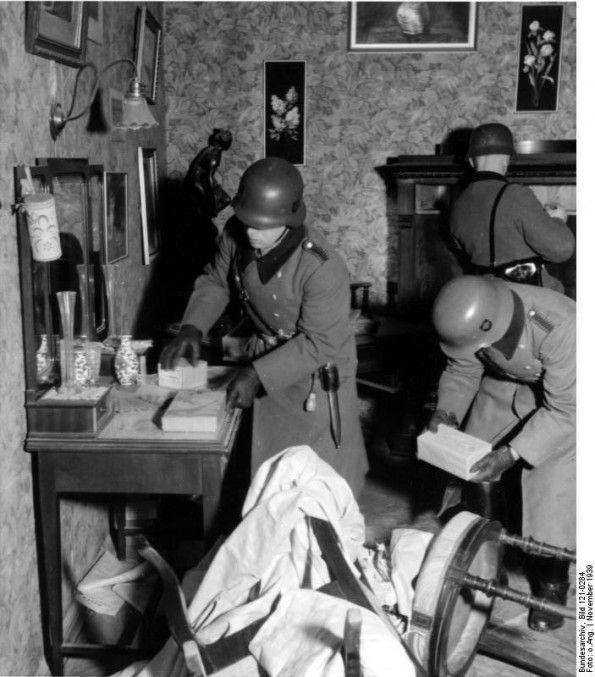
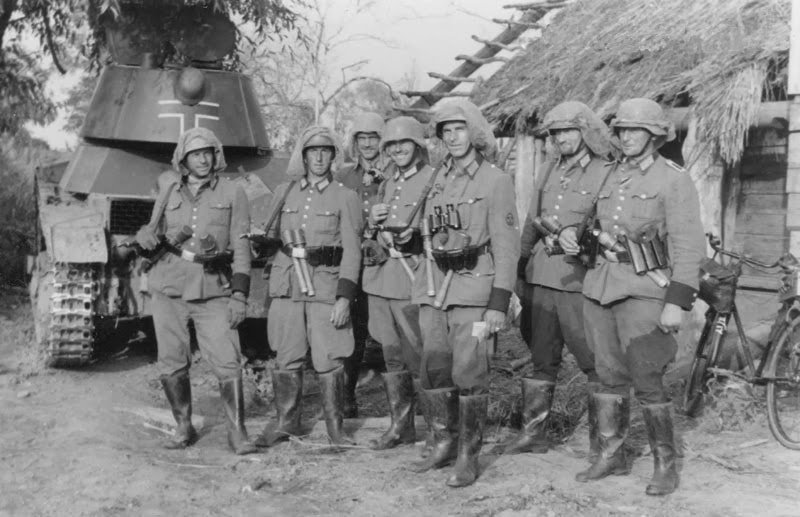
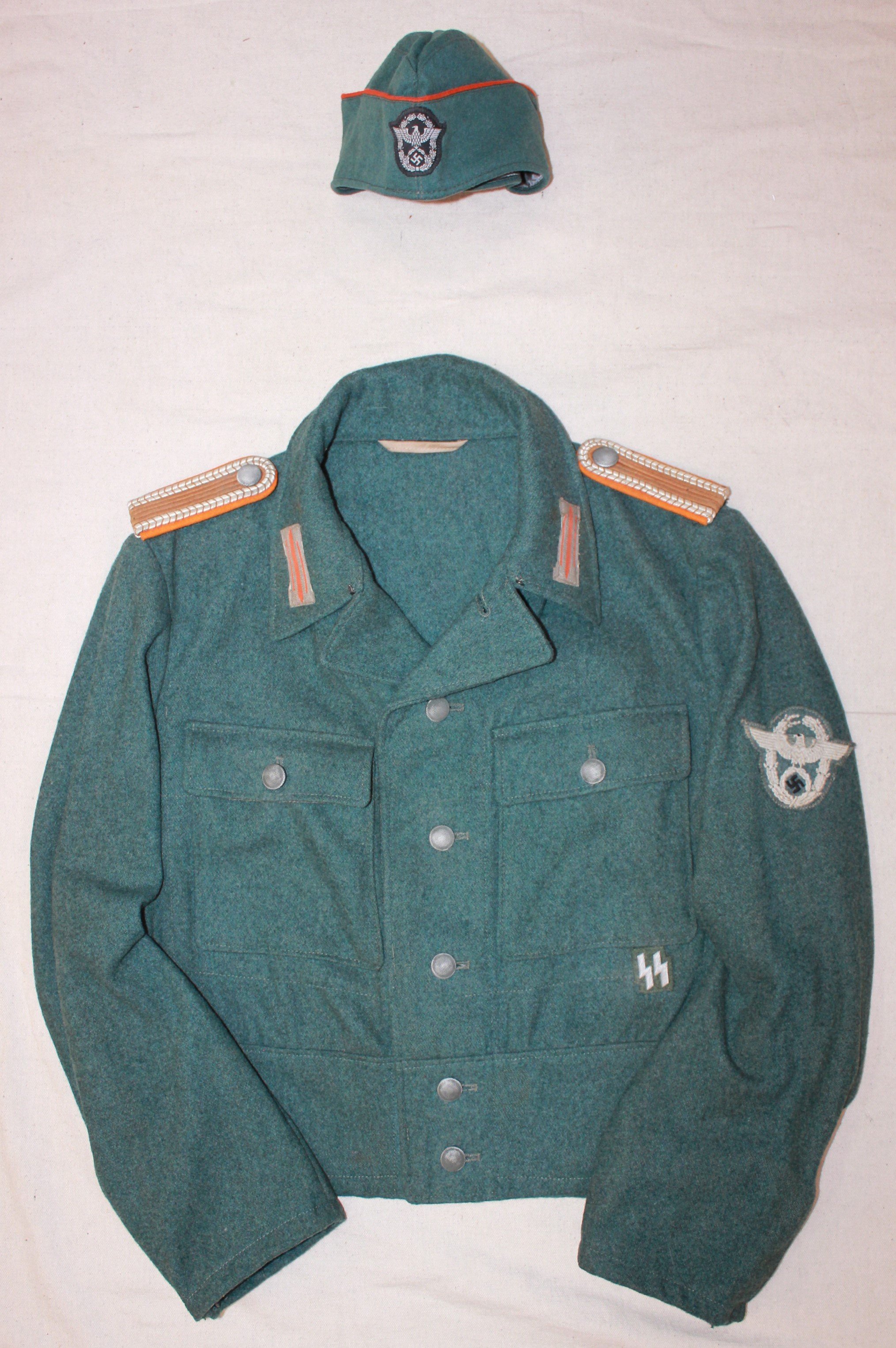
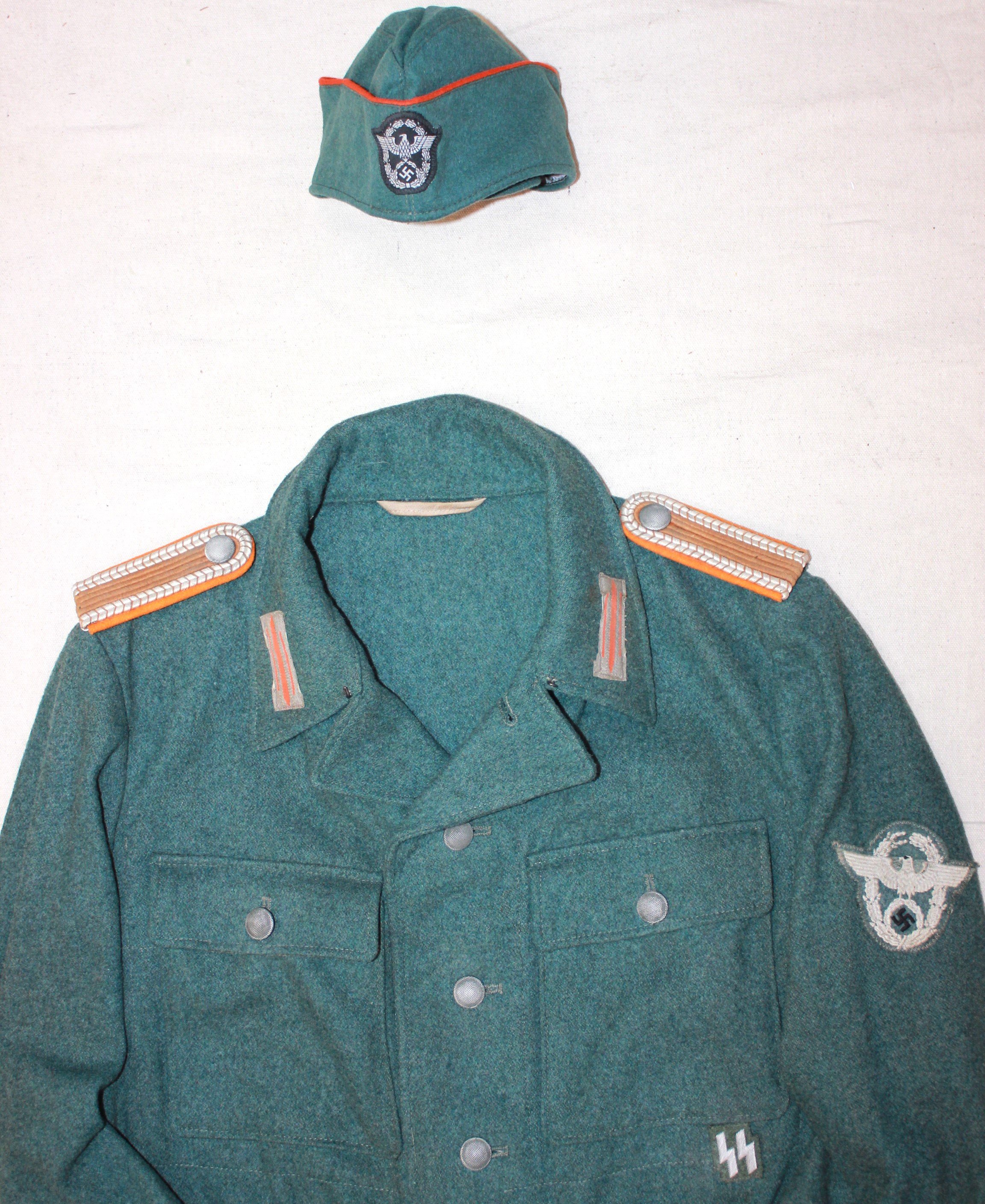
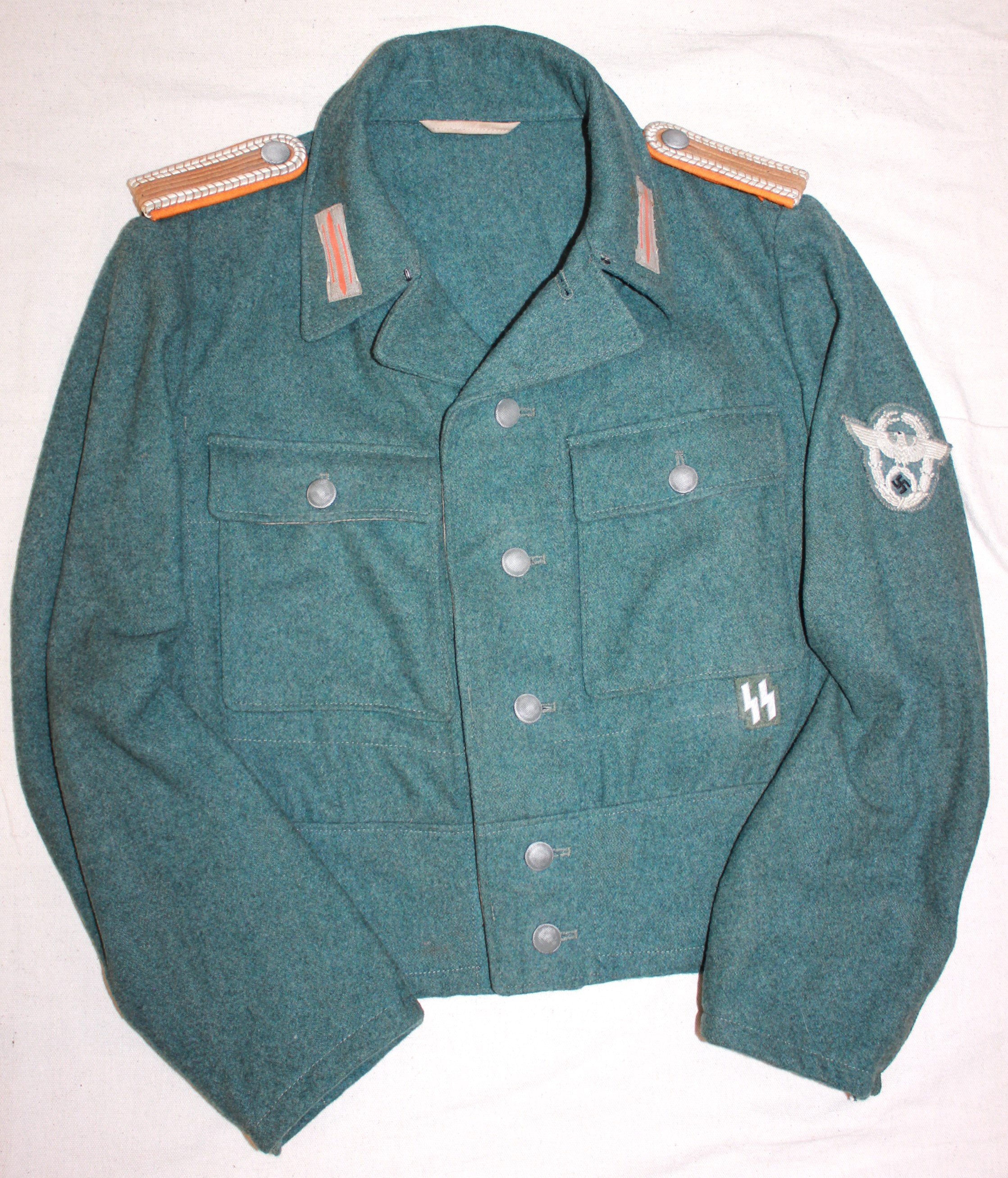

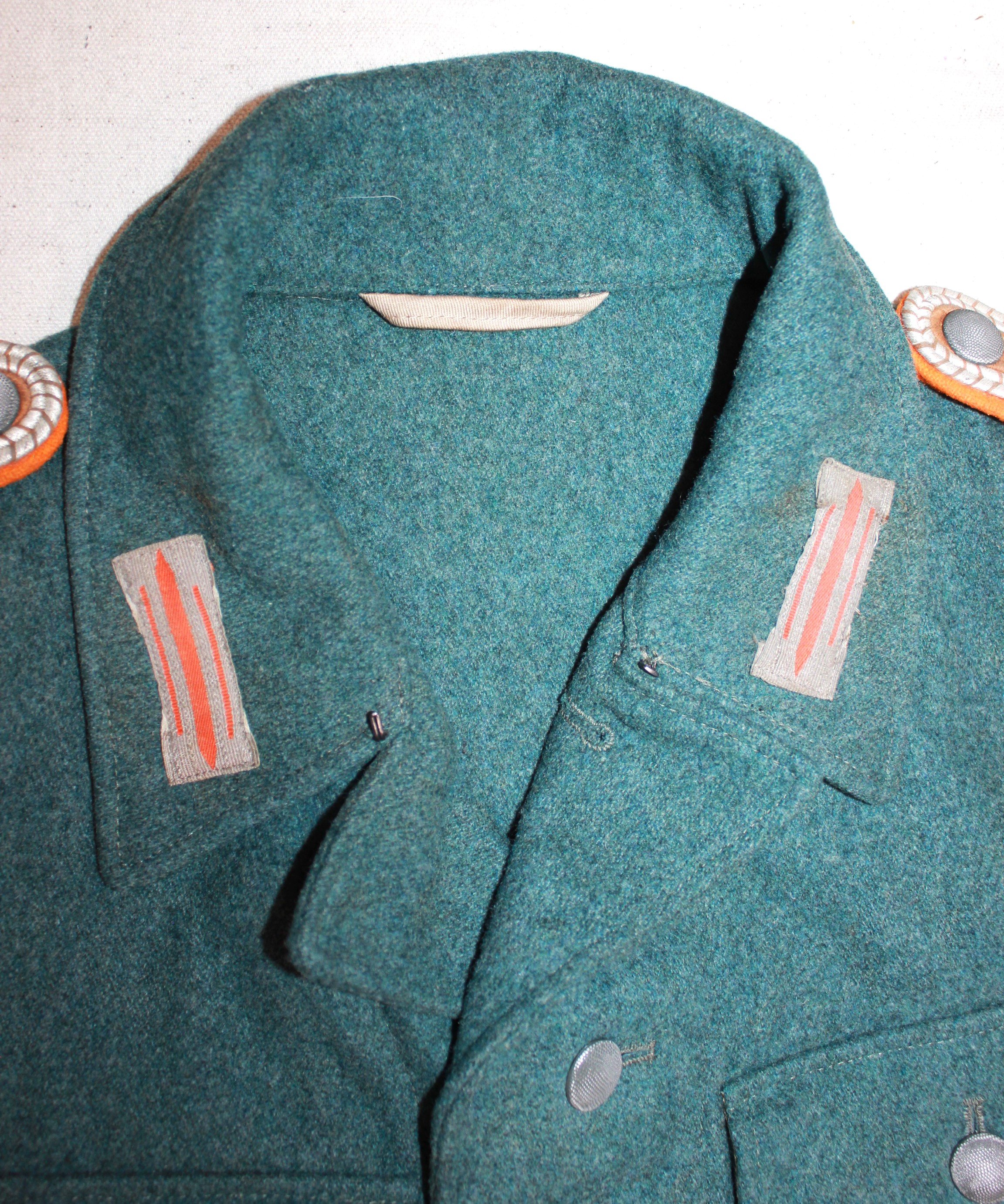
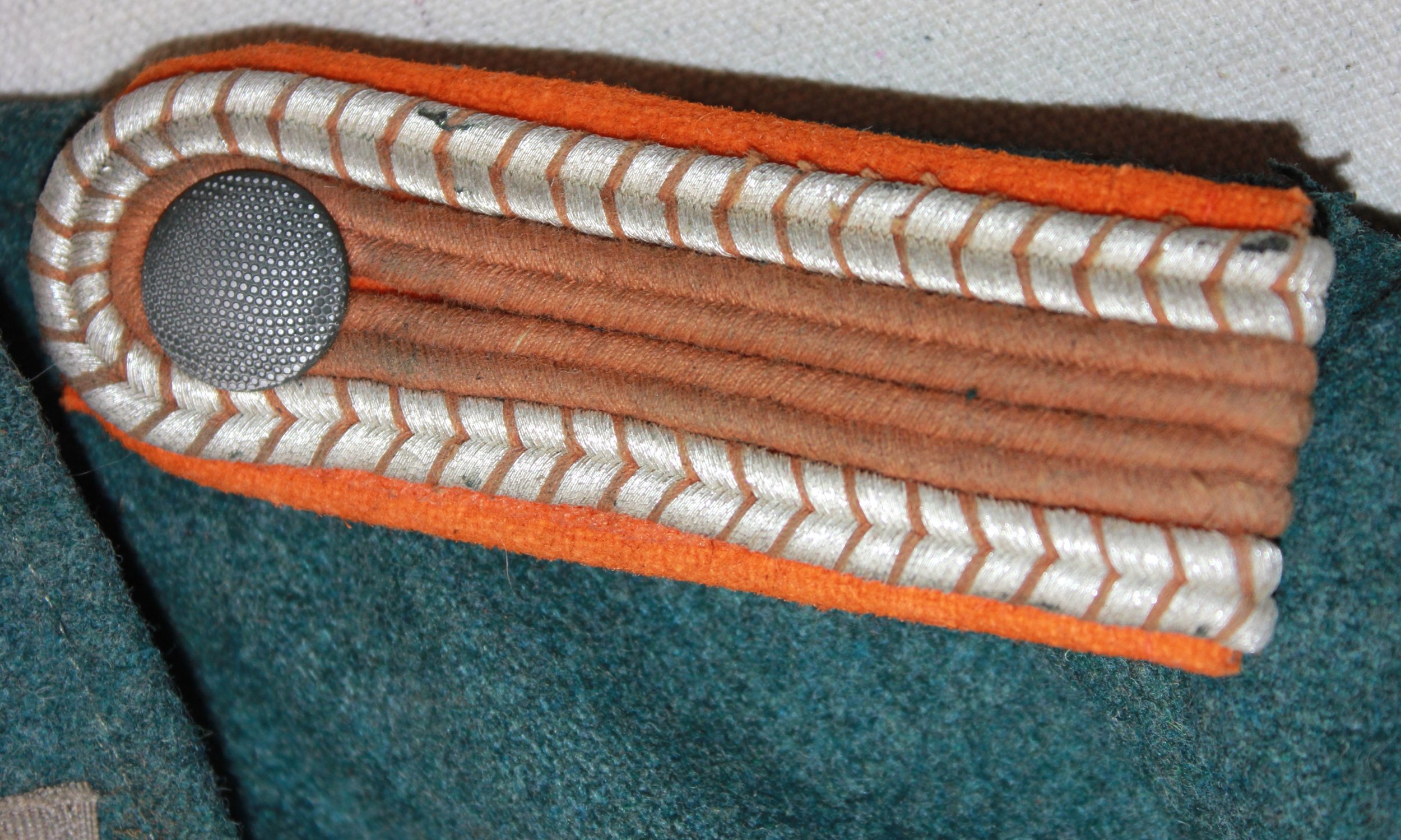
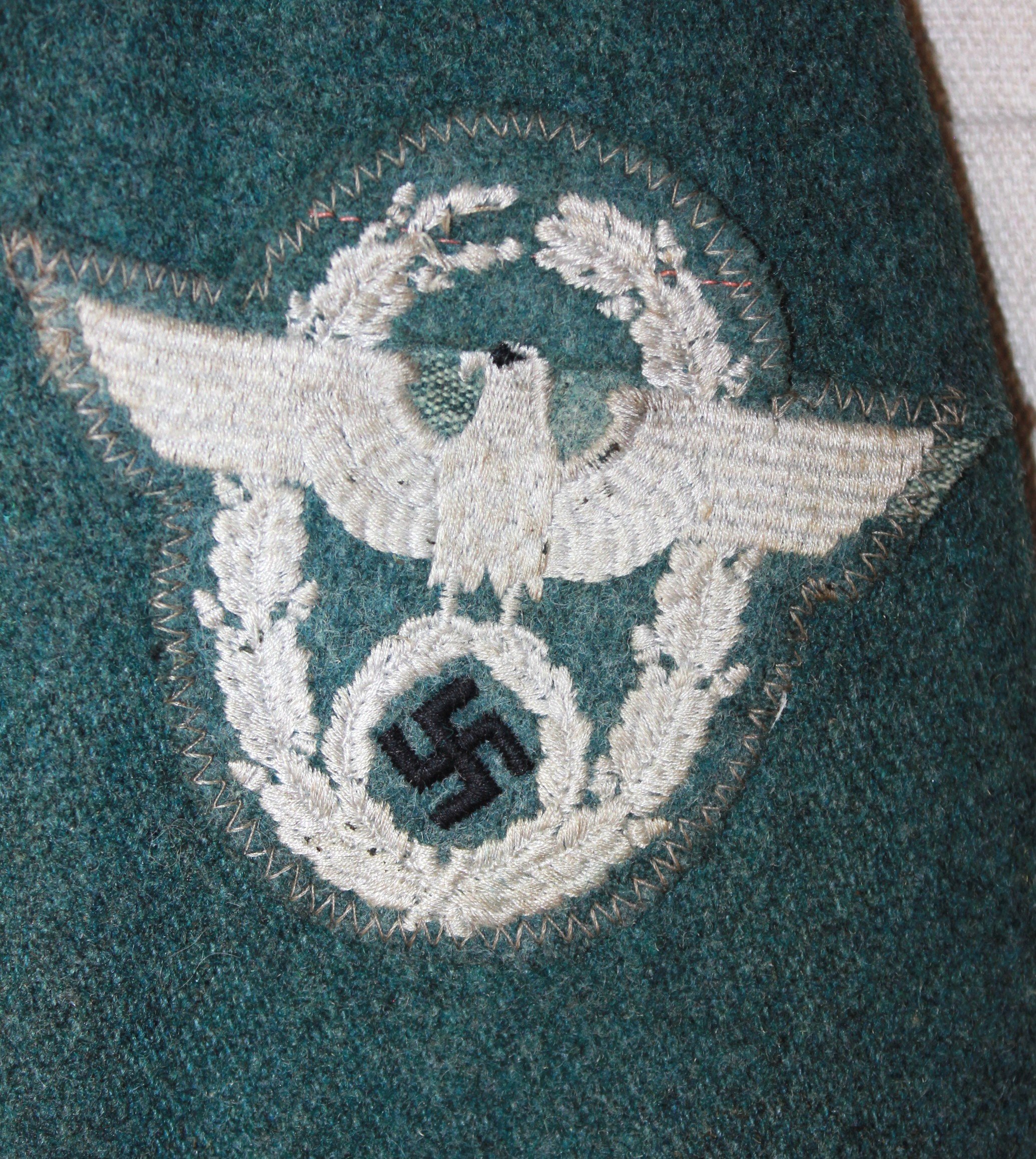
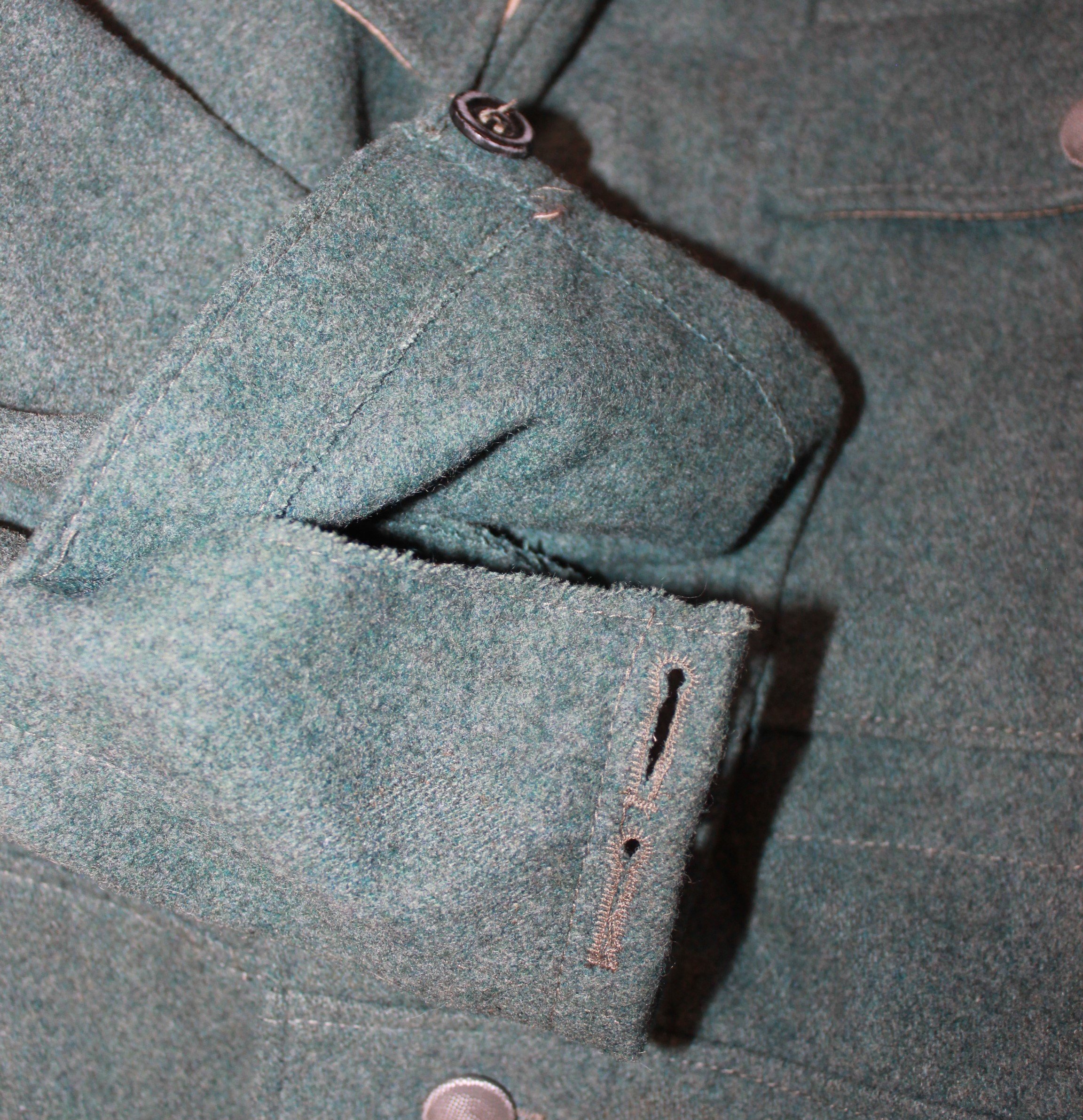

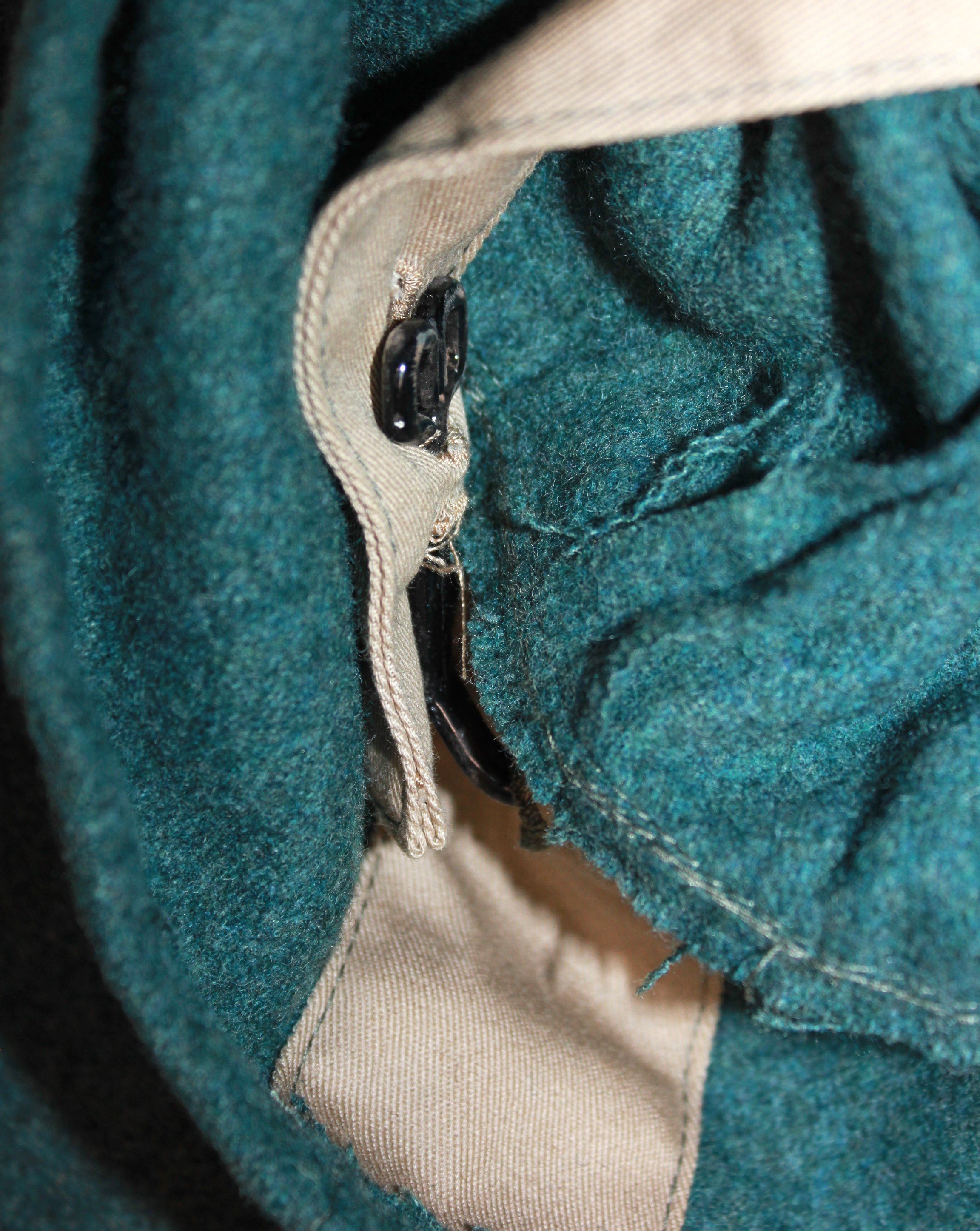
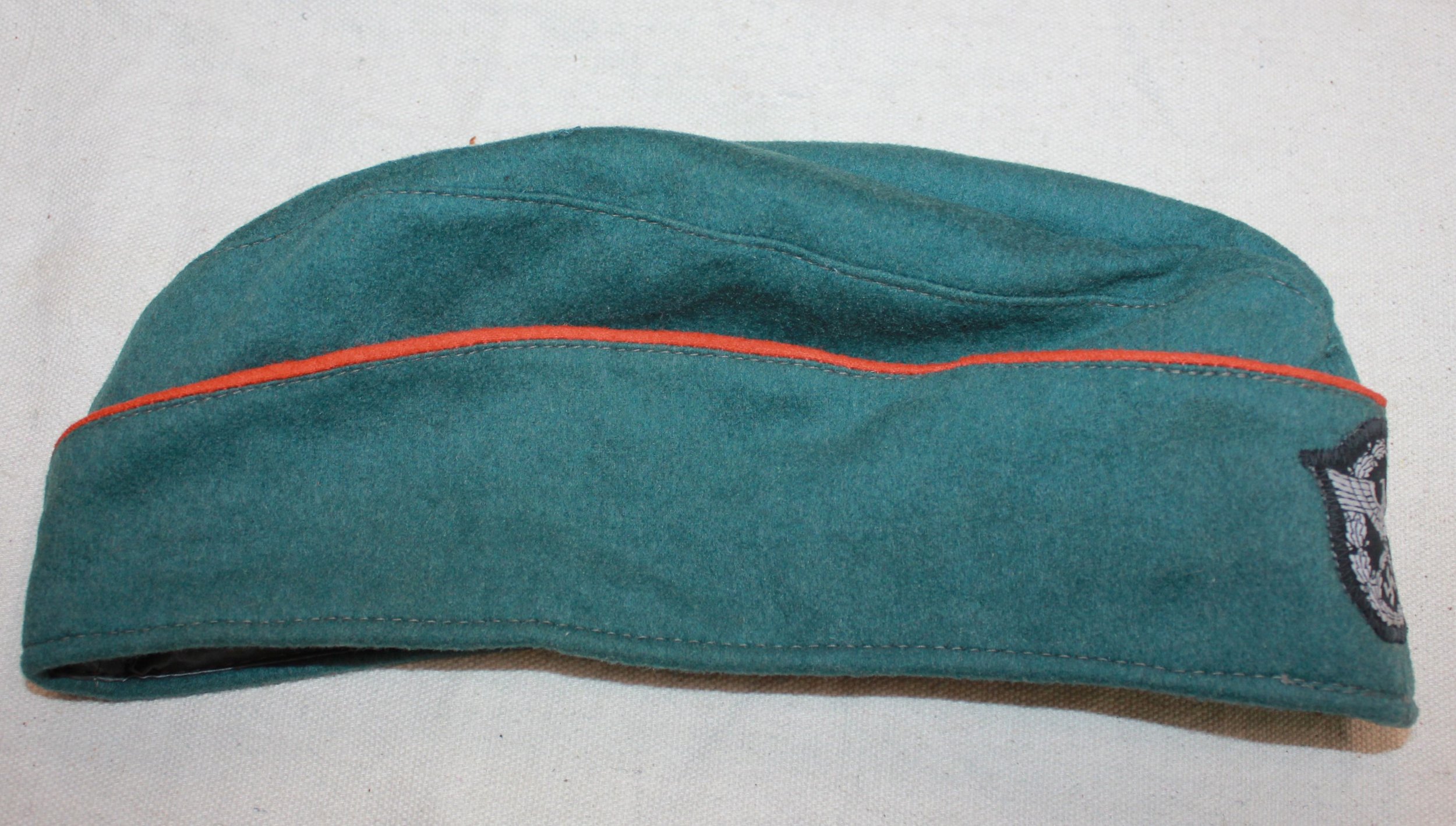
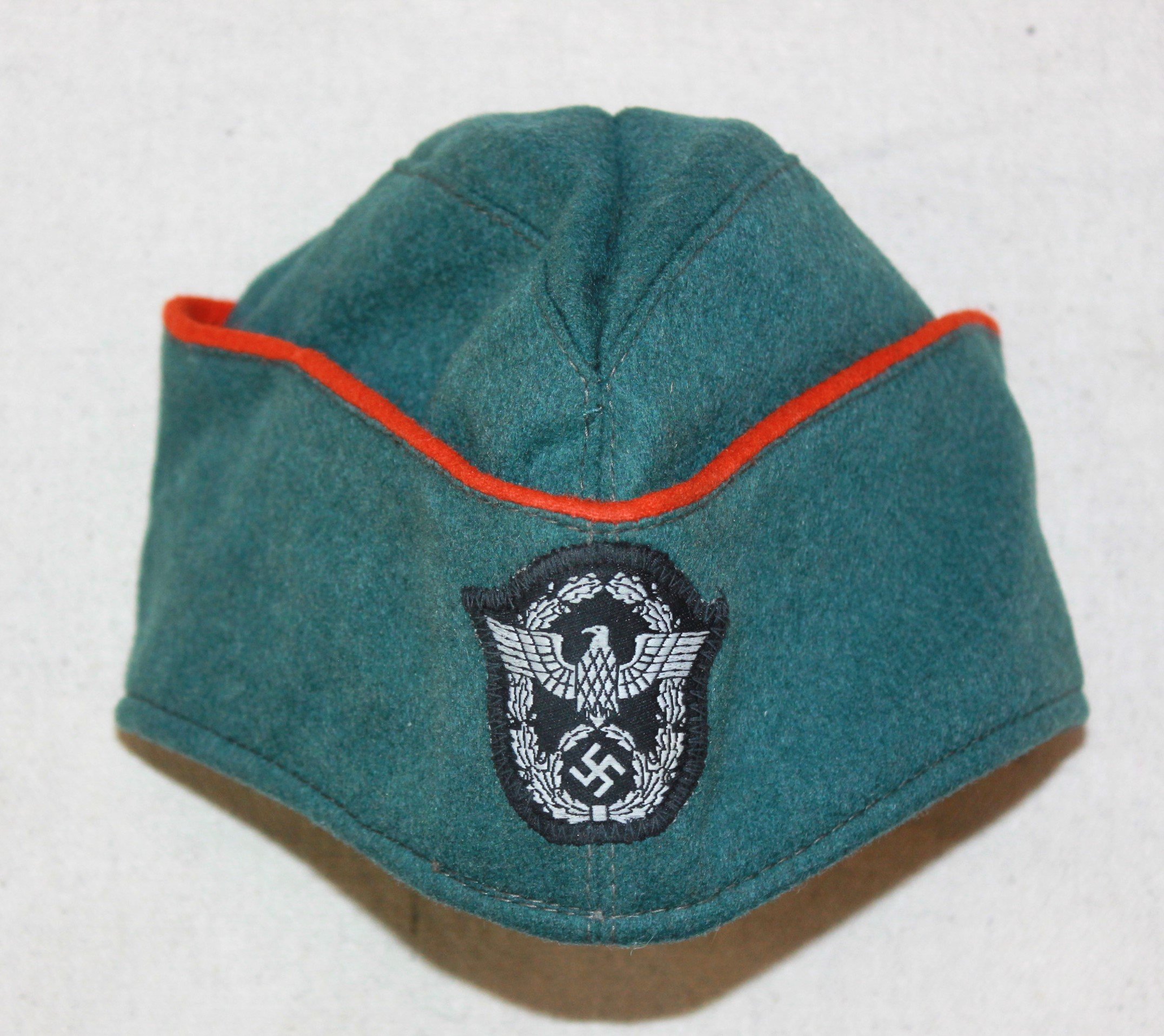
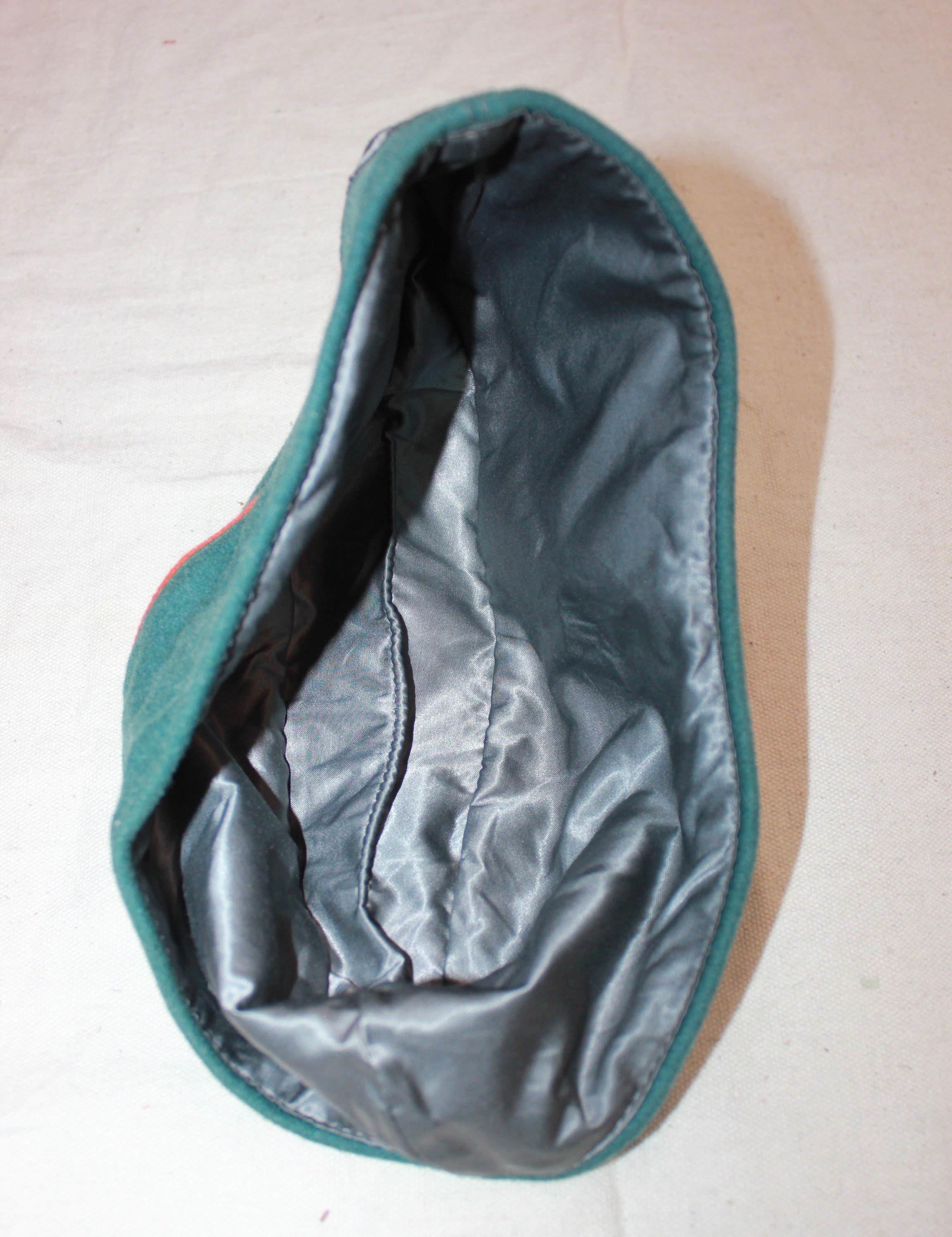
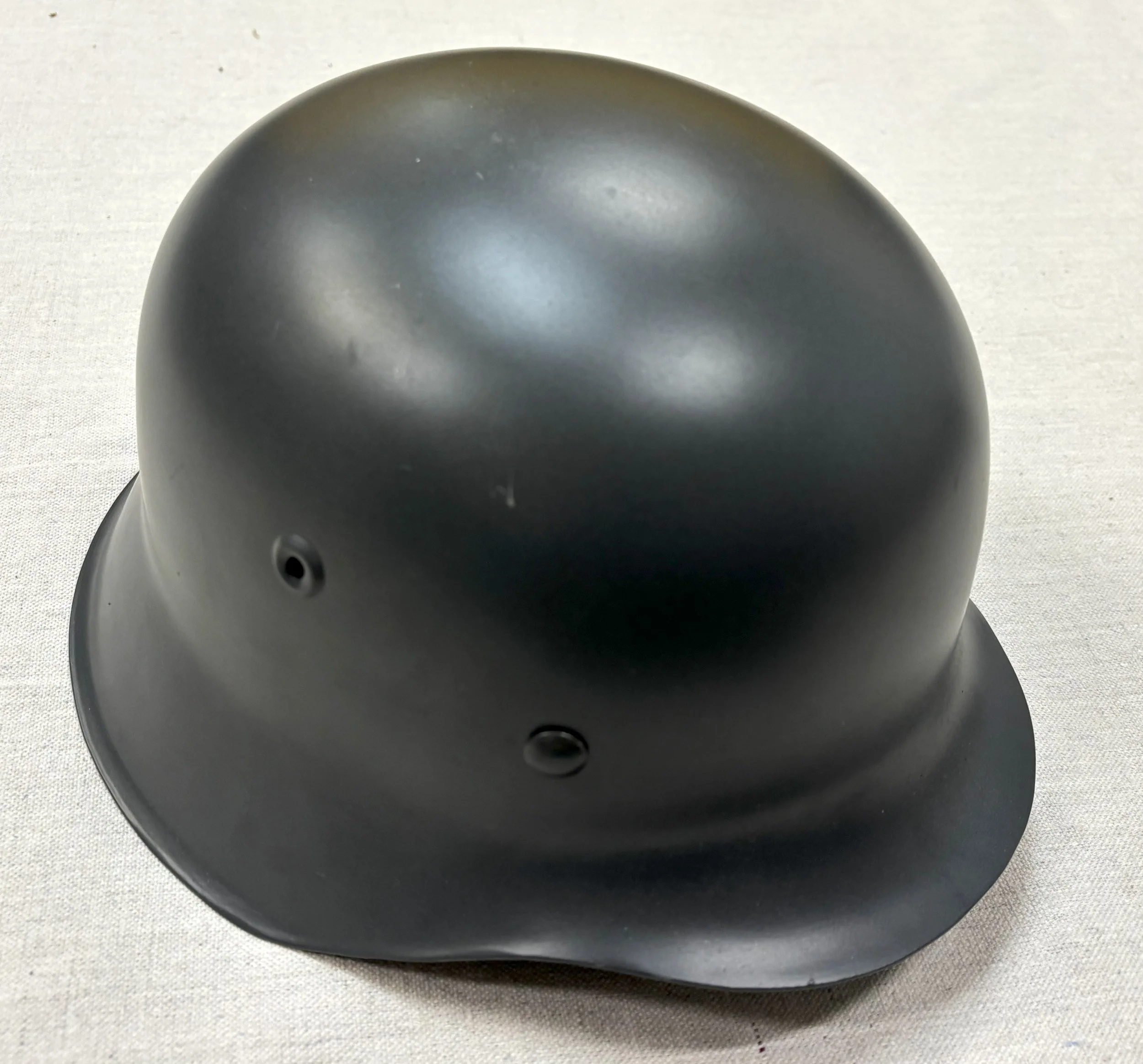







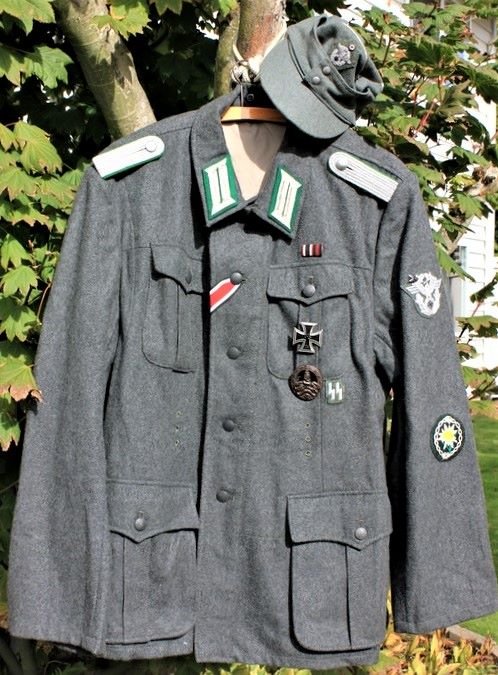
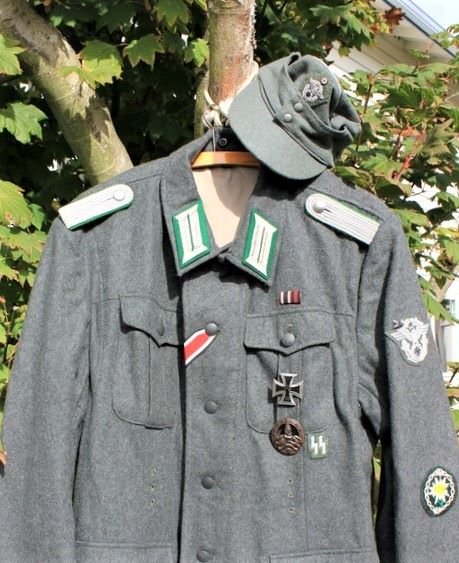

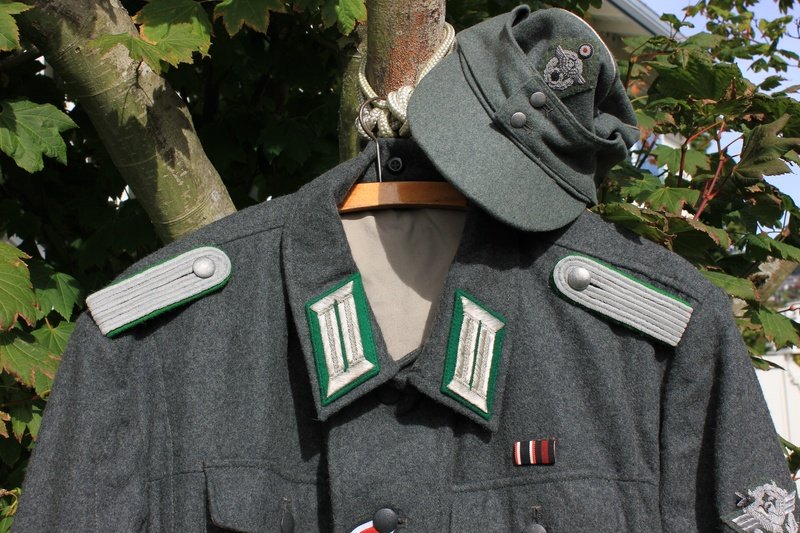

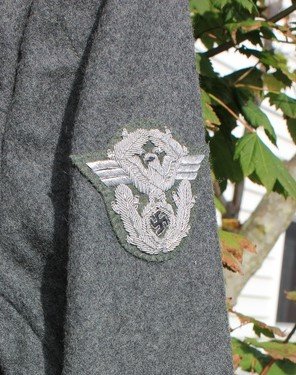
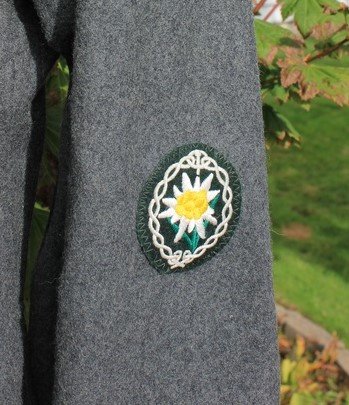




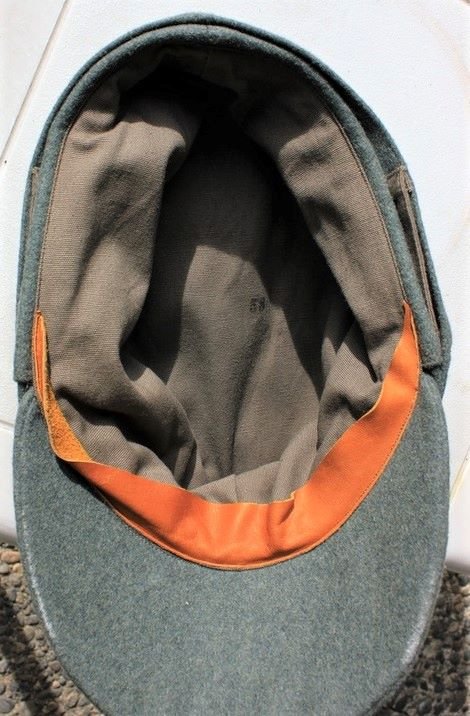
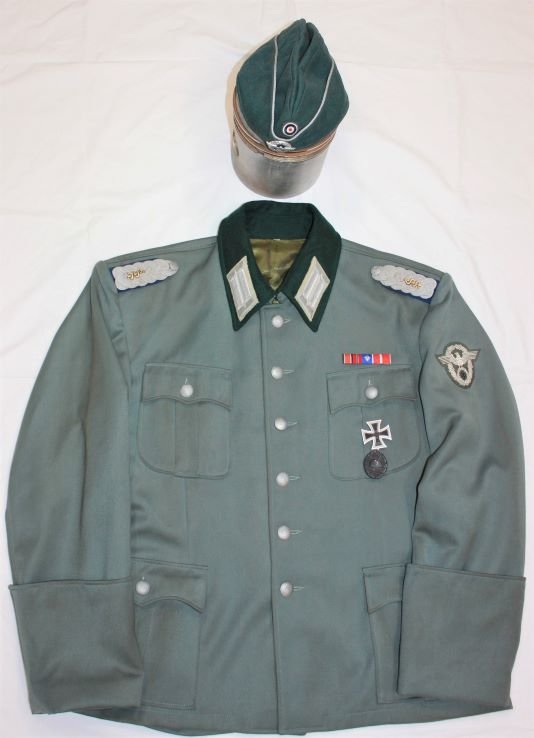
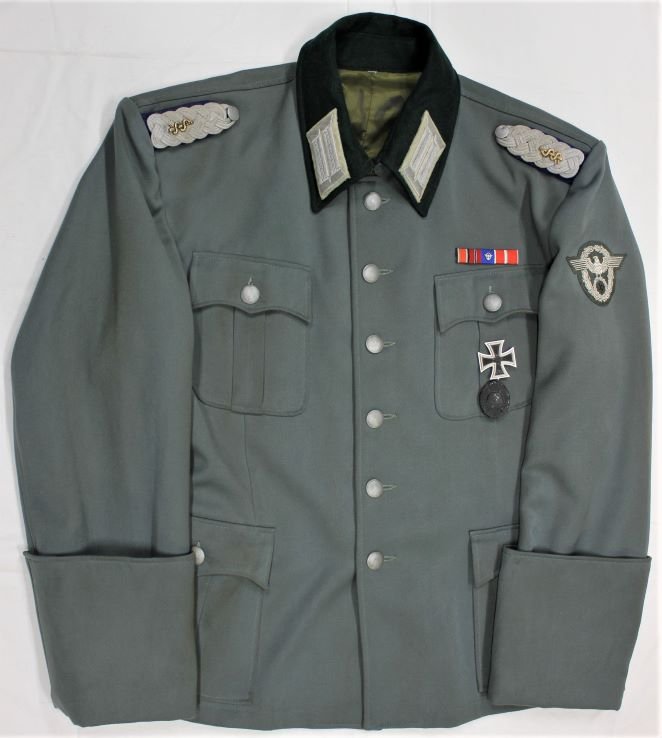
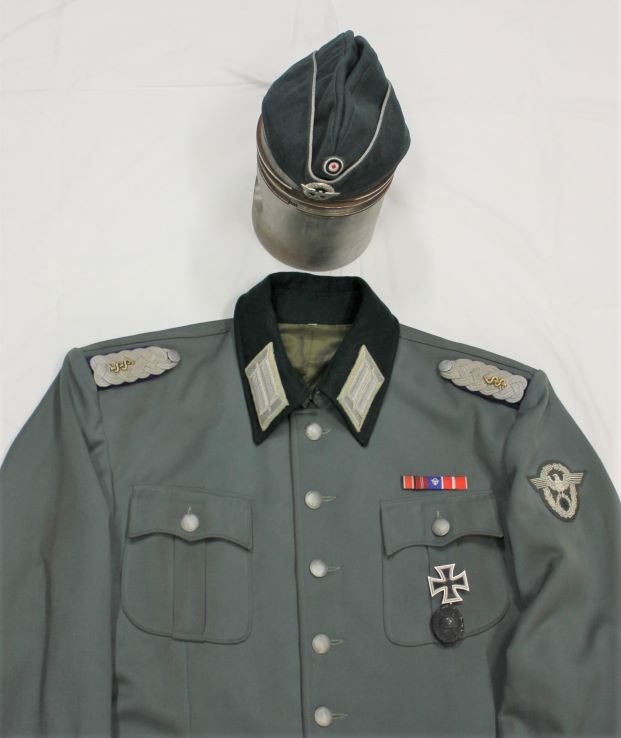

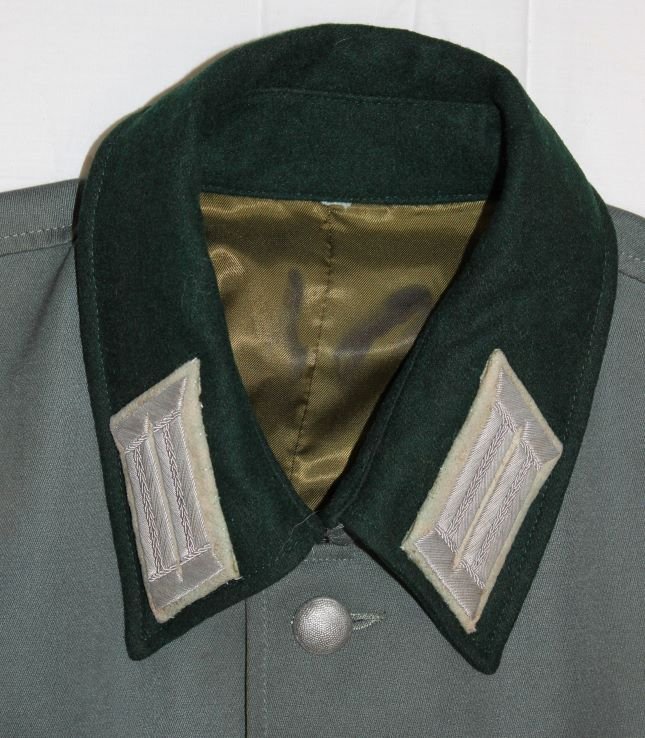
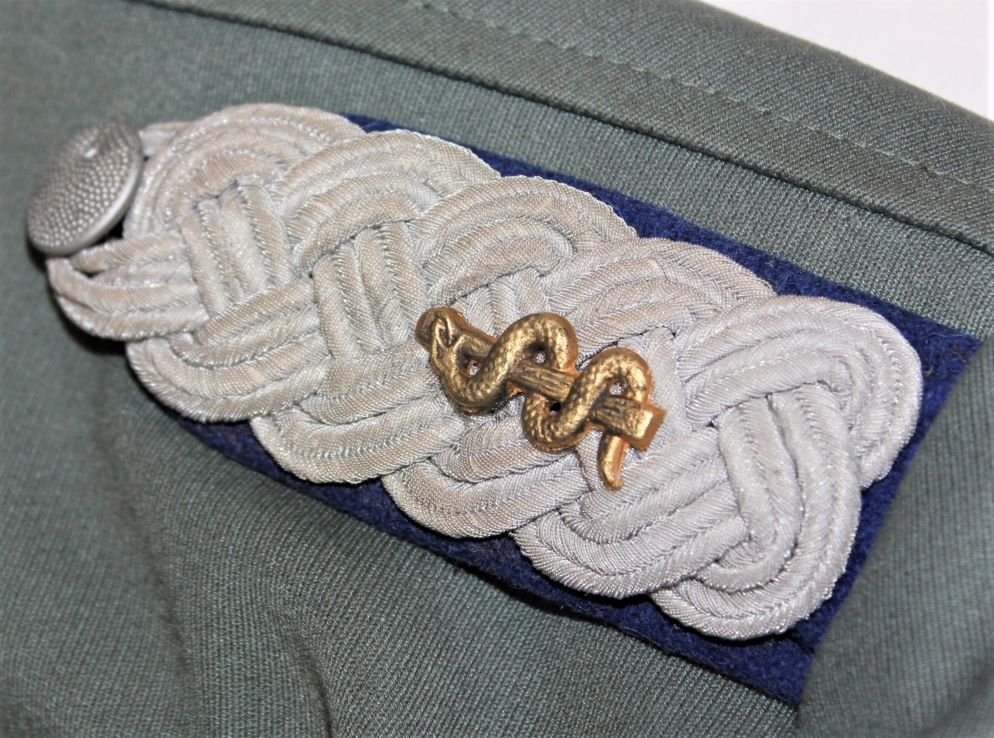
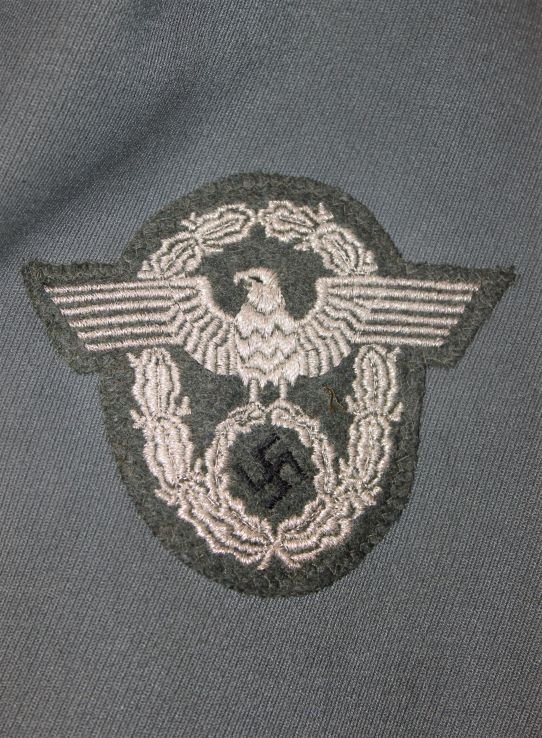
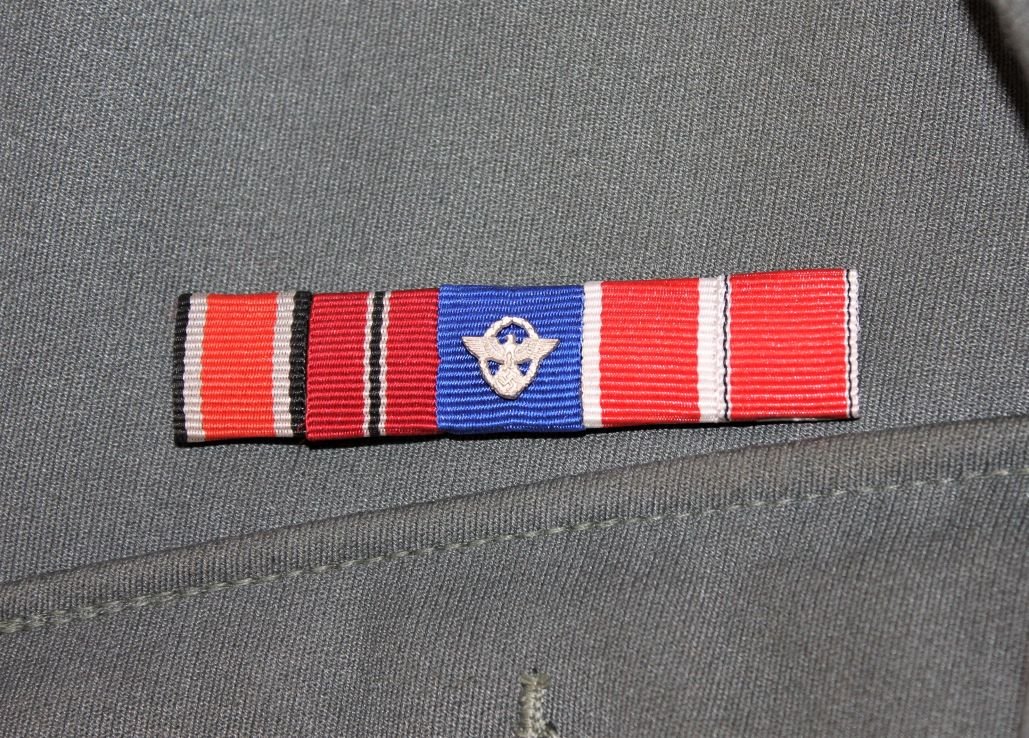
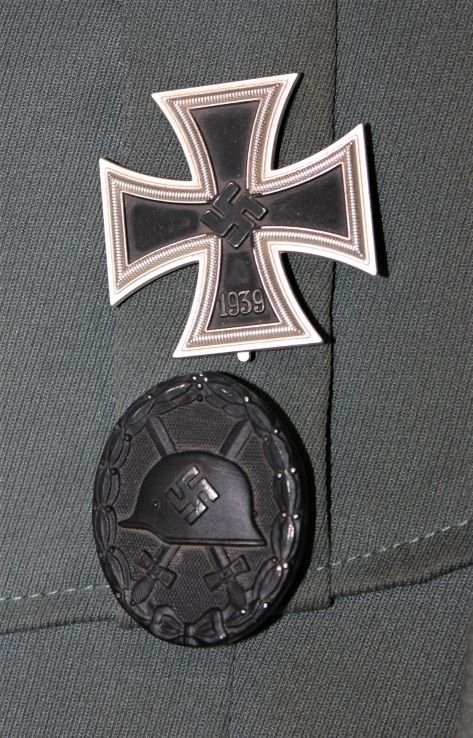
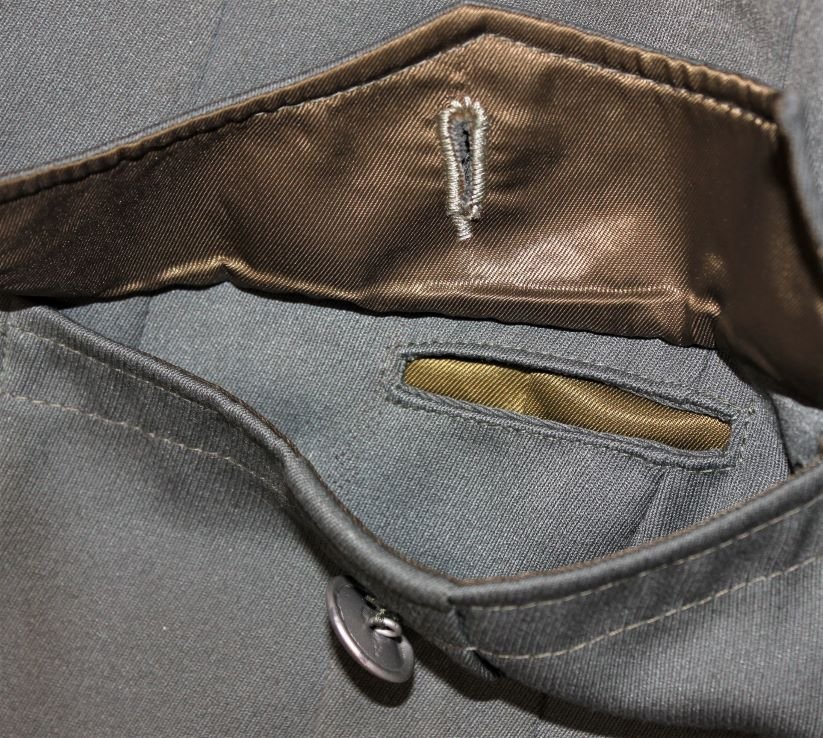
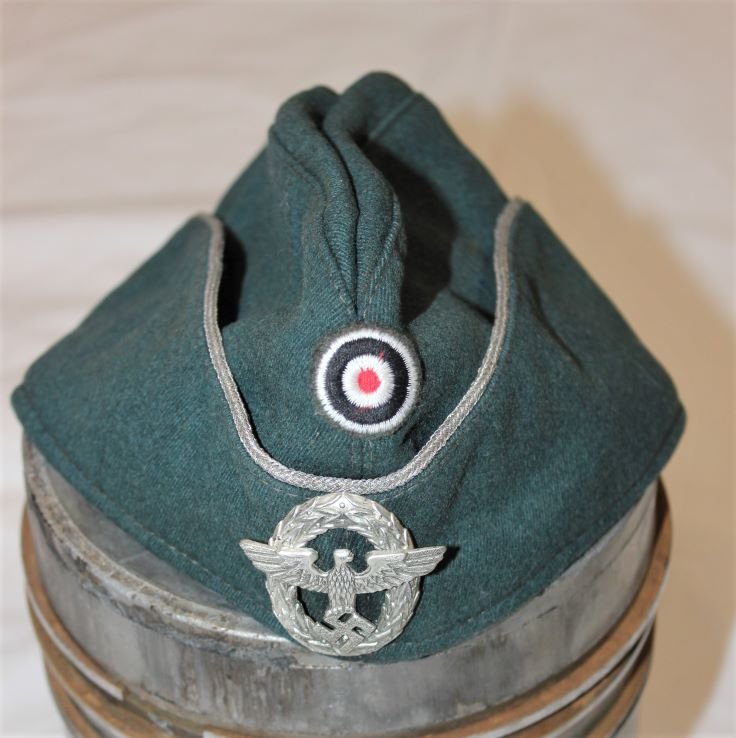
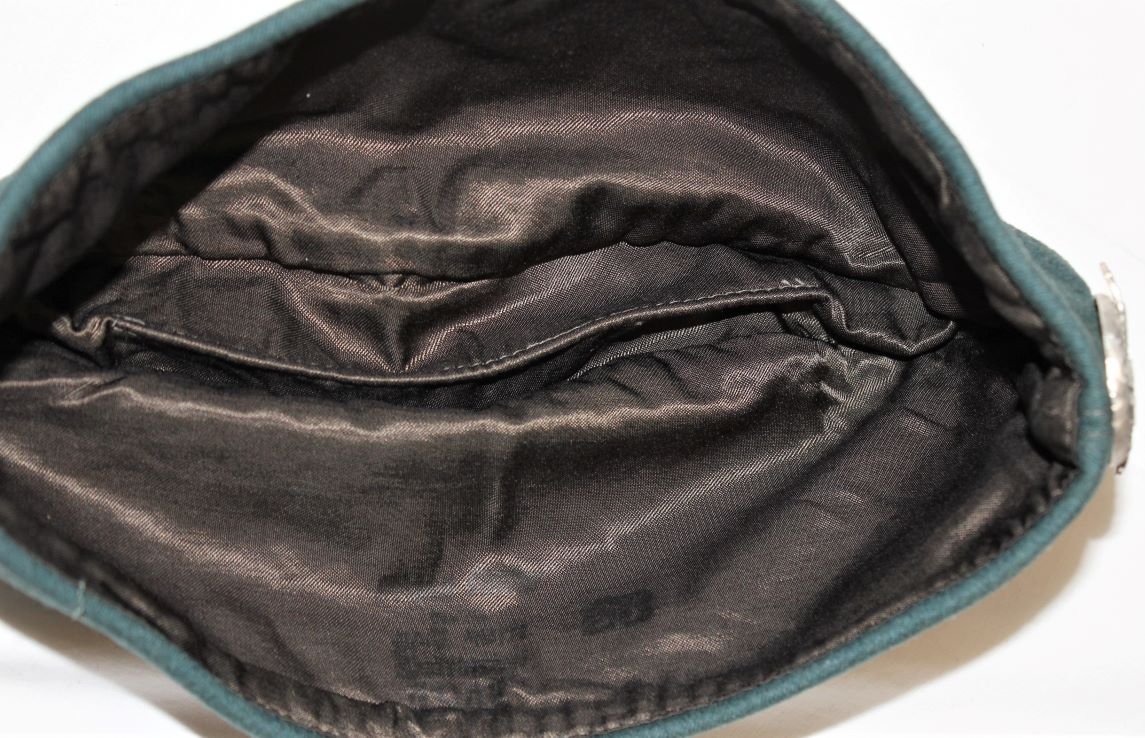
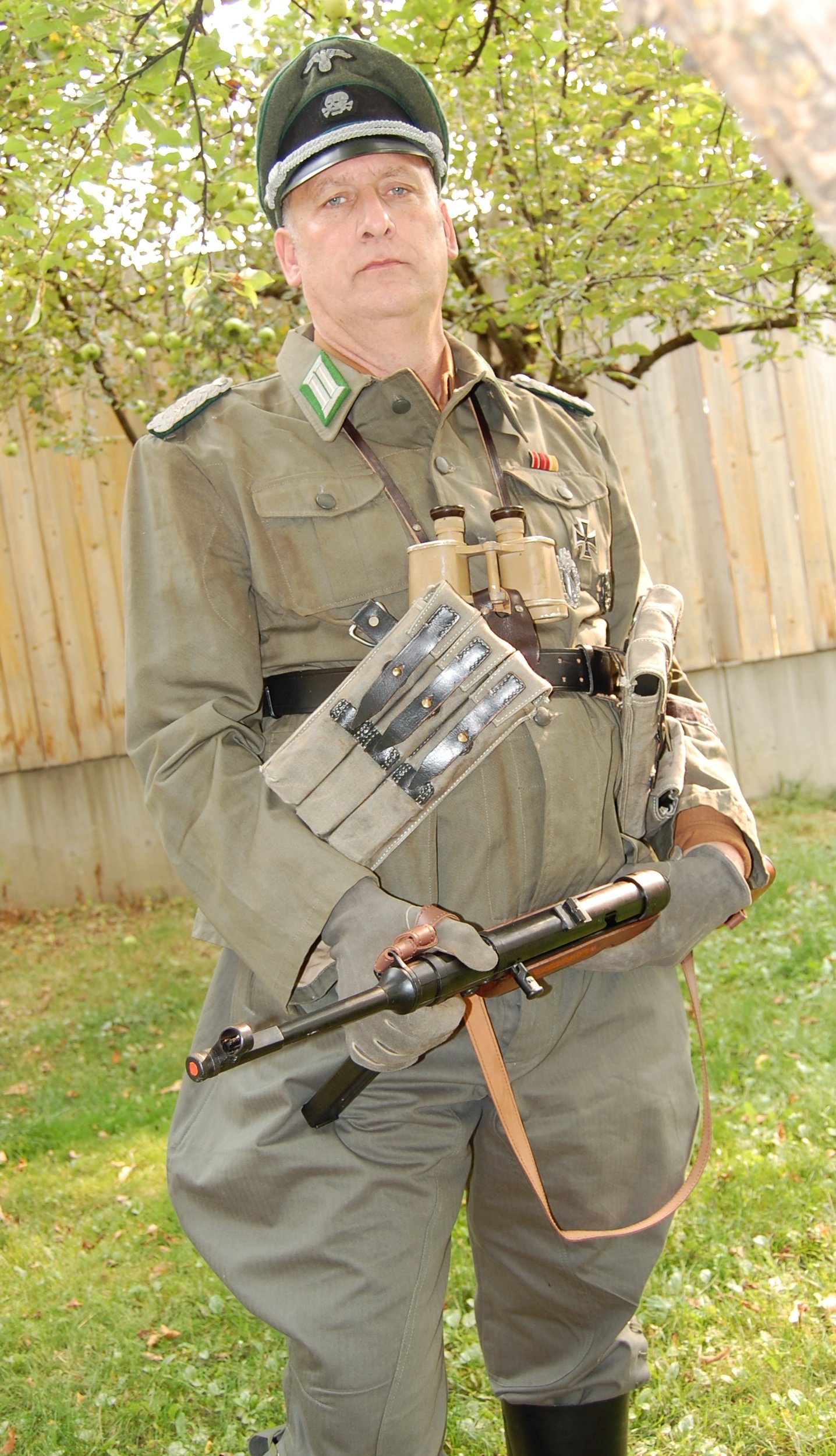
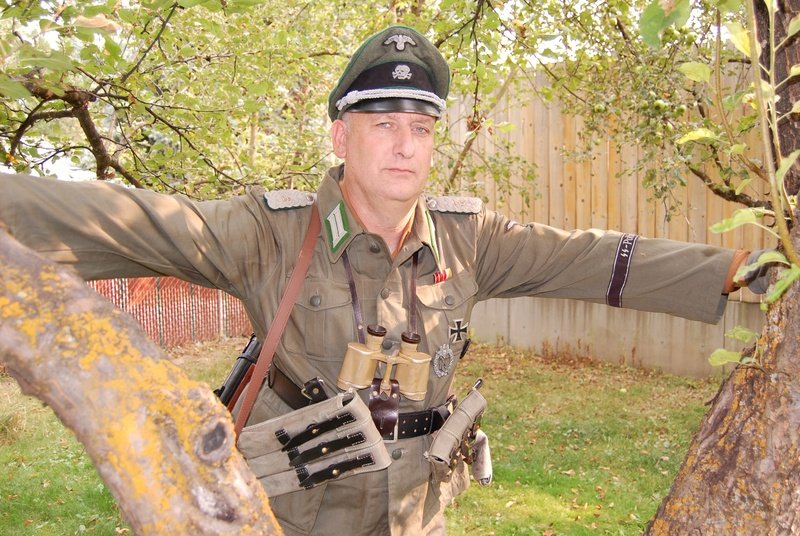
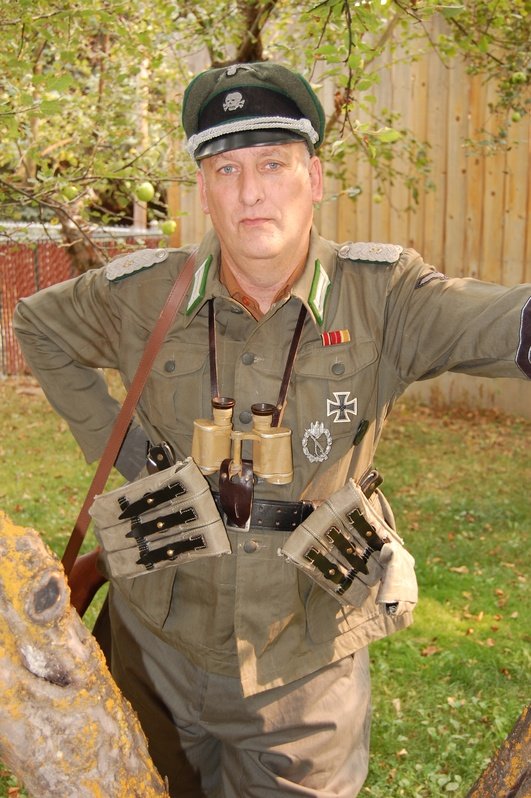
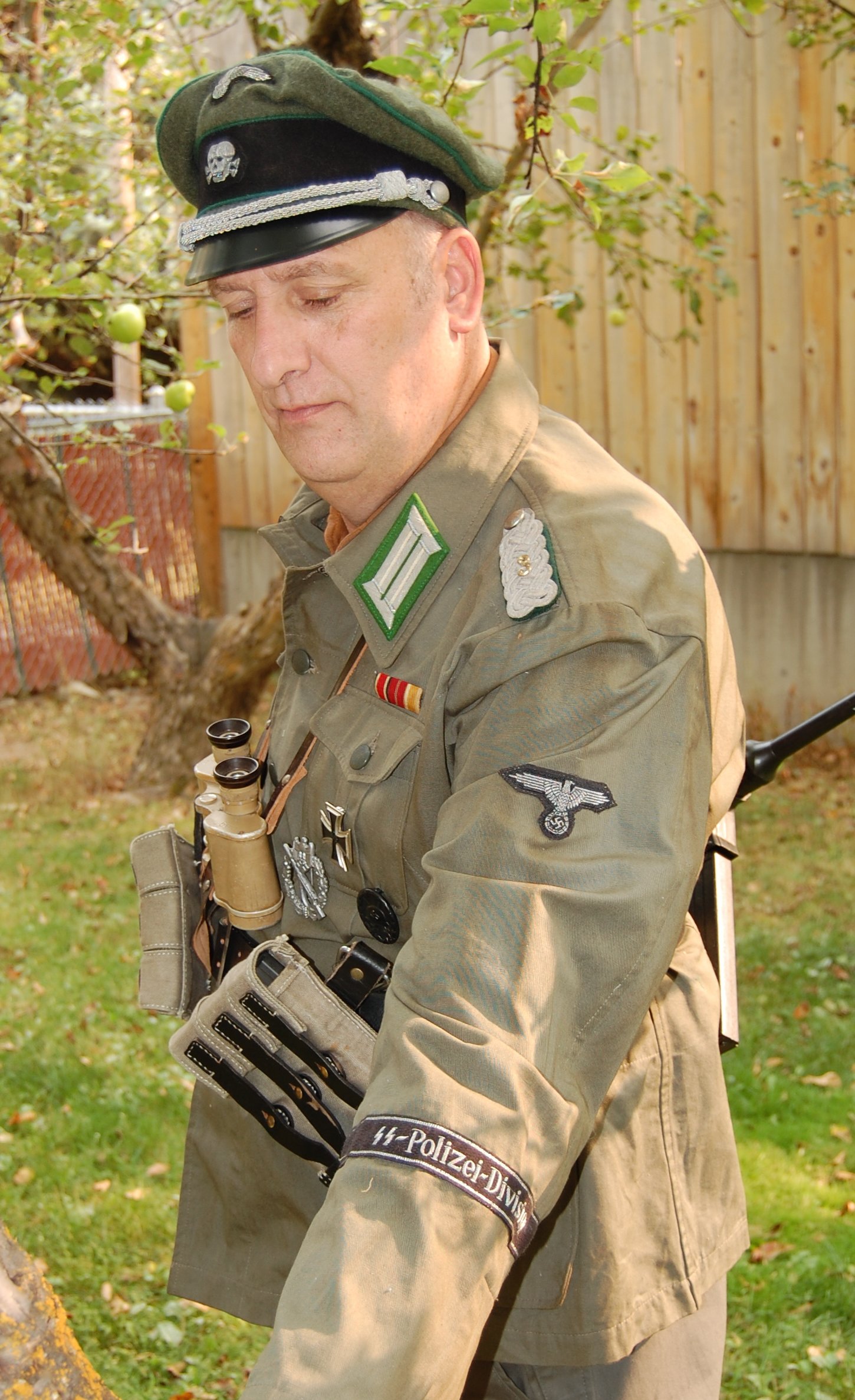
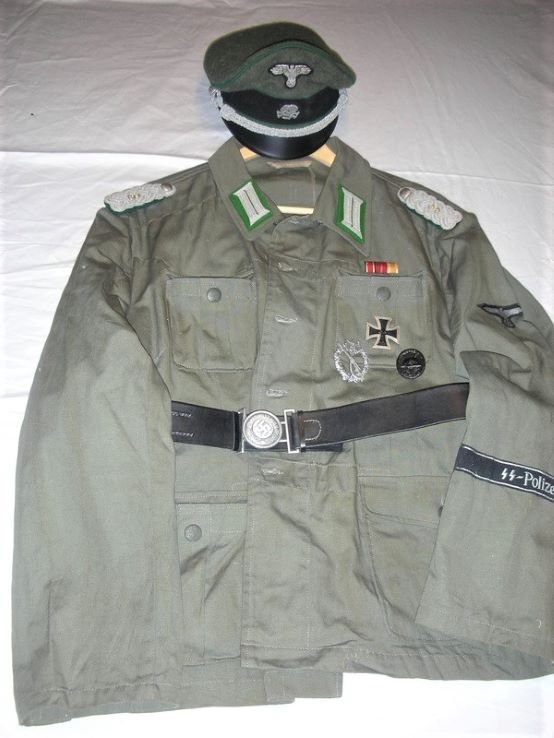
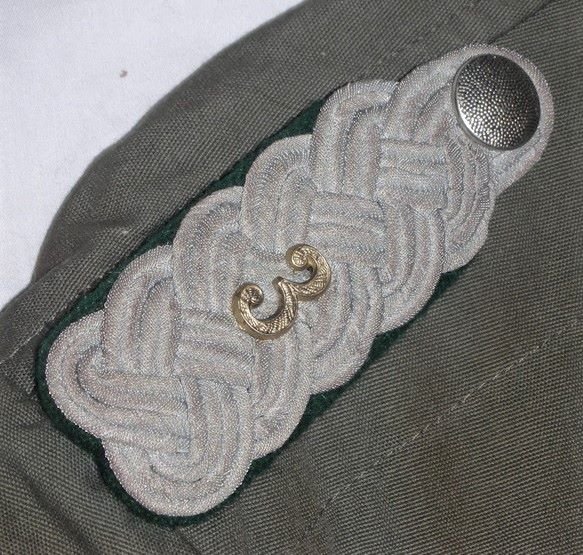
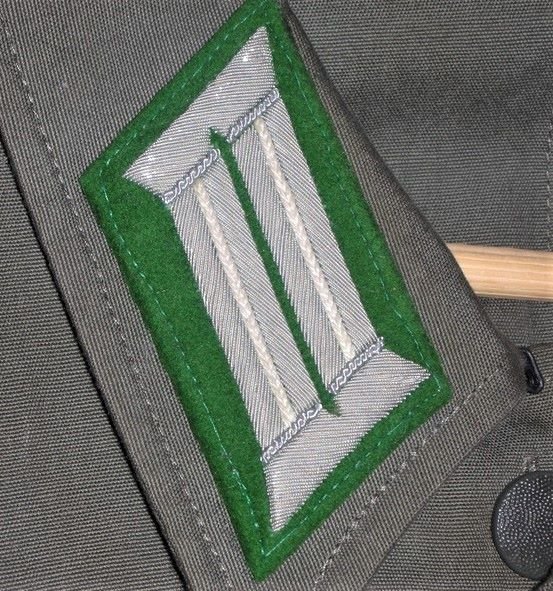
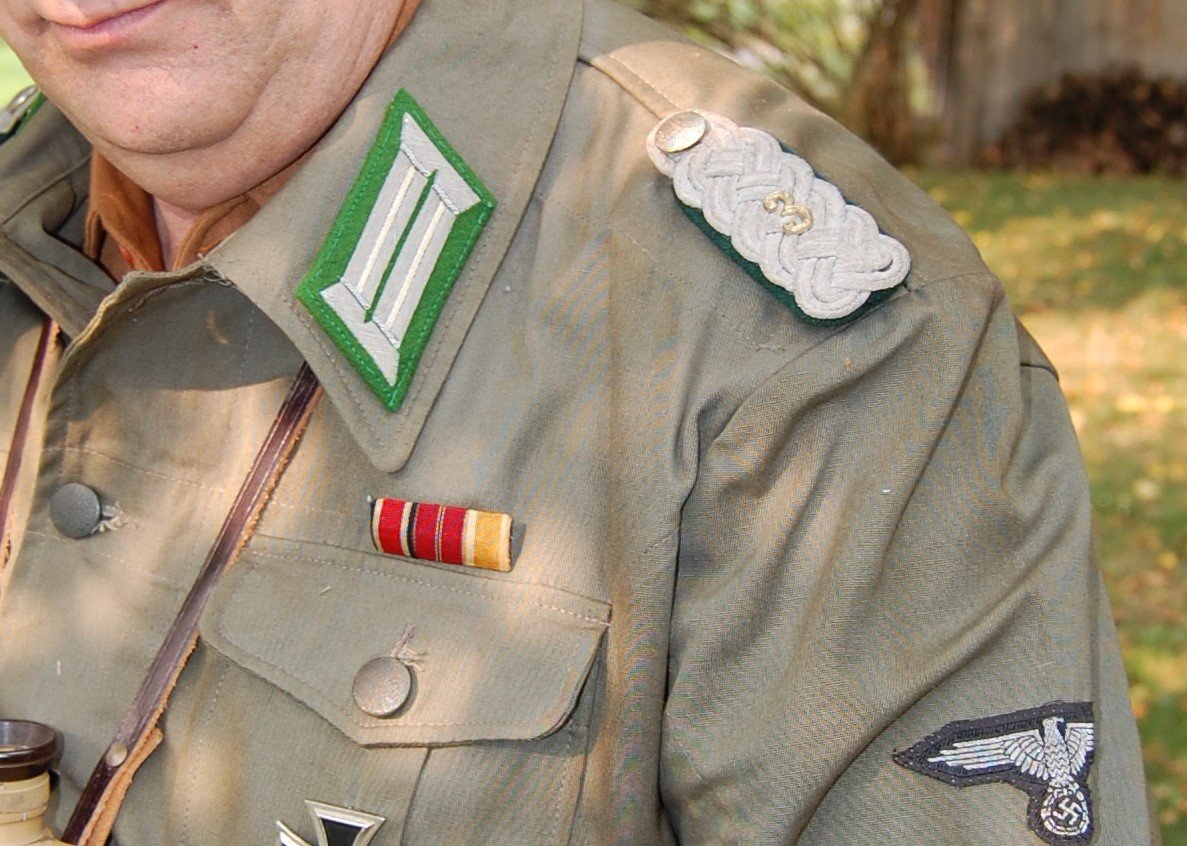
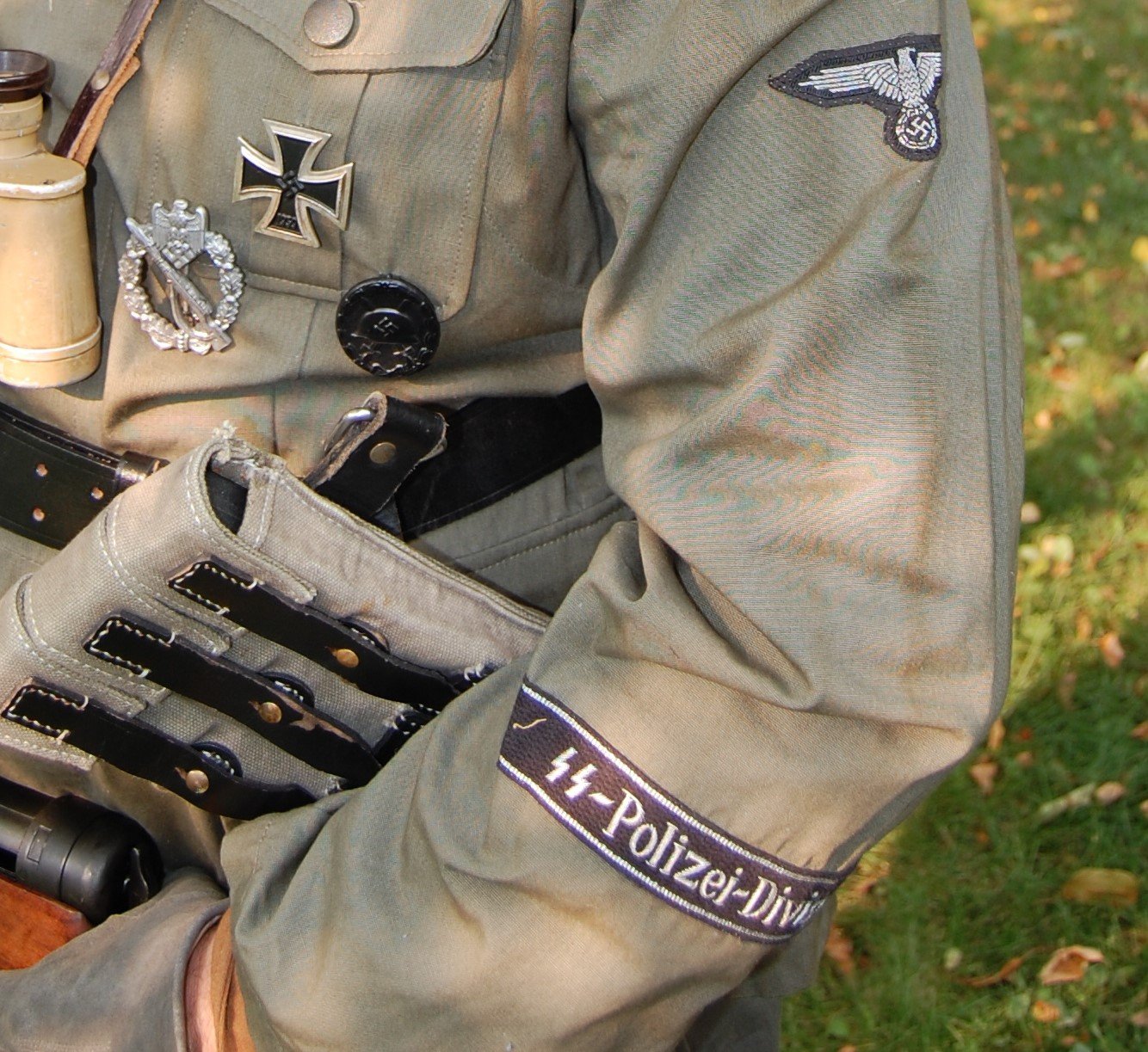
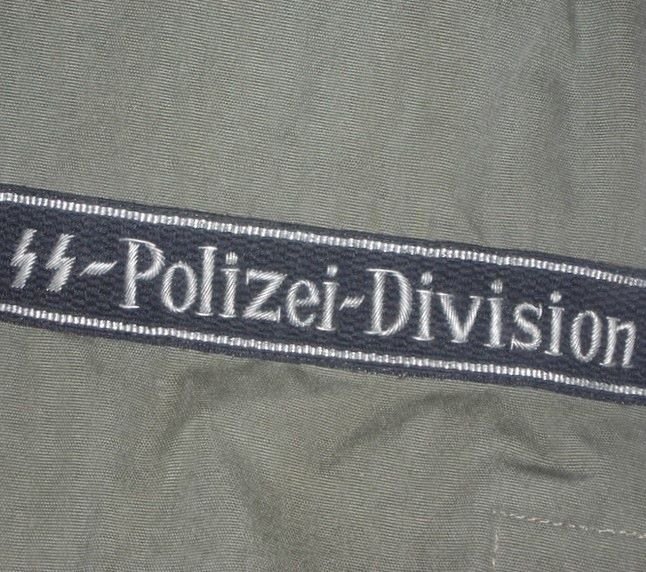
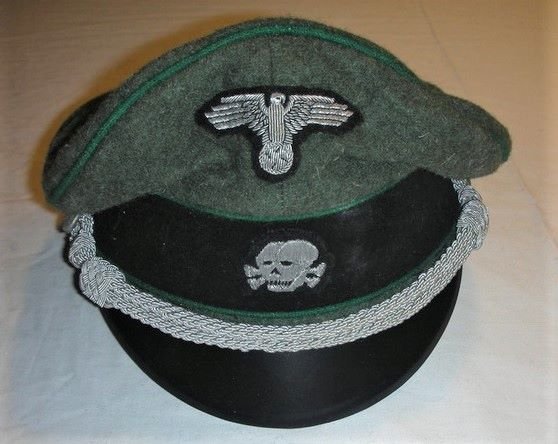
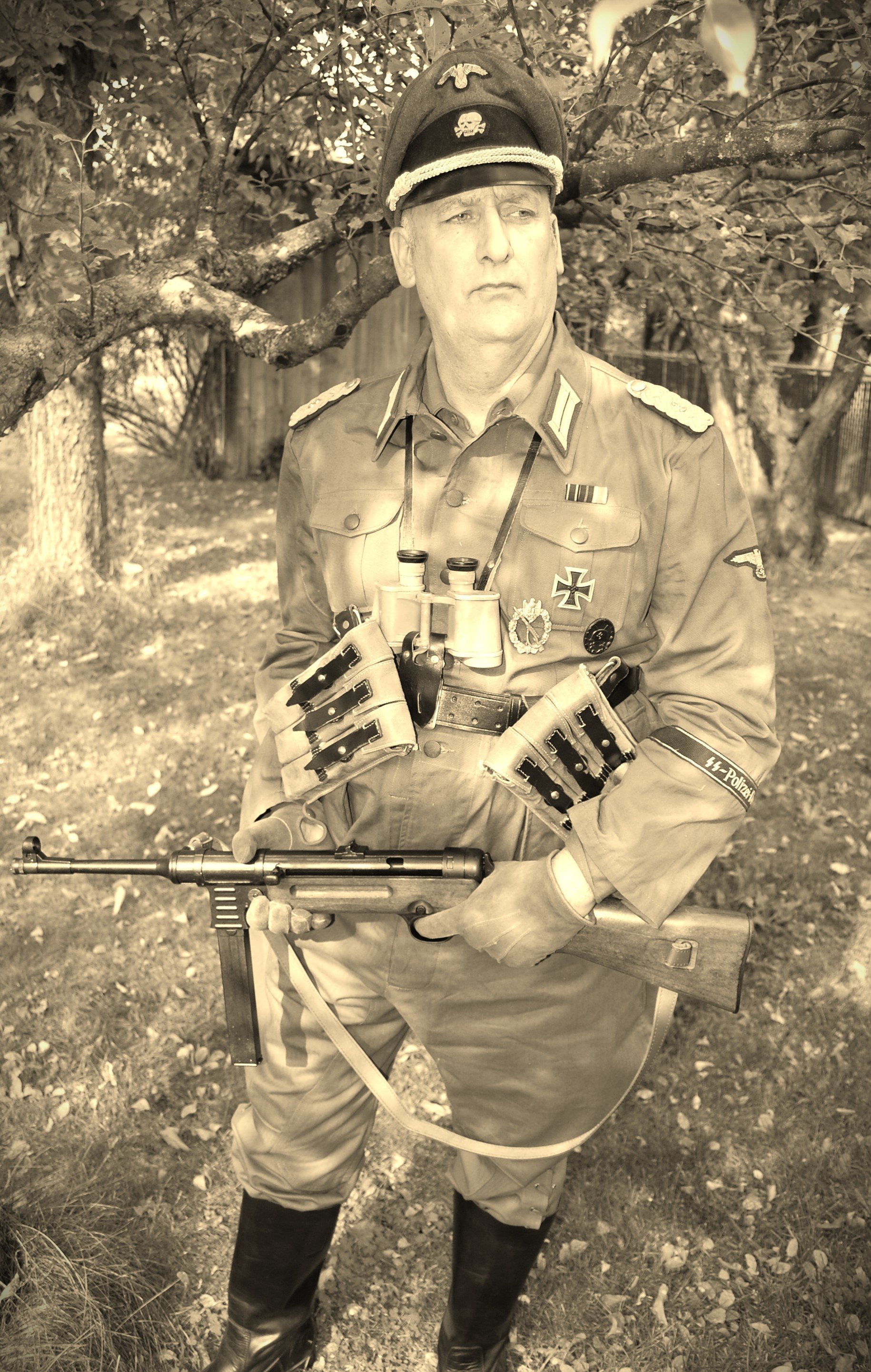

![[Probably,+two+SD+officers+questioning+a+Polish+cleric.].jpg](https://images.squarespace-cdn.com/content/v1/61355b53c1baef12641a2de9/1752454081789-NE1WA0E052KO2J6T4PD8/%5BProbably%2C%2Btwo%2BSD%2Bofficers%2Bquestioning%2Ba%2BPolish%2Bcleric.%5D.jpg)

